EXPAND YOUR MIND, REFINE YOUR WARDROBE
ZOOT SUITS
BENTLEY BOYS
PETER O’TOOLE
GAME OF THRONES

EXPAND YOUR MIND, REFINE YOUR WARDROBE
ZOOT SUITS
BENTLEY BOYS
PETER O’TOOLE
GAME OF THRONES

“SHOW A FEW FACIAL TICS AND THROW SOMEONE AROUND THE ROOM OR BLOW THEIR BRAINS OUT, AND PEOPLE THINK IT'S GOOD ACTING”
MAX RAABE
LESLIE PHILLIPS


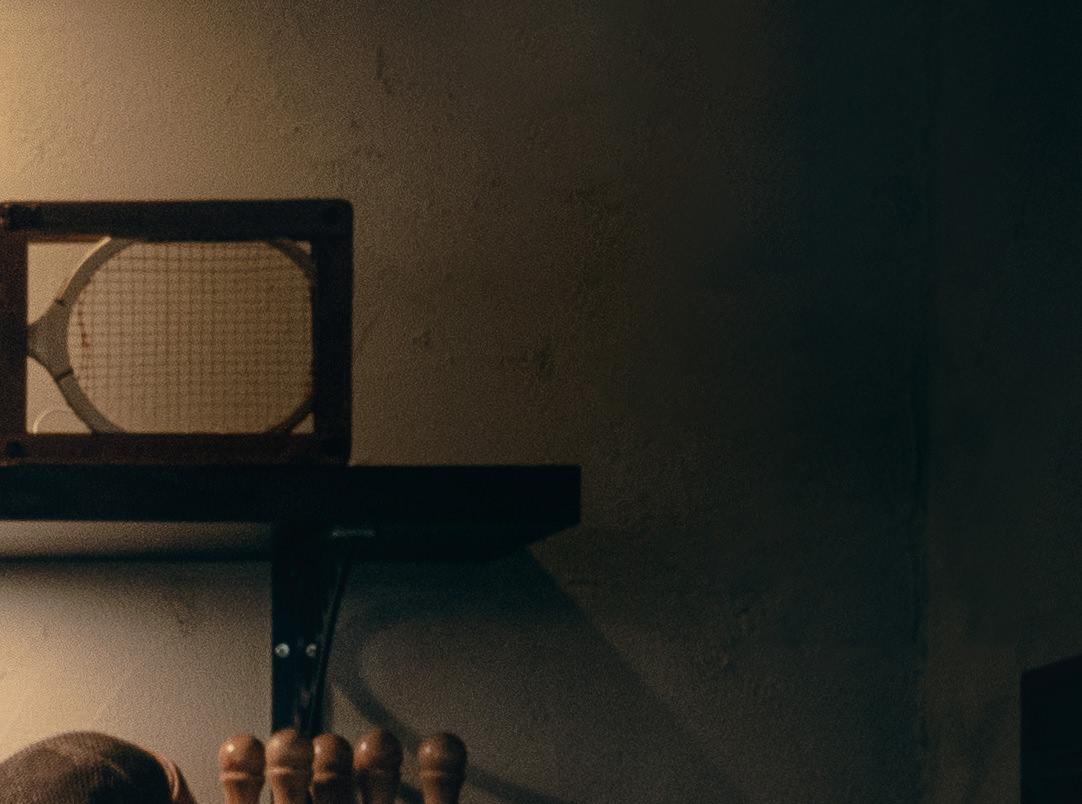





“One’s personal portmanteau should be selected, both upon purchase and for each day’s tasks, with as much care and attention as one’s suit of clothes.”
 Gustav Temple, CHAP Spring 22
Gustav Temple, CHAP Spring 22
Editor: Gustav Temple
Picture Editor: Theo Salter
Circulation Manager: Andy Perry
Art Director: Rachel Barker
Sub-Editor: Romilly Clark
Subscriptions Manager: Jen Rainnie

Contributing Editors: Chris Sullivan, Ed Needham
The editor of The Chap for the last 24 years is also the author of The Chap Manifesto, The Chap Almanac, Around the World in 80 Martinis (Fourth Estate), Cooking For Chaps and Drinking For Chaps (Kyle Books) and How To Be Chap (Gestalten). He is currently working on a book without ‘Chap’ in the title.
Chris Sullivan is The Chap’s Contributing Editor. He founded and ran Soho’s Wag Club for two decades and is a former GQ style editor who has written for Italian Vogue, The Times, Independent and The FT. He is now Associate Lecturer at Central St Martins School of Art on youth style cults. @cjp_sullivan
Ed Needham is the editor and publisher of Strong Words magazine, launched in 2018 to give book enthusiasts a fighting chance of keeping up with the blizzard of new titles, with reviews that don’t feel like homework. He was previously editor of FHM in its million-selling nineties heyday and managing editor of Rolling Stone in New York.


MARIE DE WINTER &
Our German correspondents are editors-in-chief of the German 1920s magazine Le Journal of the Bohème Sauvage. On their blog wintersturm.jimdofree.com, the ‘time-travelling journalists’ provide many articles in English about their diverse activities in the name of good (vintage) style.
David Evans is a former lawyer and teacher who founded popular sartorial blog Grey Fox Blog twelve years ago. The blog has become very widely read by chaps all over the world, who seek advice on dressing properly and retaining an eye for style when entering, whatever the age. @greyfoxstyle






ACTUARIUS
Olivier Woodes-Farquharson is an adventurer, diplomat, voice actor and writer, although not always in that order. When not travelling to obscure places that may or may not exist, he is most likely to be found at Cheltenham Races – the best place to blood his latest tweed – or furiously foraging in the English countryside.

A photographer and jazz singer inspired by all things vintage, especially the golden age of Hollywood, Noelle’s photographic work has been featured by the BBC and national press. Her sultry vocals have entertained establishments such as Ronnie Scott’s with swing band The Jive Aces. @noellevaughnphotography
Actuarius is an artist, essayist, photographer and journalist. A selfconfessed petrolhead, he mainly produces works based around his twin passions of Art Deco and mechanised transport, making the shortlist for the highly prestigious Guild of Motoring Writers Feature Writer of the Year in 2021.
Subscriptions 01442 820 580
Alf Alderson is an awardwinning adventure travel writer whose work appears regularly in the world’s leading newspapers, magazines and websites. He has also written and contributed to a wide variety of guidebooks on adventure travel, skiing, surfing, cycling, hiking, mountain biking and camping.
contact@webscribe.co.uk
John Minns has been a collector, buyer and seller of antiques and collectables from the age of nine, when he first immersed himself in the antique world by foraging London antique markets in the morning before school, then selling his finds to his eager school pals. His passion is still as strong today.
Email chap@thechap.co.uk
Website www.thechap.co.uk
Twitter @TheChapMag
Instagram @TheChapMag
Facebook/TheChapMagazine
ALF ANDERSON JOHN MINNS OLIVIER WOODESFARQUHARSON NOELLE VAUGHN FERDINAND STURM DAVID EVANS1 THOU SHALT ALWAYS WEAR TWEED. No other fabric says so defiantly: I am a man of panache, savoir-faire and devil-may-care, and I will not be served Continental lager beer under any circumstances.
2 THOU SHALT NEVER NOT SMOKE. Health and Safety “executives” and jobsworth medical practitioners keep trying to convince us that smoking is bad for the lungs/heart/skin/eyebrows, but we all know that smoking a bent apple billiard full of rich Cavendish tobacco raises one’s general sense of well-being to levels unimaginable by the aforementioned spoilsports.
3 THOU SHALT ALWAYS BE COURTEOUS TO THE LADIES. A gentleman is never truly seated on an omnibus or railway carriage: he is merely keeping the seat warm for when a lady might need it. Those who take offence at being offered a seat are not really Ladies.
4 THOU SHALT NEVER, EVER, WEAR PANTALOONS DE NIMES. When you have progressed beyond fondling girls in the back seats of cinemas, you can stop wearing jeans.
5 THOU SHALT ALWAYS DOFF ONE’S HAT. Alright, so you own a couple of trilbies. Good for you - but it’s hardly going to change the world. Once you start actually lifting them off your head when greeting passers-by, then the revolution will really begin.

6 THOU SHALT NEVER FASTEN THE LOWEST BUTTON ON THY WAISTCOAT. Look, we don’t make the rules, we simply try to keep them going. This one dates back to Edward VII, sufficient reason in itself to observe it.
7 THOU SHALT ALWAYS SPEAK PROPERLY. It’s really quite simple: instead of saying “Yo, wassup?”, say “How do you do?”
8 THOU SHALT NEVER WEAR PLIMSOLLS WHEN NOT DOING SPORT. Nor even when doing sport. Which you shouldn’t be doing anyway. Except cricket.
9 THOU SHALT ALWAYS WORSHIP AT THE TROUSER PRESS. At the end of each day, your trousers should be placed in one of Mr. Corby’s magical contraptions, and by the next morning your creases will be so sharp that they will start a riot on the high street.
10 THOU SHALT CULTIVATE INTERESTING FACIAL HAIR. By interesting we mean moustaches, or beards with a moustache attached.
8 AM I HOMBURG?
Readers submit photographs of themselves in their ‘Edens’

12 THE CORONATION: A CHAP’S GUIDE Torquil Arbuthnot shares the advice he has given to the palace on protocol and dress code at this summer’s royal beano
22 INTERVIEW: PADDY CONSIDINE
Chris Sullivan meets the affable man behind the iron mask in House of the Dragon
30 LES ROIS MAUDITS
The stories by Frenchman Maurice Druon that inspired George RR Martin’s historical epic Game of Thrones
36 LESLIE PHILLIPS
Andrew Roberts’ tribute to the great actor, who departed this earth last year aged 98

44 ZOOT SUITS
Chris Sullivan on the most inflammatory item of male clothing from the last century and why it caused riots in 1940s Los Angeles
54 LONDON BOY LOU
The sharp dressed man-about-town brings a splash of violent elegance to the streets of Whitechapel
66 GOOD HOMBURG
Gustav Temple follows the sartorial trail of the Homburg back to its roots in 19th century Prussia
70 GREY FOX COLUMN
David Evans admires the colourful eccentricity of David Hockney and searches for more colour in menswear

76 MAX RAABE

Our Teutonic correspondents meet the silky-voiced Berliner to discuss the state of vintage style in Germany
86 THRONE OF GAMES
Henry Cockburn advises Chaps in search of mediaeval splendour in Middle England
93 THE WITCH OF WALL STREET
Olivier Woodes-Farquharson on the dangerously parsimonious habits of Hetty Green
100 DRINK: MARASCHINO EXCELSIOR
Gustav Temple samples the cherrylicious range from Italian brand Luxardo
106 THE LANESBOROUGH GRILL
Alexander Larman and Gustav Temple dine in the shadow of Buckingham Palace
114 BENTLEY BOYS
Actuarius relives the glory days of Bentley by taking a spin in a recreated Bentley Blower
121 MAZDA MX-5
Alf Alderson road tests the affordable sports car that handles like a much pricier roadster
130 AUTHOR INTERVIEW
Ed Needham meets Tony King, publicist to such luminaries as Elton John, The Rolling Stones and The Beatles
136 BOOK REVIEWS
New books from priests, butlers, people hackers and men of letters
140 THE RULING CLASS
Stephen Arnell asks whether Peter Medak’s 1972 satire starring Peter O’Toole satire has finally come of age
148 THEATRE
Ruby Demure treads the haunted boards at the Theatre Royal, Brighton, in the footsteps of Marlene Dietrich, Lauren Bacall and Diana Dors
157 ANTIQUES
John Minns allows the ink to flow through his Waterman Taper In-Cap to provide a history of the fountain pen
162 CROSSWORD
WE REQUESTED PHOTOGRAPHS FROM READERS OF THEMSELVES IN THEIR HOMBURGS, AND THE RESPONSE WAS PRECEDENTED, FOR EVERY CHAP READER SHOULD OWN ONE OF THESE ELEGANT ITEMS OF HEADWEAR.

In the next edition, we shall be tackling the Straw Boater. Please send your photos to chap@thechap.co.uk

“I do not claim to have successfully got down with my Bad Homburg self,” writes Clive Collett, “nor that I Eden come close... I leave such judgements to your good selves.”
Sir, we have no hesitation in declaring you ‘Star Homburg’, due not only to the excellent quality and fit of your ‘Eden’, but also to the natty ensemble accessorising it. As such, we can overlook the terrible puns.
“I have on occasion been known to leave the Fedora or Bowler at home in favour of something more classy,” writes David Hodson. “Pleasant as it is to don one of the aforementioned hats, I believe the Homburg has a tad more panache about it, though sadly is not seen often enough.”
Quite so, sir. We should also compliment you on your pocket camera, which must allow you to take photographs of people without them even noticing.

“Please find attached a photograph of m’self,” writes Jonathan Ross, “wearing a Homburg with a recently acquired Inverness cape, standing outside Gallery 286 beside ‘The Conspirator’ by Gil Whyman.”

At first we were unsure whether this was in fact a Homburg, and whether it can indeed be worn with an Inverness Cape. An enquiry to the management of Lock & Co came back with the reply, ‘With a moustache like that, anything is permitted.’
Where would this publication be without Paul Lawford? Most likely in some flamenco tap room in Andalucia, with hopefully something higher in alcohol content than Señor Lawford’s bathwater, though this is unlikely to exist.
“A photograph is attached of myself donning a Homburg on Bloom’s Day,” writes The Penguin Chap, “hence the reading material of Joyce’s Ulysses.”


Sir, your ability to read the works of James Joyce in reverse is rather impressive, and we are only glad you didn’t decide to wear your excellent Homburg backwards as well.

Ian Taylor, like the Penguin Chap (previous page) also has the ability to read books backwards, but sadly no skills with a razor, whether forwards or backwards.
“In response to your most recent cri de chapeau,” writes Stephen Myhill, “I attach an image for your consideration. I trust it may be looked upon kindly, following the disappointment of failing to make the fez muster.”


Sir, how could we possibly resist such a plaintive cry, especially from the rather melancholyfaced love child of John Waters and Robert Crumb?
Mark Wolff put on his finest outfit and stood outside a gift shop hoping for employment, but all he got was a man in a Homburg asking to have his picture taken with him, which didn’t pay very well.


Whereas Sean Lacey has gone beyond melancholy, which is not surprising for the love child of Lytton Strachey and HP Lovecraft.

Despite Rick Evan’s (sic) alarmingly typing his name with an apostrophe, we were relieved that, at last, one of our submissions made the sine qua non reference to Edward VII, supposedly the inventor of the Homburg (see page 66). Congratulation’s (sic), sir.

“A photograph of myself wearing a ‘chapeau diplomate’ with my spouse in Belgium,” writes Dominiek Dendooven, from Belgium.

Sir, your steely gaze, obviously fake spectacles and glamorous accomplice suggest you are on the wrong side of le corps diplomatique. We shall get Tintin on the case immediately.
“I’d like to submit a couple of photos,” writes Andrew Parsons, “of my vintage mid-century Eden from Germany (a Homburg from Hamburg, no less!)”
Another shady customer clearly up to no good in a gentlemen’s convenience, having probably stashed a secret microfilm in the cistern. The Homburg clearly doubles as the choice of headwear for secret agents.
“I am sporting a prewar black Homburg with moss green band by Lock & Co,” writes Dominic Carey, “paired with 1930s kid leather gloves in cream and a green silk scarf.”

If only utility bills were anything like they were pre-war, then you wouldn’t need to wear this many clothes merely to walk between one room and another, sir.
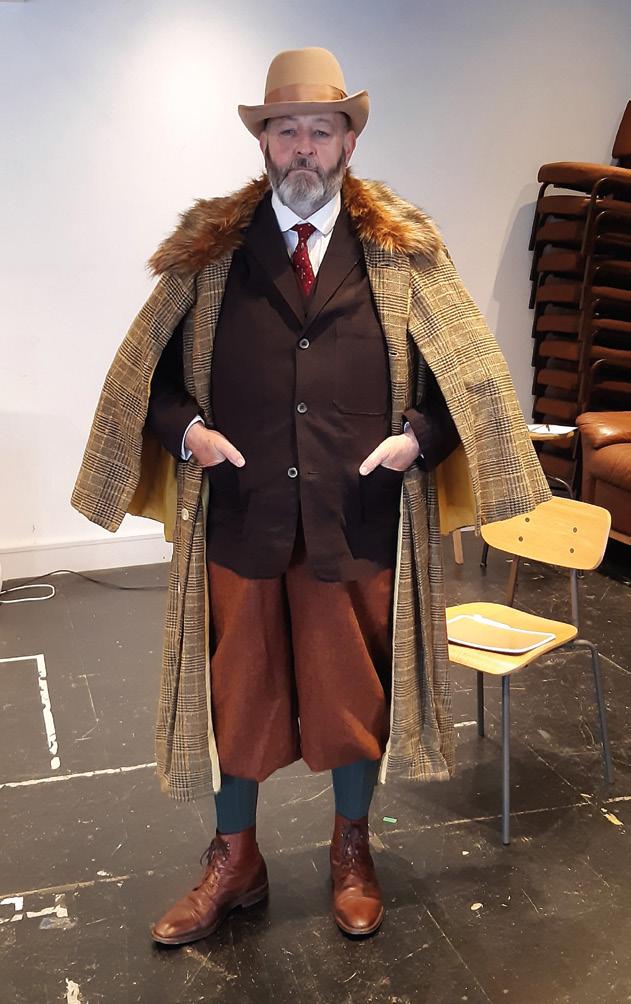
“Here attached a picture of me with the Homburg,” writes Luigi Sbaffi. “The photo was taken in Oxford last spring.”
Looks more like winter to us, sir, but let’s not quibble. How refreshing to see a Homburg paired with black tie, as it should be, especially in Oxford.


“Upon arrival at the Abbey, the King will be reminded of the health and safety regulations and shown where the fire exits are. He will also be asked for a voluntary donation to the Abbey’s restoration fund. He will be escorted down the nave by the Garter King of Arms, the Beige Dragon Pursuivant, a phalanx of Pearly Kings and four whirling Dervishes”
So many years have passed since the last royal coronation took place that at the time I was still being referred to as ‘Arbuthnot minor’ and ‘Arbuthnot –detention’ by various schoolmasters. So it was with some trepidation that I answered the
call from the Palace and agreed to advise them on sundry aspects of this forthcoming beano. I was told that King Charles wished to ‘modernise’ and ‘slim down’ the ceremony, and also to include all faiths rather than just that of the Bolshevik C of E. Happily, I have experience of events of this

importance and dignity, having once organised a stag weekend in N’Djamena. Since I have insider knowledge of how the big day will proceed, I thought it only fair to warn readers of The Chap what to expect, and how the ceremony will differ from that of Elizabeth II’s coronation.

The King expressed an interest in using a dry-slope skiing centre for the ceremony, but the only one which has an appropriate licence is Cleethorpes Alpine Wonderland, and to book that for a Saturday would cost the taxpayer £400, and in these times of austerity this would seem like flippant spendary, so I advised against it.
King Charles is known to be a strong supporter of green issues, and therefore neither the internal combustion engine nor methaneproducing horses will be used. Instead, he will be conveyed to Westminster Abbey in a gold-painted dogcart pulled by eight of the late Queen’s favourite Corgis, led by the alpha male, Pickles Peregrine ap Rhys. The Groom of the Scoop will follow close behind. The King will be accompanied by his emotional support animal (a gerbil called Carlos) and the procession will be escorted by a squadron of the Blues and Royals
on pre-paid Santander bicycles. The Thames will be patrolled by the Special Boat Service in kayaks and pedalos. The King will have ‘preloaded’ for the ceremony beforehand, by listening to noted thespian Mr. Raymond Winstone give a medley of stirring speeches from Shakespeare’s more bloodthirsty plays.
Upon arrival at the Abbey, the King will be reminded of the health and safety regulations and shown where the fire exits are. He will also be asked for a voluntary donation to the Abbey’s restoration fund. He will be escorted down the nave by the Garter King of Arms, the Beige Dragon Pursuivant, a phalanx of Pearly Kings and four whirling Dervishes. It is expected the King will do away with the more archaic dress code and instead wear military uniform rather than knee-breeches. To show he is a man of the people, he will wear the ceremonial uniform of a corporal in the Royal Army Pay Corps.
Once the King has taken an oath and made the Accession Declaration, an ecclesiastic presents a Bible to the sovereign, saying “Here is Wisdom; This is the royal Law; These are the lively Oracles of God; You the Man!” Instead of the King James
version, a modern rendering of the Bible, Jesus Is My Co-pilot, will be presented. The King will then proceed to the throne for the anointing, having first checked that Prince Andrew has not placed a whoopee cushion on it. Due to an administrative oversight, the Dean will have forgotten to fill the ampulla with consecrated oil, so a bottle of ‘Be Good to Yourself’ French dressing, found in the sacristy fridge, will be substituted. While performing the anointing, the Archbishop recites a consecratory formula recalling the anointing of King Solomon by Nathan the prophet, Zadok the priest and Ming the Merciless.
While the anointing is happening, the Queen Consort will nip out to the royal smoking area by the dustbins, where she will graciously accept a Woodbine from behind the ear of one of the footmen.
The sovereign is then enrobed in the colobium sindonis (shroud tunic), over which is placed the supertunica and regulation high-vis gilet. He then checks the hallmarks on the Crown Jewels and buffs the sceptre with the royal sleeve. The King


will lighten the proceedings by muttering “Left a bit, right a bit” in his Neddie Seagoon voice, as the Archbishop of Canterbury places St Edward’s crown on his head. At this moment, the guests in the Abbey cry in unison three times, “God Save the King!” and “Death to the French!” The trumpeters sound a fanfare and church bells ring out across the kingdom, as gun salutes echo from the Tower of London and tutting echoes from the Labour front bench.
Normally the sovereign would leave the Abbey to the sounds of the choristers belting out Top 20 hits from Purcell and Handel. However, in his zeal to modernise the ceremony, King Charles has decreed that the music will reflect the four sovereign nations of the United Kingdom. Therefore, the melodies will be provided by popular Belfast beat combo Stiff Little Fingers (Northern Ireland), The Wurzels (England), the Bay City Rollers (Scotland) and Cardiff crooner Shakin’ Stevens (Wales).
Historically, the coronation was immediately followed by a banquet held in Westminster Hall,
but this year’s afterparty will be held at Pizza Express in Woking, due to the substantial discount now offered the royal family. Traditionally the King’s Champion (the office being held by the Dymoke family) would ride into the hall on horseback, wearing a knight’s armour and throwing down a gauntlet, and make a proclamation of the readiness of the champion to fight anyone denying the monarch. The current King’s Champion is Tyson ‘Irongloves’ Montmorency de Coverley Dymoke, a scrapmetal dealer from Bermondsey, who will break with tradition by making the proclamation barechested from the car park of the Lamb & Flag: “Verily, if thou reckon thyself a little bit tasty, come and have a go.”
By the end of the day, the nation will be in a state of stupefied contentment. They will then settle down to celebrate like their Anglo-Saxon forbears by eating coronation chicken sandwiches, quaffing chilled continental lager and watching reruns of Dad’s Army on the television. n
1. All pillar boxes must be painted gamboge for the day of the coronation.
2. For a month before the ceremony, binary messages will be beamed into outer space asking aliens not to invade on 6th May.
3. The Archbishop of Canterbury can request that his fee for the day is paid in hogsheads of brandy or lottery scratchcards.
4. Due to the limited seating, peers decide which of them will attend the ceremony by a game of British Bulldog in Windsor Great Park.
5. Daily newspapers are prohibited from printing cryptic crosswords on a coronation day.
6. Airline pilots are only allowed to announce the moment of crowning on their tannoys if they are flying over a part of the map that used to be coloured pink.
7. It is both against the law (1648) and compulsory by law (1847) to wear gloves during a royal coronation.
8. A space at Westminster Abbey is reserved for a big game hunter, in case any wild beasts invade during the ceremony. This is due to the King’s fear of being eaten by a polar bear.
9. It is considered good luck to invite a tobacconist into your house on the day of a coronation.
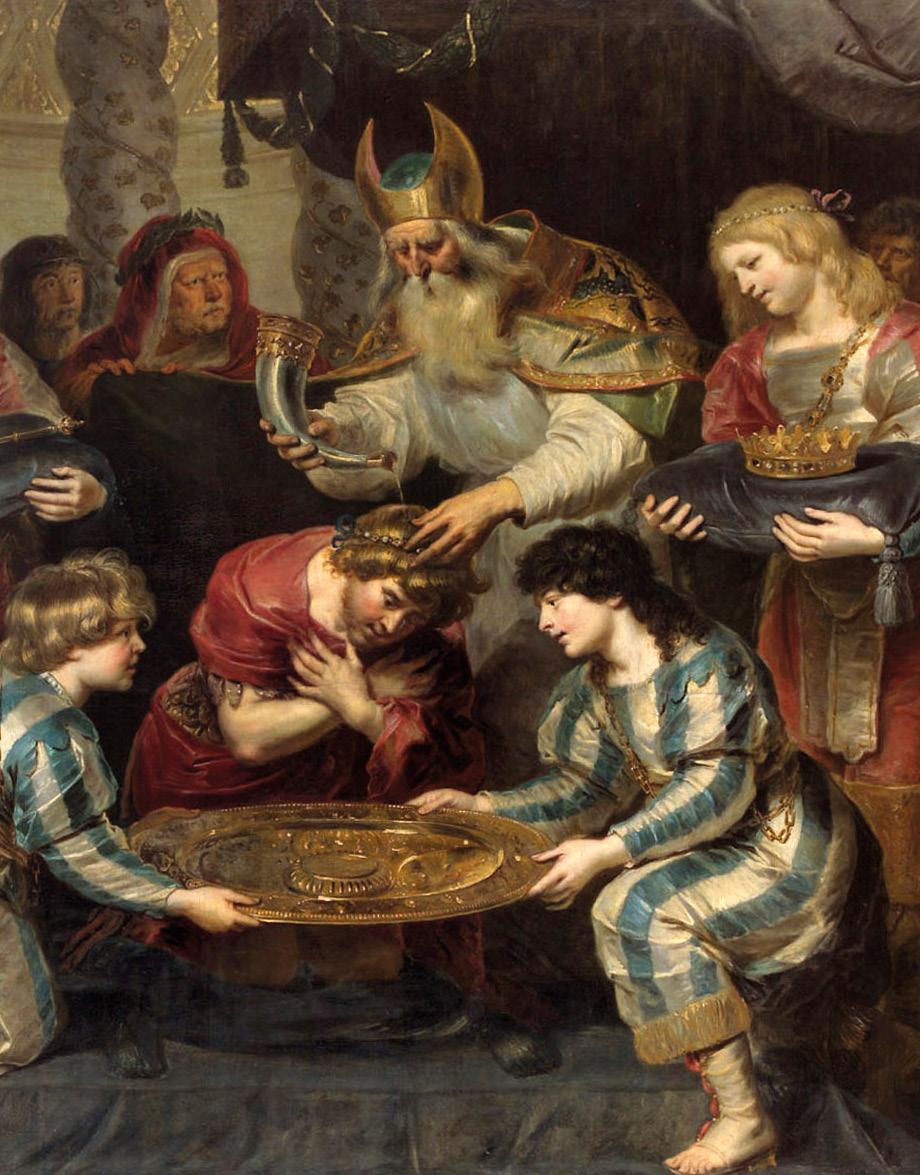
10. Jose Cuervo Tequila and DFS Sofas are the official sponsors of the event.
11. By royal tradition, on the night before the coronation King Charles will let off all the fire extinguishers in Buckingham Palace.
12. On the day after a coronation, commoners are allowed to walk around Regent’s Park in an anti-clockwise direction.
An advice column in which readers are invited to pose pertinent questions on sartorial and etiquette matters, and even those of a romantic nature. Send your questions to wisbeach@thechap.co.uk

Craig Feltham: I should like to dress appropriately to watch the King’s coronation on television on 6th May this year. Could you advise me whether black tie, morning dress or tweeds are the correct attire?
Wisbeach: This all depends on whether you are watching the coronation ‘live’ during the morning of the sixth, or whether you are watching it on a ‘catch-up’ service later in the evening. If watching it live, then Wynciette pyjamas, a silk dressing gown with a vibrant pattern (peacocks or fleur-de-lys, for example) and a pair of velvet Albert slippers with an embroidered royal crest in gold would be suitable. If watching in the evening, then full military ‘Number 1’ kit must be worn, for whichever regiment you belong to. White cotton gloves are traditional, though not obligatory, as they make it difficult to use the mute button on the remote control during the adverts.

Montague ‘Chaps’ Gristle: I have a Landing Craft Utility (LCU MK.10) as I prefer their versatility to a motor car. Imagine my chagrin when I received a parking ticket for exceeding my time at J Sainsbury in Cheam. The Parking Warden said that the LCU was occupying a space that could have fitted 50 cars, end to end. I am of the opinion that I shouldn’t pay the fine, as my LCU is more boat than car. Do you agree?
Wisbeach: I am in total agreement, sir, and believe you should contest the fine. If the local council’s parking department still insist, I would pay their office a visit in your LCU, and see how many parking tickets they issue when their building has been razed to the ground. ...
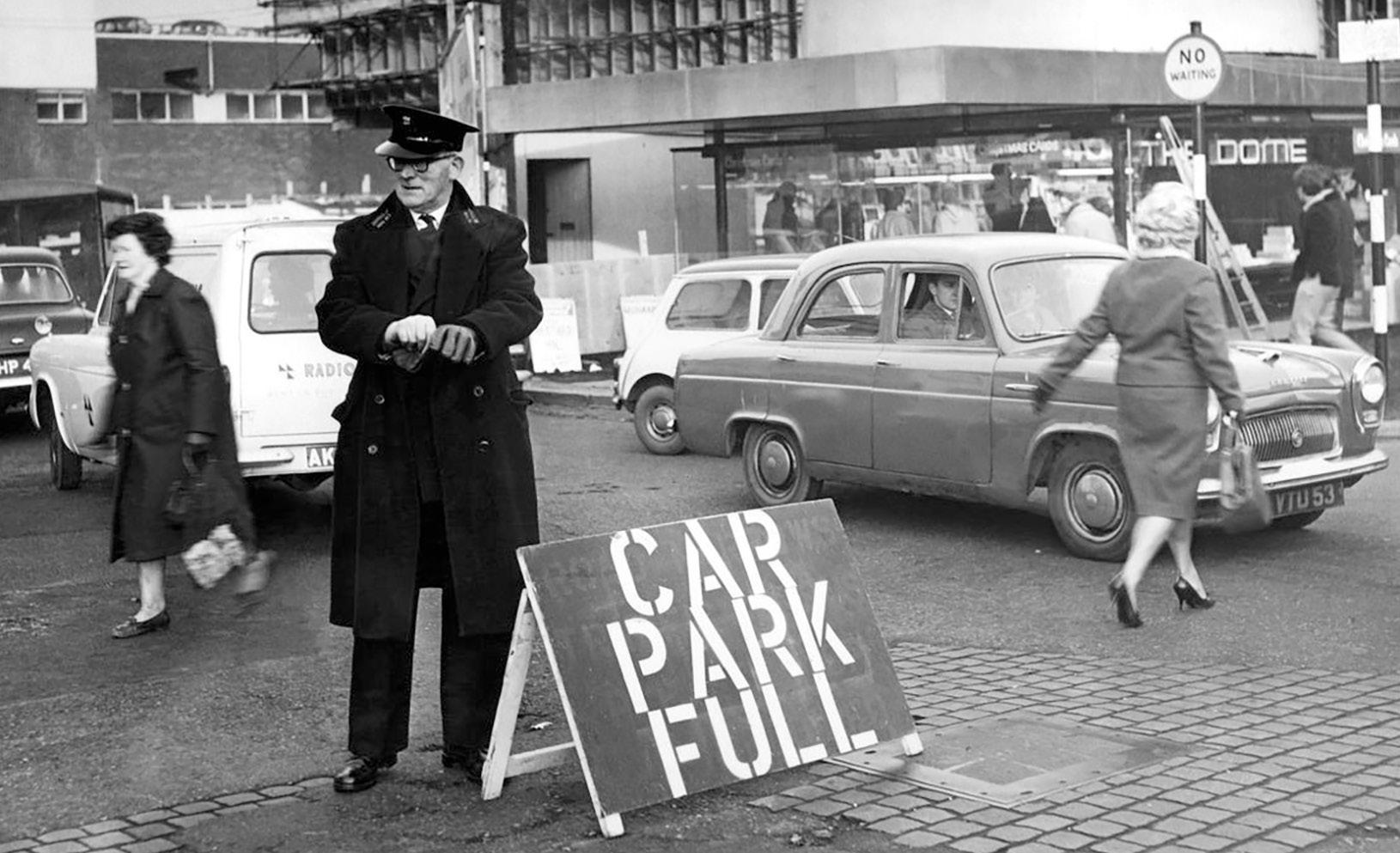
Simon Creasewell: I have heard that British club ties have the stripes running from left kidney to right shoulder, whereas American ties have the stripes running ‘to the heart’, from right shoulder to left kidney. But what if the stripes are horizontal? Which nation does the tie hail from, in that case?

Wisbeach: You are quite correct, sir, and this tradition is said to originate from the way in which
rifles were slung over soldier’s shoulders; in the US from right to left and in the UK the other way round. A British officer wearing a regimental tie under his uniform would never countenance the stripes going in the opposite direction to his rifle. As to the national origin of a tie with horizontal stripes, sir? Most probably French. ...

Montague ‘Chaps’ Gristle: My bunions are giving me the jip. Transporting an ice pack or a bag of peas wrapped in a tea towel in my valise is grossly inconvenient. When I use one on the bus, my fellow passengers pointedly stare out of the window as I nurse my ailments. The advice I read on the NHS website regarding bunions is ‘Do not wear high heels or tight, pointy shoes’. I do not. What should I do?

Wisbeach: The NHS advice is sound, on a general sartorial level as well in the case of bunions, for no gentleman should wear high heels or pointy shoes, unless they work in the theatre. One should instead, when faced with this condition, take a sartorial tip from Mr. David Hockney and wear a boldly checked tweed three-piece suit and a pair of Crocs, preferably in yellow (see page 71).

campfire, where local tribesmen are cooking goat. Around me are the glories of the mountains. It is a beautiful place to be, Wisbeach. So beautiful that it has inspired me to write a poem, which I have titled On Tirich Mir, in the Hindu Kush. I have written four stanzas, but now seek my final rhyming couplet. The penultimate line reads “Oh, how happy I am to be, on Tirich Mir, in the Hindu Kush.”
Can you please furnish me with the last line and a word that rhymes with ‘Kush’. All I’ve been able to come up with is ‘tush’, ‘bush’ and ‘mush’.
Wisbeach: More than happy to oblige, sir, though please bear in mind that I am no Pam Ayres; I shall nevertheless do the best I can.
It is so magnificent here, on Tirich Mir, that I do declare it makes my mind go whoosh.
I respectfully request readers, in future, to make enquiries of a more sartorial nature, which can be sent to me at wisbeach@thechap.co.uk n
Montague ‘Chaps’ Gristle: I am on the peak of Tirich Mir, in the Hindu Kush. Below me I can smell a





Chris Sullivan meets the Midlands-born actor who has played gritty characters in British indie films, television goodies and baddies and, most recently, the doomed King Viserys in House of the Dragon
In all my decades as interviewer of both actors and directors for many of the UK’s finest broadsheets, I cannot recall any actor of renown who is less up himself than Paddy Considine. He seems like a man who has inadvertently become famous for doing something he never had ambitions to do and, even though he is extremely adept, still seems rather surprised at his success.
“I’ve never had a plan,” chuckles the amiable thespian, sitting in the Harley Davison Office in Fitzrovia, casually dressed in jeans and leather jacket. “I feel as if I’ve been shifted along towards this almost by accident and coincidence. I didn’t start acting till I was 25. Before then I’d only done the odd school play. So I always had a career as a
“I go to Hollywood and people blow smoke up my backside for a week and tell me I’m the greatest thing that ever lived, and I have no problem with that. It doesn’t go to my head, as I know that they will do the same to the next person who walks through the door. I find it really funny”
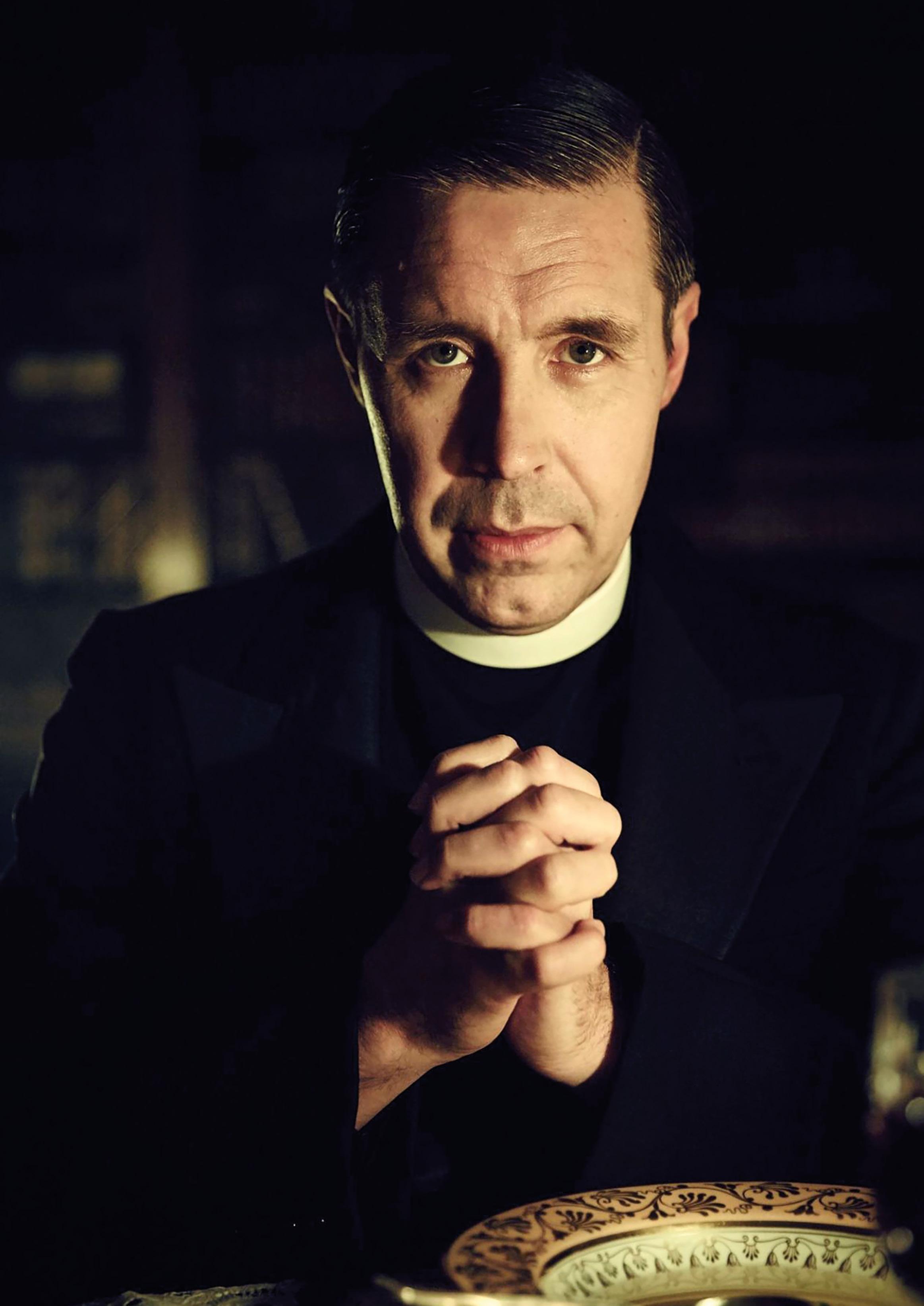
filmmaker, someone behind the camera rather in front of it, at the back of my mind.”
Considine’s first acting role came via his friendship with eminent director Shane Meadows. “We met at Burton College,” recalls the actor fondly. “And became this combustible duo who you either loved or hated but could not ignore. We even had a band together, with me drumming and him singing. Shane asked me to be in his film, A Room for Romeo Brass, so I gave it a go and became an actor because of that film, which is the most important and favourite movie I’ve done. Everything rolled on from that.”
“In school Paddy never did anything good in the workshops,” says Meadows, director of This is England, among many other triumphs, “but once you got him in the canteen, he could mimic anyone. Paddy would come over to my place and put on these different guises, catch a glimpse of himself in the mirror and literally would drop straight into that
character. When Paddy first saw my films, TwentyFour Seven and Small Time, he realised he had to give acting another go. After making A Room for Romeo Brass, he said he didn’t realise making film could be like that... and it was quite a revelation for him. He is a natural.”
Considine attracted the attention of James Sheridan, the Dublin-born director of My Left Foot, Bloody Sunday and In the Name of the Father, who cast him in the lead role for In America (2002). Considine’s rendering of Johnny Sullivan, an Irish fellow who’s moved to New York with his family in search of a better life but finds the polar opposite, was unimpeachable to the last twitch of his jaw. “Talk about being thrown in the deep end,” says Considine, still obviously taken aback. “I thought, ‘Oh God, Jim made all these films with Daniel DayLewis, so what am I going to give Jim that Daniel hasn’t?’ But Jim was Ireland’s top filmmaker and my Irish dad was dying at the time, so I took a chance

and did it for my dad so he could be proud of me. Unfortunately, my father died just before filming started. Still, I learned a lot about how to work with actors from Jim and it put me on the map.”
Now highly regarded as an actor who always delivers the goods in a rather quiet, no-nonsense way, Considine was born on 5th September 1973 in Burton on Trent, Staffordshire. He grew up in a council estate in Winshill at the North of the city, with his brother and four sisters. His entrée into the world he now inhabits came in 1990, when he enrolled on a National Diploma in Performing Arts at Burton College.
“I dropped out of the drama course, though, and had no desire to be an actor whatsoever,” he recalls, his Midlands accent totally undiminished. “I then worked on building sites, was unemployed and used to hang out at the college. It was somewhere to go even though I wasn’t on a course. Then Colin Higgins, the photography, film and video tutor
caught me hanging about and got me to do a course in editorial photography. I ended up having photos in The Guardian and Independent and I loved it.”
Nevertheless, after stand out parts in the likes of 24 Hour Party People and Close Your Eyes, he took the bull by the proverbials and made his indelible mark. For his next feature, Shane Meadows’ Dead Man’s Shoes (2004), Considine co-wrote the screenplay with the director. His rendering of the disillusioned army veteran Richard, who returns to his hometown in the Peak district to exact merciless revenge on the gang of drug dealing brutes who bullied his younger brother, is pitch perfect. Reminiscent of Clint Eastwood in High Plains Drifter, Paddy’s silent authoritative menace and sense of purpose are unassailable and gripping to watch.
Now very much a name to drop in cineaste circles, your man excelled in such award-winning pictures as Pawel Pawlowski’s My Summer of Love (2004) alongside Emily Blunt. In 2005 he shone in

both Cinderella Man opposite Russell Crowe, and as Brian Jones’ suspected murderer in Stoned, and in 2007 stood out in The Bourne Ultimatum. He then
entered our living rooms in earnest as Assistant Chief Constable Peter Hunter in Red Riding: the Year of Our Lord 1980 for Channel 4 in 2010, part of a landmark trilogy that fictionalized accounts of the investigation into the Yorkshire Ripper.

“Selling out doesn’t sit well with me,” admits the actor, who was diagnosed with Asperger’s syndrome in his thirties. “I go to Hollywood and people blow smoke up my backside for a week and tell me I’m the greatest thing that ever lived, and I have no problem with that. It doesn’t go to my head, as I know that they will do the same to the next person who walks through the door. I find it really funny. But I’m lucky to be offered the good work, and being in the right place helps, as does working with the right people and making the right choices.”
In 2011 he wrote and directed his first full-length feature Tyrannosaur, starring Perter Mullan and Olivia Coleman, a solid chunk of urban realism featuring turns that are staggeringly authentic.
“I feel more comfortable as a director. When they say ‘action’, I feel as if someone is putting handcuffs on me rather than letting me off the hook. But with directing I feel free, as a big part of directing is managing actors to get the best out of them and make them feel as if they are doing something worthwhile”As Father John Hughes in Peaky Blinsers
“I feel very fortunate that I was allowed to direct, as it can be very cathartic, but it takes guts, tenacity and a stubborn resolve to get films made. But I feel more comfortable as a director. I feel as if the pressure is off. I always feel intimidated as an actor because I feel I am not doing a good enough job, which isn’t very productive, as the best creativity (and fun) comes from being uninhibited. When they say ‘action’, I feel as if someone is putting handcuffs on me rather than letting me off the hook. But with directing, I feel free, as a big part of directing is managing actors to get the best out of them and make them feel as if they are doing something worthwhile.”
In 2016, while rendering Father John Hughes in series 3 of Peaky Blinders, Considine was prepping his second feature as an auteur, but this time he would also play the lead role. Journeyman (2017) tells of Matty Burton, middleweight boxing champion of the world, who sees the twilight of his career on the horizon, and knows that he must soon retire but first
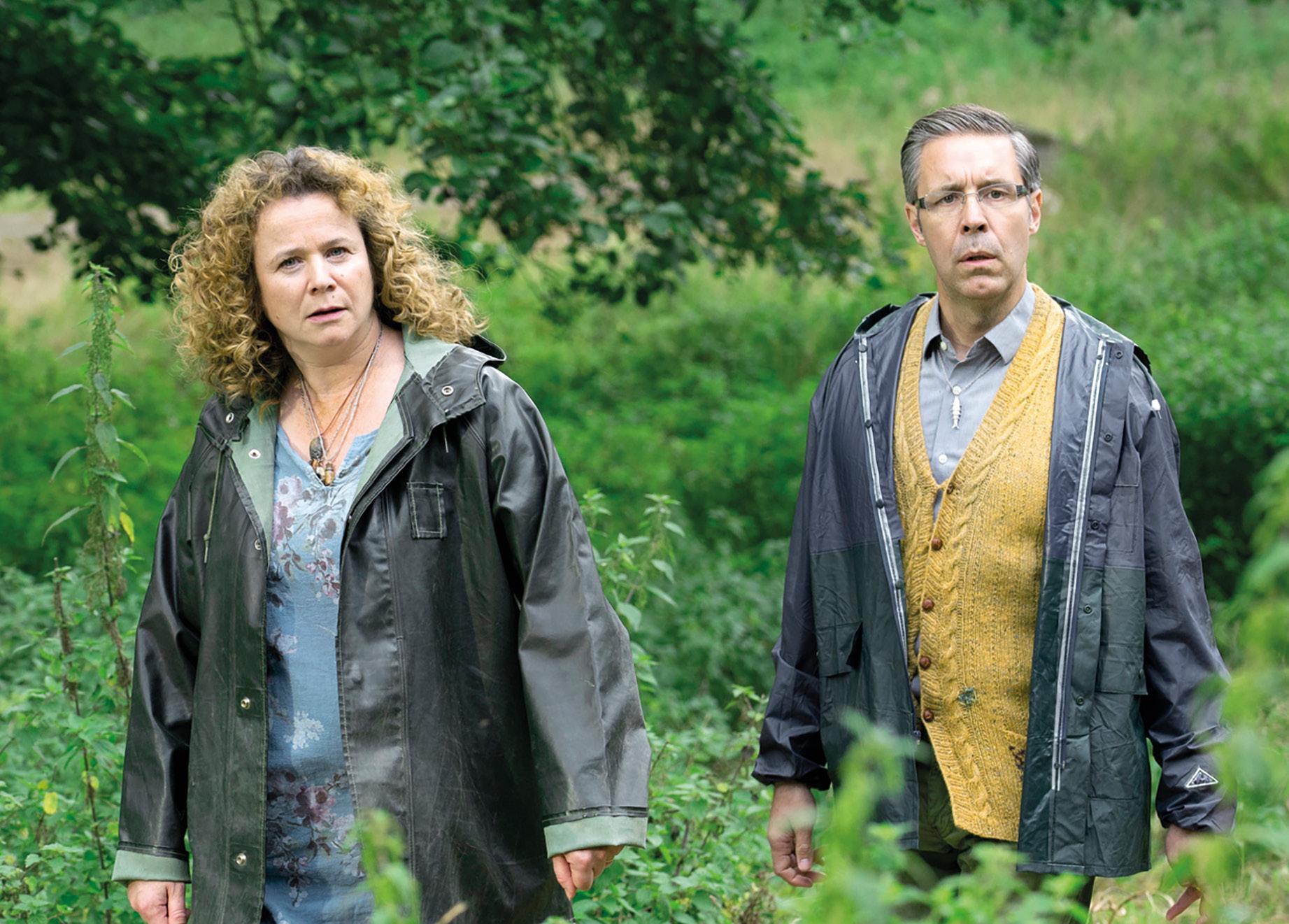
make enough money to secure a home with his wife Emma and a future for their infant daughter Mia.
“I’ve loved boxing since I was a kid and have always had this assumption that I would play a boxer, but wasn’t sure how that would manifest itself,” he explains. “I started writing this in 2009 and didn’t want to do a standard boxing movie. I wanted to do my boxing movie, and the way it ended up, my character could have been a racing driver, a jockey or a rugby player, as it was more about him overcoming these extreme obstacles that come his way than the boxing. When I started writing it, I didn’t know he was going to collapse injured and suffer brain injury and the disintegration of his world. That came out of nowhere, but I pursued that idea as I thought that was where I should go.
“For me the most challenging aspect was not the acting, directing or the boxing, it was the edit. I did a 12-week training camp and it was great. I trained in the mornings then did reccies in the afternoon. I
was on a regimented diet and a regimented life and I loved it once I was in it. But I’m not comfortable watching myself, so the edit was tough because I was really hard on myself. But I remembered being enthralled by filmmaking as a teenager and asking the head of year on my drama course how I could become a film director, and he said ‘You could never be a film director, Considine!’ And I believed him. But even though it took a while, I’ve directed two films now, so always follow your dreams.”
Considine has recently turned to long format television and delivered cracking performances in four TV series: Informer, The Outsider, The Third Day and more recently House of the Dragon. The prequel to Game of Thrones sees Paddy as King Viserys – replete with long tresses tumbling past his shoulders that could rival every aged rock star –overshadowing nearly all his fellow cast members. For most actors, being tied to such a huge and long running production is usually a blessing, but not for Considine.


“I was really happy about having only one season and to be able to tell a story and have a
beginning and an endpoint like that,” he says. “And to fully develop a character and go on a journey with him was a real blessing.” The actor charts his character’s demise into a painful death. A difficult task by anybody’s measure, but for Considine it was rather beguiling.
“I am a big fan of an artist called Richard Hamilton and I watched a documentary on him. He was someone who got cancer later in life. He was a drug addict, and he got what looked like scoliosis. I watched that, and I’d spoken to [coshowrunner and director] Miguel Sapochnik about visuals of him, going, ‘This is kind of where Viserys should end up physically.’ A lot of it was informed by where the first lesion started at the base of his spine and how this thing’s just eating off his body. He’s just dying a very, very slow death. So that wasn’t a creative choice for me.”
But despite giving, according to many pundits, the performance of his life, Considine said his rendition had its issues. “It was a couple of days and it wasn’t just difficult in an emotional way, but it was also difficult to shoot. I was lying in that bed for
hours and hours and doing that kind of breathing. The strange thing that happens is you think you’re just acting, but what happened when I was breathing that way was after a few hours my oxygen levels went straight down.
“I had my levels measured and they said, ‘We’ve got to get out of here; you need to get outside.’ And it was interesting because it was almost like my brain was telling my body how to breathe and my physiology was reacting to it, so my oxygen was dropping down. So, I actually felt like I was dying, which was fun.”
The subsequent result of all this effort is that millions upon millions of Game of Thrones fans now know exactly just who Mr. Patrick Considine is. “I hate the idea of being a celebrity,” sighs the actor who still lives in the town where he was born, with the girl he first met aged 18 and married in 2002, with their three children. “If I ever thought that was happening I’d disappear and go and make shoes like Daniel Day-Lewis did after Gangs of New York.”


“Where I came from, we had nothing to lose and no one ever told me to stop dreaming, but
there is a lot of shit you have to go through to move into this other world. It’s not easy to overcome being root bound, but you have to try, as you never know what you might succeed in. When I was a kid I wanted to be Adam Ant, I was obsessed with him [He shows me his tattoo of Adam Ant on his forearm] and how could I do that? But I remember kids on the estate getting punk bands together when I was young kid, and me being so impressed and inspired by that DIY punk ethic – to get off your arse and try something, even if you’re untrained and even if you fail, you still know you’ve tried.”
Indubitably, the punk rock dogma did work for Considine. What’s your greatest achievement? I wonder aloud.
“Getting my college degree, that was my greatest achievement, but nothing to do with films. I think my mum would have been more pleased with the fact that I have been married for 26 years and have three wonderful children, and have been a decent husband a good father. There is nothing I could do professionally that would have made her prouder of me than that.” n
If you thought House of The Dragon's Targaryens were an odd bunch, Stephen Arnell introduces us to the Capets – the ‘Accursed Kings' who inspired the original books on which Game of Thrones was based
Although many believe England’s Wars of the Roses (1455-87) between the rival related houses of Lancaster and York was the basis for George R. R. Martin’s epic series of novels A Song of Ice and Fire, they would be sorely mistaken.
The Wars of the Roses obviously has some influence on the fictional events in Westeros, but, according to Martin himself, the chief inspiration was author/politician/literary grandee Maurice Druon’s seven-volume cycle The Accursed Kings, based on the lives of the final Capetian monarchs of medieval France.
Writing in 2013, Martin stated, “The Accursed Kings has it all: iron kings and strangled queens, battles and betrayals, lies and lust, deception,

“The Accursed Kings has it all: iron kings and strangled queens, battles and betrayals, lies and lust, deception, family rivalries, the curse of the Templars, babies switched at birth, she-wolves, sin and swords, the doom of a great dynasty, and most of it straight from the pages of history”
family rivalries, the curse of the Templars, babies switched at birth, she-wolves, sin and swords, the doom of a great dynasty and all of it (or most of it) straight from the pages of history. And believe me, the Starks and the Lannisters have nothing on the Capets and Plantagenets. I think Druon is France’s best historical novelist since Alexandre Dumas père.”
Not a bad recommendation, especially if you’re an aficionado of Martin’s oeuvre – as I am, déclassé as some may find that admission. Last Christmas I began to re-read the English translations of all seven novels of Les Rois Maudits (The Accursed Kings), and exceptionally good they are too. Plenty of Game of Thrones-style treachery, sex, violence and religious fanaticism abound – with the difference being that Druon’s thoroughly researched books are all chiefly based on recorded history.
However, in tone there is an enormous contrast compared to Game of Thrones, in which many of the characters have at least some redeeming features and motivations. In Les Rois

Maudits there is precious little in the way of empathy for the characters, almost all being fairly vile, with even the less awful ones demonstrating self-interest as their abiding motivation.
Druon’s series is akin to the historical novels of the largely forgotten Alfred Duggan (1903-64), which are enjoyably free of the sentimentality that plagues many others in the genre. For those wishing to sample the work of Duggan, Three’s Company (1958), following the tragi-comic career of overlooked Roman Triumvir, the hapless boob Marcus Aemilius Lepidus, makes a good starting point.
But back to Les Rois Maudits. The period covered by Druon’s magnum opus is High Middle Ages France, between reigns of the last four kings of the Capetian dynasty and the first two kings of the succeeding cadet branch, the House of Valois. The English Plantagenets also feature, in the form of the frankly useless Edward II, his duplicitous wife Isabella (the ‘She-Wolf of France’) and their son, the chivalrous Edward III.
Druon himself aspired to a less middlebrow readership than the best-selling The Accursed
Kings appealed to, but compared to many of today’s historical fiction novels they are more akin to Robert Graves (I Claudius/Claudius the God) than Bernard Cornwell (Sharpe) or Ken Follett (The Pillars of the Earth etc). According to the Independent’s French correspondent John Lichfield, a personal friend of Druon, “Les Rois Maudits was written to make money very quickly; he himself was not very proud of it.”
Like fellow writer Romain Gary (The Roots of Heaven), Druon was a staunch Gaullist and served in the Pompidou administration as minister of culture (Gary had been a diplomat). For the French, Druon will always be remembered as the co-writer of the Resistance anthem Chant des Partisans, the song that followed General Charles de Gaulle’s radio announcement to the French people in June 1944 that liberation was under way.
The first six novels in the series were completed in a spurt from 1955-60, with the last, somewhat disappointing entry, Quand un Roi Perd la France (The King Without a Kingdom) published 17 years later in 1977. In this, Druon mirrored the late Colleen McCullough (1937-2015), whose superb six-novel Masters of Rome series (1990-
2002) was so popular that she was cajoled by fan pressure to write the merely average seventh instalment (Antony and Cleopatra) in 2007.
The Accursed Kings proved popular enough to be adapted twice (in 1972 and 2005), with even a spoof TV version in 1973 – Les Maudits Rois Fainéants (The Damned Lazy Kings). Both versions are available to watch free on YouTube, but only the 2005 mini-series has English subtitles. According to George R.R. Martin, the original series was popular enough to be known as the French I, Claudius – although the show actually predates the BBC adaptation of Graves’ books.

A recent re-viewing of the 2005 series version of The Accursed Kings revealed a truncated tale compared to the novels, and the Brechtian style (set-bound, with exaggerated Gothic/ German-Expressionist architecture) was distancing, although I did watch every episode, a testament to the strength of the storyline.
The 1972 show starred Jean Piat as chief protagonists Robert d’Artois (a kind of protoDaemon Targaryen) and Hélène Duc as his venomous aunt Mahaut (comparable to the ‘Queen of Thorns’ Olenna Tyrell).



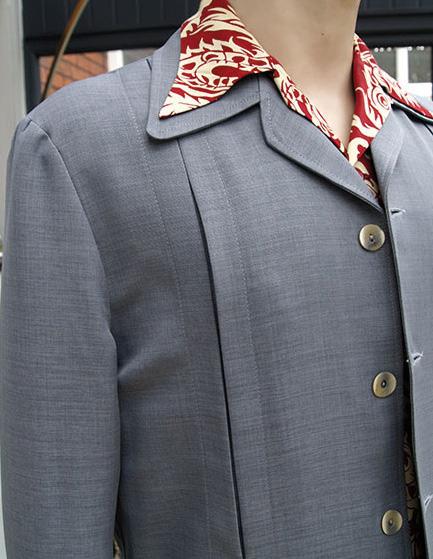






In the 2005 series, Philippe Torreton (Monsieur N) and Jeanne Moreau played the scheming rivals in 2005, with Gerard Depardieu as doomed Knights Templar chief Jacques de Molay and Tchéky Karyo (Baptiste) as the somewhat ironically named King Philip the Fair (no softhearted Viserys he). Hélène Duc returned to play Mme de Bouville in the later adaptation.

In an odd quirk of fate, all three lines of the House of Capet (excepting the final brief usurpation by the cadet Orléans branch of Louis-Philippe, 1830-48) ended in three heirless brothers who took the throne in succession when the elder died:
The Capetians (987-1328): John I, Philip V & Charles IV
The Valois (1328-1589): Francis II, Charles IX & Henry III
The Bourbons (1589-1792, 1814-1830): Louis XVI, Louis XVIII & Charles X
In the UK, BBC2 got in on the act with the similar The Devil’s Crown (1978), a lowish budgeted depiction of the first three Plantagenet Kings of England. Brian Cox (Succession) starred as Henry II in the series. Other cast members included Kevin McNally (Harold Wilson in the recent Stonehouse) as Henry the Younger and Freddie Jones (The Elephant Man) as Bertran de Born. The second Doctor
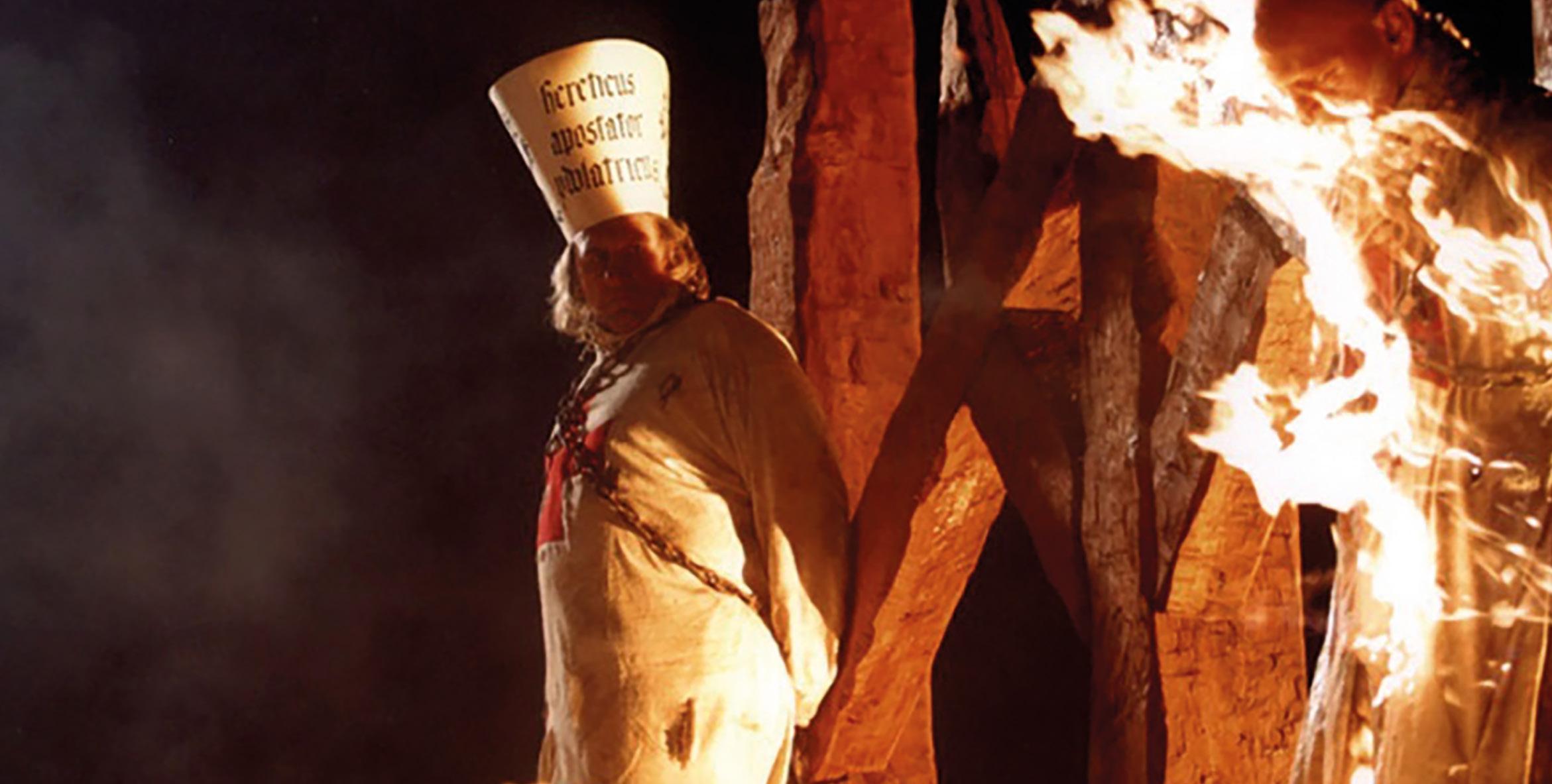
Patrick Troughton appears as William Marshal, 1st Earl of Pembroke.
All thirteen episodes of The Devil’s Crown are available to watch on YouTube, as is the eight-part Cleopatras, where you can enjoy the ripe performances of Richard Griffiths (Withnail & I) as King ‘Potbelly’ Ptolemy and a similarly scenestealing Graham Crowden (Waiting for God) essaying crafty royal tutor Theodotus. n
Stephen Arnell is the author of The Great One, a satirical mystery novel set in the civil wars of the Roman Republic
Gerard Depardieu starred in the 2005 mini-series as Knight Templar Jacques de MolayHe finally achieved long overdue screen stardom in Carry On Nurse as Jack Bell. Phillips dominates the ward, despite only appearing at the 44-minute mark. Bell is insouciant, debonair and an overgrown schoolboy, making ‘Hello!’ sound like the invitation to a weekend in Brighton and ‘Ding Dong!’ a phrase of harmless lubriciousness

“Nor did Phillips possess the seediness of Terry-Thomas’s rotters, who conveyed the air of one forced to resign his commission just before an investigation into the NAAFI accounts in Valletta. By contrast, Phillips was frequently eager to impress, forever devising another brilliant plan and hoping the valiant cry of ‘Left hand down a bit!’ would save HMS Troutbridge of The Navy Lark from yet another disaster”
The year is 1979, and the place is a Hampshire village so dull that a typical headline in the local newspaper might be ‘Hughie Green Opens New Bus Shelter’. Fortunately, the BBC is doing its best to alleviate boredom with Crooks Anonymous – a 1962 film with many of the essential ingredients for a comedy of quality. There is the black and white cinematography, the police Wolseley 6/90s with
clanging bells, and the familiar faces of Raymond Huntley and Colin Gordon. But, most importantly, there was a stellar performance from Leslie Phillips as ‘Dandy’ Forsdyke, with a poise that David Niven and Cary Grant might have applauded and would have had Rex Harrison seething with envy.
Crooks Anonymous would be the logical starting point if a chap needed to provide a guide to Leslie Phillips’ films for the novice viewer. It is the second

in a trio of comedies helmed by Ken Annakin, following Very Important Person and preceding The Fast Lady, all starring Leslie Phillips, James Robertson Justice and Stanley Baxter. At the heart of the narrative, Forsdyke is elegant without being flamboyant, guileful yet harmless and always likeable. It is also plausible that Julie Christie’s ‘Babbette’ has fallen for this entertaining bounder, played by a master of light comedy. The cast may contain some of the finest scene-stealers known to British Equity, but even when Wilfrid Hyde-White is on screen, Phillips effortlessly dominates the proceedings.
By Crooks Anonymous’s release Phillips was 38, with a film career that had commenced in the late 1930s. As with his near contemporaries, Laurence Harvey and Peter Wyngarde, his image was due to self-invention via Italia Conti and a wartime commission in the Royal Artillery. Devotees of British cinema may be surprised to hear Phillips use his original Tottenham vowels as a locomotive fireman in a 1949 Ealing drama, or his cameo, sans moustache, as a Birmingham police sergeant in 1953’s Time Bomb.
Wardour Street did not initially know how to use Phillips, and he featured in various supporting roles, including the 1955 science-fiction drama
The Gamma People. Of course, few true cineastes could resist an immaturely blazered Phillips as a
photographer helping to defeat a mad scientist who subjects bit-part actors to electromagnetic radiation. However, it was theatre that showcased his talents, and in the stage adaptation of The Diary of a Nobody, Phillips played a role that anticipated his future screen characters. Lupin Pooter is brash, witty, and insistent on everyone having a jolly time – whether they wish to or not.
1957 saw the release of Les Girls, Phillips’s one foray into mainstream Hollywood; he subsequently noted, “I didn’t want to become the poor man’s David Niven”. Two years later, he finally achieved long overdue screen stardom in Carry On Nurse as Jack Bell, a bunion operation patient and genial bounder. The second entry in the series is replete with delightful performances, notably from a magnificent Hattie Jacques and a thoughtfully understated Kenneth Williams. Still, Phillips dominates the ward, despite only appearing at the 44-minute mark. Bell is insouciant, debonair and an overgrown schoolboy, making ‘Hello!’ sound like the invitation to a weekend in Brighton and ‘Ding Dong!’ a phrase of harmless lubriciousness.
Phillips made two more Carry Ons and three other comedies for Peter Rogers and Gerald Thomas, before making a typically well-timed exit. The parsimonious £sd rates were one reason for his departure, and another was fear of stereotyping. Rogers’ wife, Betty Box, offered

greater scope for his abilities in the Doctor series, supporting Michael Craig in 1960’s in Love and starring in 1966’s in Clover and 1970’s in Trouble. That the last-named – a would-be ‘swinging’ conclusion to the series guest-starring Simon Dee – is remotely watchable is almost entirely due to Phillips. Dirk Bogarde temporarily returned as Simon Sparrow for 1963’s Doctor in Distress, and the two actors’ approaches to comedy acting could not be more diverse. Phillips was relaxed yet eager
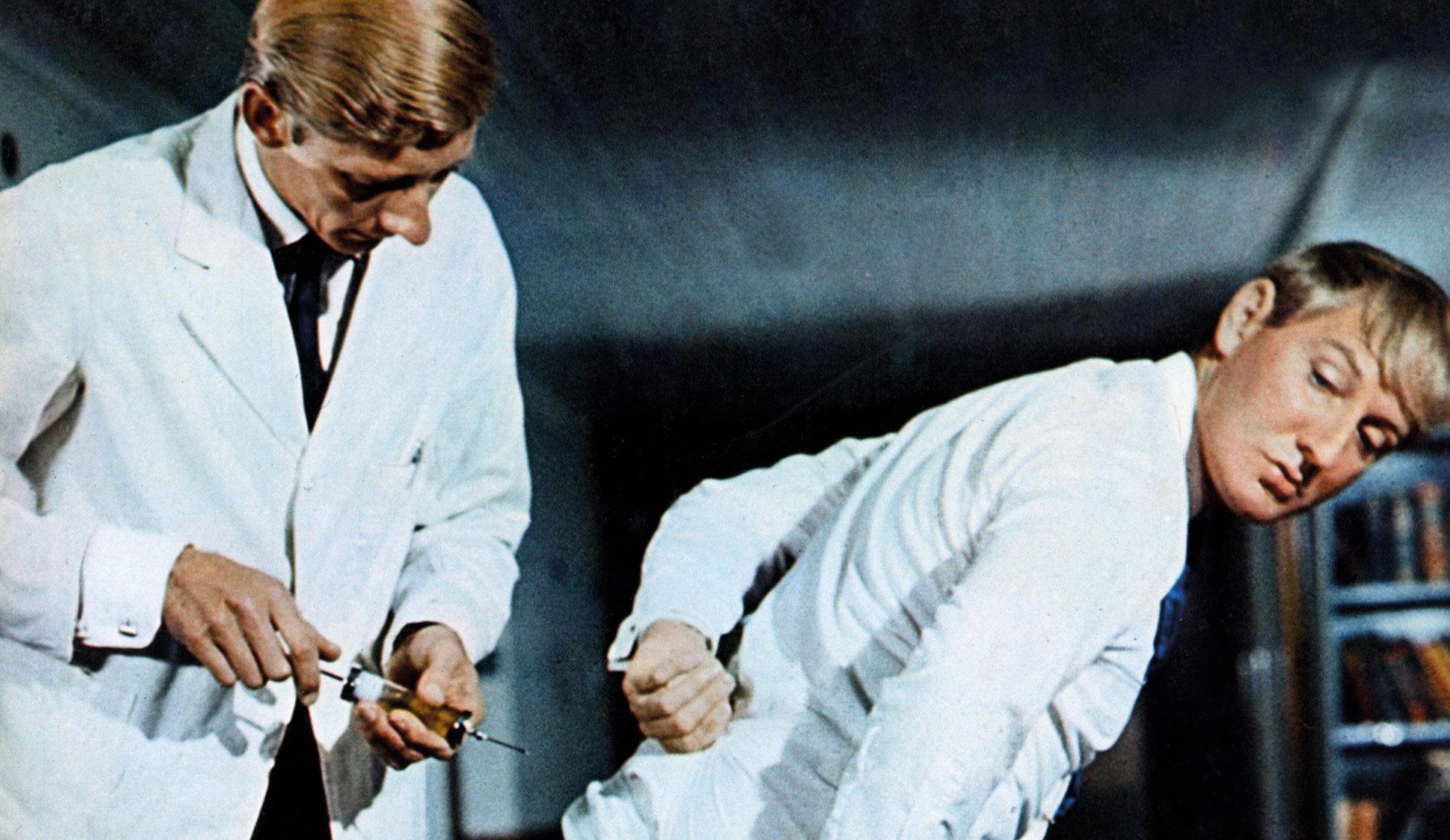
and only temporarily cowed by Sir Lancelot Spratt referring to him as a ‘nincompoop’. Meanwhile, the ‘Idol of The Odeons’ Bogarde conveyed the sardonic disdain of one obliged to fund his arthouse career by returning to commercial cinema.
By the time Doctor in Love went on general release, Phillips’s image as a bounder du jour was firmly established with the nation’s cinemagoers. Leslie might try to sell you a case of ‘the finest Empire claret, old boy!’ but was seldom a threat, unlike the dangerous Mayfair lounge lizards of Laurence Harvey. Phillips might devise a ‘wizard plan’, while the saturnine Dennis Price would invite you to his club, only to stab you in the back as Nigel Patrick poured you a brandy. Nor did Phillips possess the seediness of Terry-Thomas’s rotters, who conveyed the air of one forced to resign his commission just before an investigation into the NAAFI accounts in Valletta. By contrast, Phillips was frequently eager to impress, forever devising another brilliant plan and hoping the valiant cry of ‘Left hand down a bit!’ would save HMS Troutbridge of The Navy Lark from yet another disaster.
A T-T-style bounder would also use his military titles in civilian life, as if clinging to the wreckage of their service career. But Phillips tended to play amiably lascivious professionals who, as with Kenneth More’s Ambrose Claverhouse in Genevieve, have quickly adapted to the first stirrings
“The promotional gimmicks for Spanish Fly included a string bag containing a record by Geraldine singing Fly Me and, in a discreet plain envelope, a pair of frilly green knickers. All of which sounds more entertaining than the actual film, and in 1981 Phillips decided he would no longer play ‘lecherous twits with suave chat-up lines and dysfunctional trouser braces”With Jeremy Lloyd in Doctor in CLover (1966)
of consumerism. With The Fast Lady, Freddie Fox (Phillips) may sell a 1927 Bentley to Baxter’s hero, but he was equally at ease behind the wheel of an MGA. Phillips’s acting range could have easily encompassed Freddie Page of The Deep Blue Sea, but his characters tended to anticipate the next adventure rather than hark back to the Battle of Britain.
The treasurable sequence that best demonstrates this Phillips trait is Gaston Grimsdyke exploring Carnaby Street in Doctor in Clover, accompanied by Kiki Dee’s Take a Look at Me. This may be an alien world to our hero, but he is prepared to give it a jolly good try. The sixth Doctor comedy further benefits from the utterly charming screen partnership of Phillips and Robertson Justice, the latter ever eager to please his surrogate father figure. Richard Roud of The Guardian may have considered the series provided ‘people of an arrested mental or sexual development the chance of indulging themselves with a relatively clean conscience’, but the critic was clearly a mouldy fig. Such indelible screen moments have the power to linger in the memory while countless lumpenly expensive Hollywood productions remain mercifully forgotten. Similarly, the 1950s and early 1960s was an era where various tweed-jacketed types were oft heard to utter the immortal line ‘Gosh!’ throughout Pinewood and Elstree, but
Phillips was never of their number. His playing was effervescent, just as certain juvenile leads were as charismatic as a Morris Oxford. Phillips would promise the female lead dinner at ‘this little trattoria’ he knew, while the tweed-jacketed leading man planned to spend 10/- on afternoon tea at the Lyons Corner House.
Alas, 1970s British cinema presented Leslie with far fewer opportunities. His output reached a possible nadir with 1975’s Spanish Fly, co-starring with T-T in a slightly less hilarious narrative than the test card. As Michael Davie wryly noted in The Observer, the promotional gimmicks included a ‘Spanish string bag containing a record by Geraldine singing Fly Me and, in a discreet plain envelope, a pair of frilly green knickers’. All of which sounds rather more entertaining than the actual film, and in 1981 Phillips decided he would no longer play ‘lecherous twits with suave chat-up lines and dysfunctional trouser braces’.
That some were surprised by Phillips’ later stage roles in Chekhov, Shakespeare, and Tennessee Williams is a depressing indictment of how the art of British comedy actors is so often misunderstood. As with other masters of screen humour, Phillips had a wonderfully malleable face that could also express pain and barely suppressed anger. It is far from impossible to envisage him as one of the angry, damaged post-war failures as played by Denholm Elliott or Dudley Foster.
Leslie Samuel Phillips CBE died aged 98 on 7th November 2022; that he was not ‘Sir Leslie’ is a testament to Britain’s frequent neglect of its finest comedy actors. If one had to select his most indelible performance, this writer would have to cite Dandy Forsdyke, as first sighted on a Ferguson 20inch set. Crooks Anonymous is a picture that dates just before the arrival of The Sixties proper, with Julie Christie cast as a Liz Fraser-style ‘dolly bird’ and bearded curmudgeons berating their inadequate subordinates. With a leading man of lesser renown, the result would have been an entertaining way of passing the time. But with Leslie Phillips as the star, the result is one of those minor gems of British cinema that connoisseurs would avidly seek on television schedules.
As Penelope Gilliatt wrote in her seminal Unholy Fools: Wits, Comics, Disturbers of the Peace: ‘The funniest men always seem independent of your opinion. You take them or leave them’. Or to quote the great man himself – ‘Ding dong, you’re not wrong!’ n




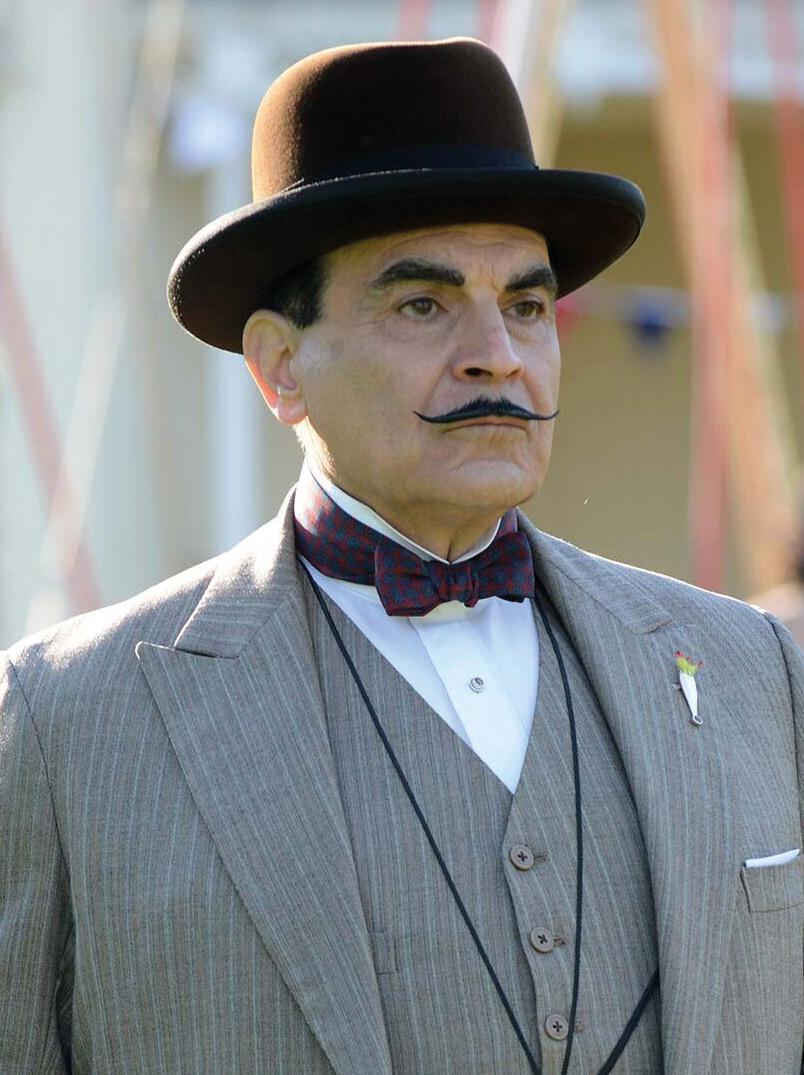


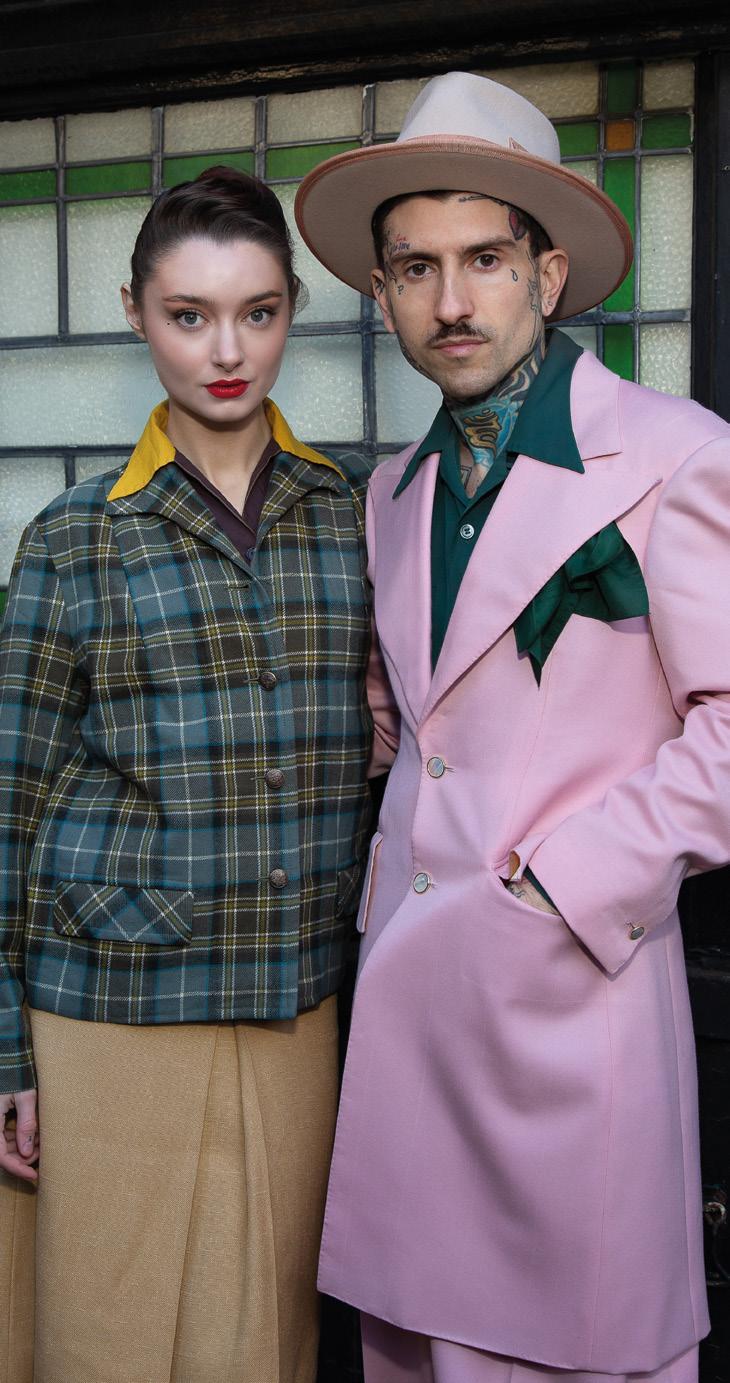

Chris Sullivan’s interest in the zoot suit began purely as an anti-fashion statement, before he discovered the chequered history of the oversized outfit that made the zoot suit one of the most politically sensitive clothing items of the early 20th century
Unnaturally obsessed with film noir as a lad in 1973, I was overjoyed to see a fashion shoot in a Club International nudie mag I’d purloined from a newsagent in my home town, which featured tailored zoots from Malcolm McLaren and Vivienne Westwood’s Let It Rock store. Two years later found myself in London buying vintage suits from Beaufort Market, big ties from Retro and black-and-white shoes from Acme Attractions. I’d wear this gear dancing to raw US imported funk in clubs like Crackers.
I even managed to get myself an ice-creampink Mal and Viv zoot from the Westwood store, which was now called Sex. Meanwhile I became a teenage zoot spotter ‒ eyes glued to the TV, clocking every stylish instance in the movies of the 1940s.
In 1980, having no truck with the futurist music and camp fashions that were all the rage at clubs like the Blitz, I turned the clock back and started DJ-ing funk and Latin music and wearing 1940s clothes. That summer, after a trip to New York, I formed my own Latin-funk band, Blue Rondo à la Turk, and, having discovered a book, The Zoot Suit Murders, realised the social importance of this stark silhouette.
Blue Rondo penned our first composition, Me and Mr Sanchez, after Thomas Sanchez, author of The Zoot Suit Murders. I then designed my very own zoot and commissioned Bob the Tailor of Aldgate ‒ whose pattern cutter was coincidentally a Chicano who had been involved in the aforementioned riots as a teen ‒ and started a night at Le Kilt (the first of the clubs to devote itself almost entirely to rare groove), which served as a necessary haven for all those of a similar stylistic persuasion.
“What is certain is that the zoot spread through the working classes like wildfire, becoming a coveted item that some today might describe as ‘bling’. Due to the amount of fabric used, you needed a good few bucks to acquire a zoot”
“The suit is a widelapelled, knee-length ‘killer-diller’ coat with a drape shape, shoulders padded ‘like a lunatic’s cell’, while the deeply pleated trousers balloon to 32" at the knee and 14" at the ankle. Worn with a large Fedora with feather, fat tie and spearpointcollared shirt, the look, when it first appeared among late 1930s hep cats in urban jazz saloons, was radical to say the least”
Of course, the band, the club and the style took off like a rocket, and soon I launched my own range of ready-to-wear zoot suits, in partnership with exAmen Corner saxophonist and style entrepreneur Alan Jones, under the brand Sullivan Suits, which sold all over the country in shops such as Demob in London and Paradise Garage in Bristol.
Headlines (usually ‘Zoot Alors’) in The Face, L’Uomo Vogue, The New York Times, LA Times and Paris Match proclaimed the global return of the style, while designers such as Giorgio Armani and Jean-Paul Gaultier created collection after collection featuring toned-down versions of the style, until the oversized, large-shouldered, pegtrousered suit became the signature eighties style. I designed more zoot suits ‒ albeit with my own twists ‒ made by tailor Chris Ruocco of Kentish Town and worn by chart toppers Spandau Ballet, Ultravox, Adam Ant (who wore it for Live Aid) and Madness, to name a few.
The country was soon festooned with fellas in oversized suits, long chains and co-respondent shoes. The conceit was further propagated in 1982, when August Darnell of Kid Creole and the Coconuts fell on the zoot as his chosen look and, due to his chart success, totally eclipsed our usage, and fair play to the man. He did it very well.
More than just an outlandish fashion fad, the zoot suit silhouette defied an era of wartime conformity
and racial prejudice and was a declaration of freedom and auto-determination among beleaguered minorities. The suit itself comprises a wide-lapelled, often knee-length ‘killer-diller’ coat with a drape shape, with shoulders padded ‘like a lunatic’s cell’ (as Malcolm X put it), while the deeply pleated trousers ballooned to some 32 inches at the knee and 14 inches at the ankle. Worn with a large felt Fedora with feather, fat tie and spearpoint-collared shirt, the look, when it first appeared among late 1930s hep cats in urban jazz saloons, was radical to say the least. Exactly who invented the zoot remains under debate. Claimants have included Beale Street tailor Louis Lettes of Memphis, Charles Klein and Vito Bagnato in Manhattan, Lew Eisenstein on 125th Street, and a Detroit retailer known as Nathan (Toddy) Elkus.
Chicago tailor and bandleader Harold C. Fox asserts he made the first zoot suit with the reet pleat, the reave sleeve, the ripe stripe, the stuff cuff and the drape shape in 1941, influenced by underprivileged urban black teenagers. “The zoot was not a costume or uniform from the world of entertainment,” he once said. “It came right off the street and out of the ghetto.”
The word ‘zoot’ was common currency in the jazz circles of the 1930s. Some say it was employed to denote all that was extravagant and slipped into the vernacular to specifically describe said item. Some say that since it was common jazz slang to put a ‘z’ at the beginning of words, so the suit became a zoot, while others claim it was first coined by Mexican-American ‘pachucos’ as part of their street cant, ‘Caló’, and evolved from the Mexican Spanish pronunciation of the word ‘suit’, with the ‘s’ taking on the sound of a ‘z’.
What is certain is that the zoot spread through the working classes like wildfire, becoming a coveted item that some today might describe as ‘bling’. Due to the amount of fabric used, you needed a good few bucks to acquire a zoot. It isn’t difficult to imagine the hatred felt by some poor white Americans as they saw these upstart dandies parade their finery. Little did they know that many of these black and Hispanic ‘zooters’ had toiled on the lowest rung as bus boys, labourers and factory workers for months to buy their threads.
Described as ‘the worst mob violence in Los Angeles history’, the Zoot Suit Riots of June 1943 came about due to a variety of factors, not
 One of the original Sullivan Suits at the Axiom fashion show in New York
One of the original Sullivan Suits at the Axiom fashion show in New York
 Christos Tolera modelling the first collection of Sullivan Suits
Christos Tolera modelling the first collection of Sullivan Suits
least of them the War. Civil rights were denied to most blacks, while anti-Mexican sentiment had long prevailed. In March 1942 the US War Production Board restricted the use of cloth by 26 per cent, resulting in what Esquire magazine called ‘streamlined suits by Uncle Sam’, causing the manufacture of the zoot suit to be banned. Underground tailors all over the US still produced the item, however, leading the public to view anyone wearing a zoot as a flouting of wartime rationing. The zoot was a red flag to already racist redneck bulls. The truth is that many Mexican pachucos had enlisted in the forces, while much of the cloth used had existed long before war broke out and was old stock.

Another factor was the Sleepy Lagoon Murder. Accused of the 1942 murder of José Diaz, 22 members of the gang known as the 38th Street Boys were put in the dock in the largest mass trial in Californian history. The Sleepy Lagoon Defence Committee was formed by civil rights pioneer Carey McWilliams, and included Hollywood celebrities like Orson Welles and Rita Hayworth, whose involvement further aggravated this controversial affair.
17 of the 22 defendants were convicted. Meanwhile white folk, whipped up by a press that characterised all Mexican youth as dark-skinned hoodlums, became overwhelmingly paranoid and terrified of those who sported the zoot.
Altercations broke out between servicemen and zooters all over California, two of which had a particular effect on the forthcoming riots. On 30th May 1943, a group of sailors and soldiers harassed a group of pachucas (female zooters) in downtown LA, and were battered by the ladies’ male counterparts as a result. Four days later, sailors were again routed by a gang of zooted Chicanos, causing a mob of off-duty LA coppers, who called themselves the Vengeance Squad, to further attack Hispanics on Main Street.
The following day about 200 sailors turned up in East LA and attacked a group of mainly teenage boys, stripped them naked and burned their clothes in a big pile in the street.
And thus the riots began.
As journalist Carey McWilliams wrote: Marching through the streets of downtown Los Angeles, a mob of several thousand soldiers, sailors, and civilians proceeded to beat up every zoot suiter they could find. Pushing its way into the important motion picture theatres, the mob ordered the management to turn on the house lights and then ran up and down the aisles dragging Mexicans out of their seats.
The most heinous violence occurred on 7th June, after one Los Angeles paper printed a guide on how to ‘de-zoot’ a zoot suiter. ‘Grab a zooter. Take off his pants and frock coat and tear them up or burn them,’ it instructed. After Councilman Norris Nelson called the zoot suit ‘a badge of
“The most heinous violence during the zoot suit riots occurred on 7th June, after one Los Angeles newspaper printed a guide on how to ‘de-zoot’ a zoot suiter. ‘Grab a zooter. Take off his pants and frock coat and tear them up or burn them,’ it instructed its readers.
After Councilman Norris Nelson called the zoot suit ‘a badge of hoodlumism’, the LA City Council criminalised the suit within the confines of the city”A de-zooted pachuco taking it in what’s left of his strides
hoodlumism’, the LA City Council criminalised the suit within the confines of the city.
Ironically, in 1943, at the height of the riots, the hugely successful black jazz musical feature films Stormy Weather and Cabin in the Sky were released, with cast members wearing zoot suits, while in the same year America’s favourite comedy duo Laurel and Hardy wore zoots in the film Jitterbugs. The song A Zoot Suit (For My Sunday Gal) was a huge hit in 1942 for several artists. ‘Dig a zoot suit with a reet pleat and a drape shape and a stuff cuff to look sharp enough to see your Sunday gal’ went the lyric. The zoot suit had found a place in mainstream contemporary culture and yet it still caused riots.

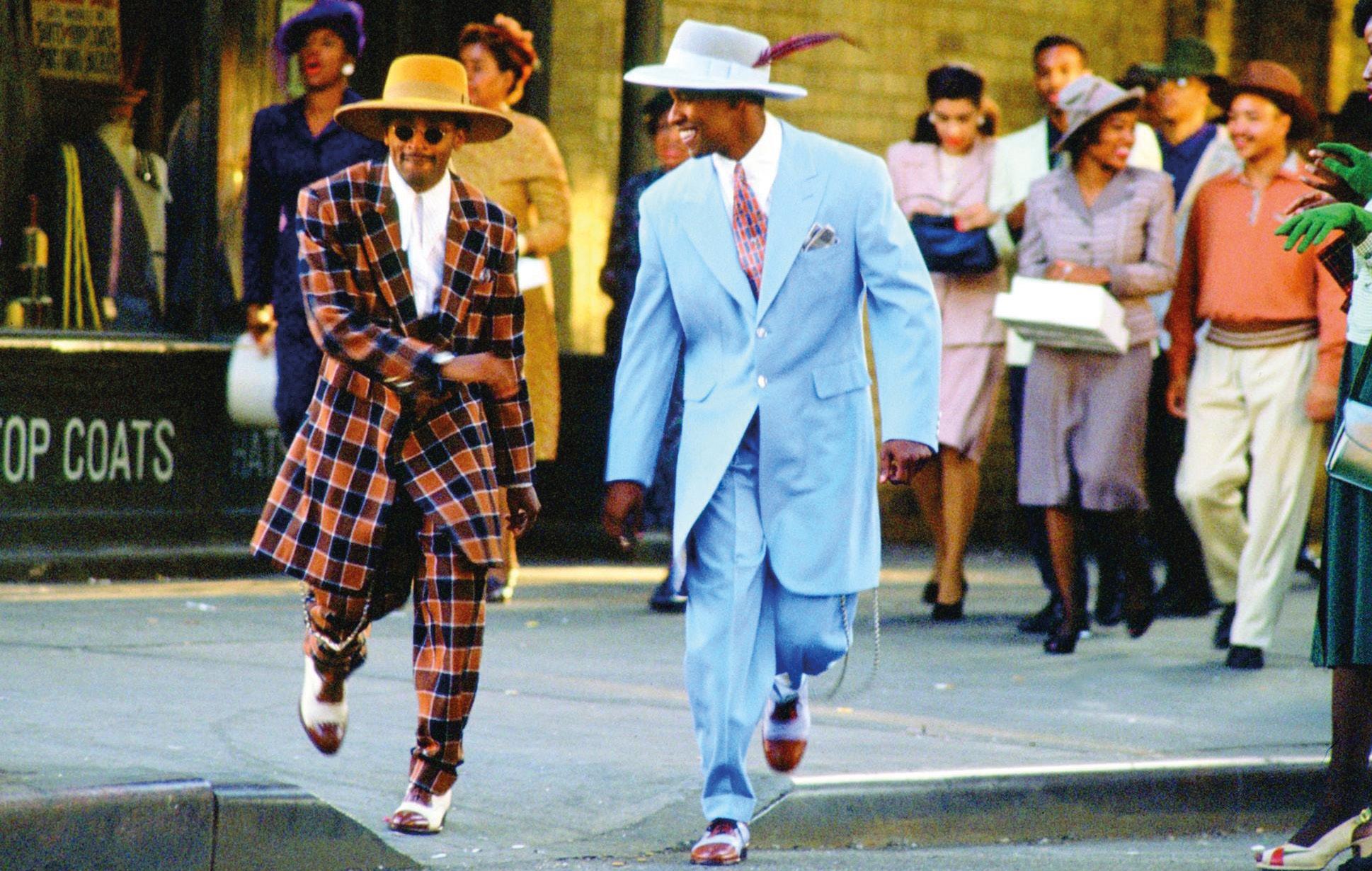
The debacle was eventually contained, not on any humanitarian basis but for purely economic reasons. California’s state senators were only concerned about the adverse effects on the relationship between the United States and Mexico. The government declared, ‘The riots might endanger the program of importing Mexican labour to aid in harvesting California crops.’
The Mexican Embassy complained to the State Department, and US Service Chiefs had no choice but to intervene on 7th June, declaring Los Angeles off-limits to all military personnel and confining

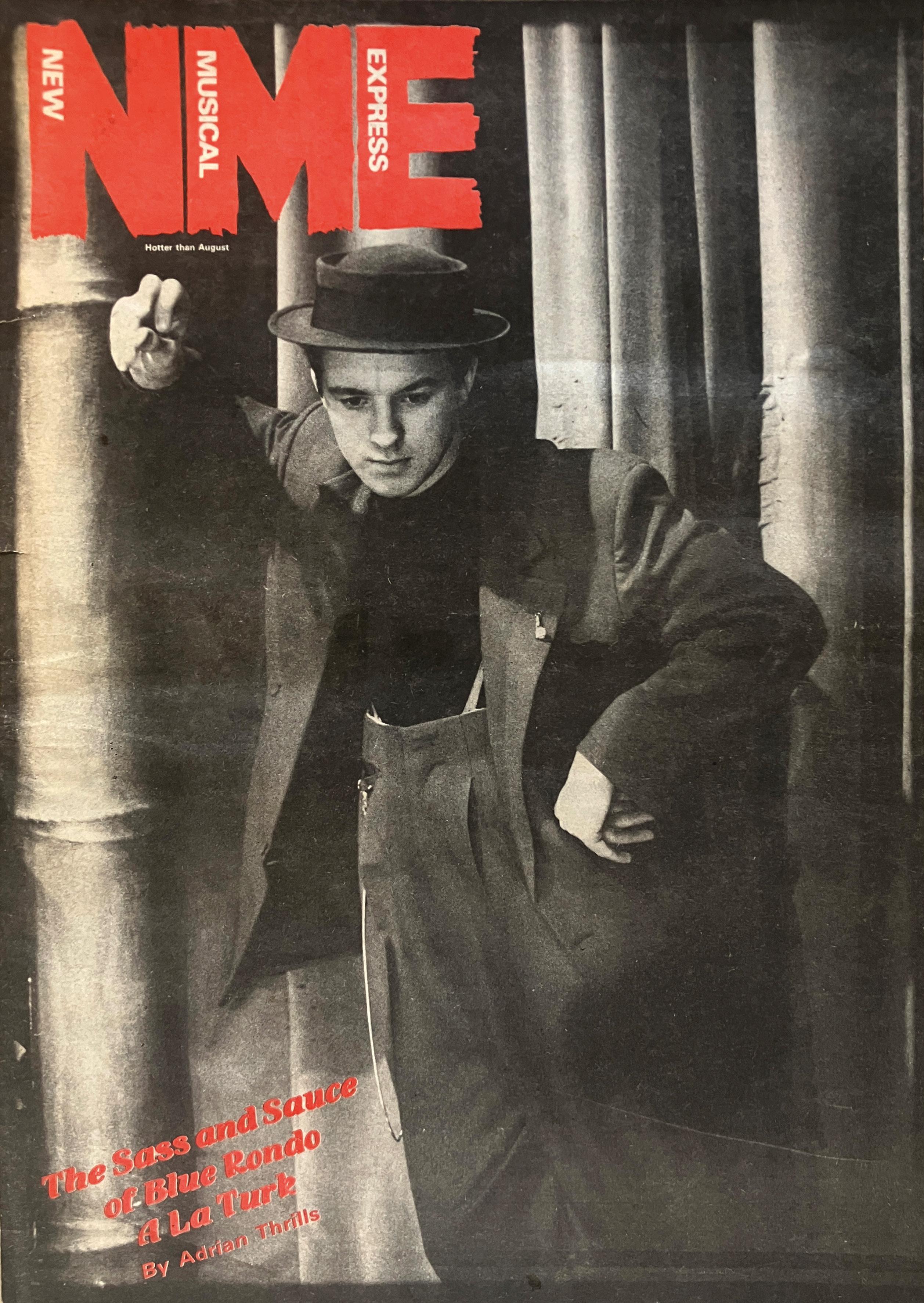
sailors and Marines to barracks. By the middle of June the situation had calmed down in LA, but riots erupted elsewhere in California, as well as in Texas, Arizona, Detroit, Harlem and Philadelphia, where two zoot-clad members of Gene Krupa’s charttopping band were given a hiding.
It was during the riots that young zoot suiter and soon-to-be Chicano union activist Cesar Chavez became involved with community politics, which transformed California. Elsewhere, a certain young pimp, ‘Detroit Red’, aka Malcolm Little, embarked on a political journey that ultimately transformed him into the radical black leader Malcolm X. Ultimately, then, the debacle achieved the opposite of what was intended. It did not cleanse the area of mobsters; it actually turned many law-abiding young men on to the gangster life.
The zoot suit exerted considerable influence elsewhere. UK spivs took to wearing outsized suits as proof, like their Mexican counterparts, that they could afford and source the cloth prohibited by cloth restrictions during World War II. Jamaican settlers sported their versions as they alighted from the S.S. Windrush in London’s Tilbury Dock in 1948, thus influencing young Brits.

Today, as clued-up hep cats find the fashions of today rather predictable, the zoot is enjoying another renaissance. I just hope that any would-be Zootie McVouties can find a tailor like Bob of Aldgate and Chris of Kentish Town to produce one of the quality it so rightly deserves. n
Post-WWII, Dior launched his New Look for women, in which everything went big. American male fashion responded with a style that was heavily influenced by the zoot ‒ high-waisted, pleated peg trousers, heavily shouldered jackets with big lapels, wide kipper ties and spearpointcollared shirts ‒ which became almost a uniform for the stars of film noir such as Alan Ladd, Victor Mature and Jack Palance.
“American male fashion responded with a style that was heavily influenced by the zoot – high-waisted, pleated peg trousers, heavily shouldered jackets with big lapels, wide kipper ties and spearpointcollared shirts – which became almost a uniform for the stars of film noir”
Having learned of the checkered history of the zoot suit, we made it our mission to comb the streets of the City of London until we found someone wearing one. It was only when we reached the seamier side of the City, where it bleeds into Whitechapel, that London Boy Lou stepped into the frame, accompanied by his dandizette moll Tiffany Smith.
Lou has only one zoot suit for now; their cost, as we learned on the previous pages, can be prohibitive due to all that extra yardage of fabric. His was made at Lawton Ltd by Kimberley Lawton, a tailor who apprenticed at Huntsman and now makes sharply cut suits for men and women.
Joined by make-up, hair and special effects artist, and erstwhile fashion model, Tiffany Smith, the sharply dressed duo led us into the darker streets and alleys of the area of Whitechapel
where they dwell, drawing us into some of the ghoulish alleys where Jack the Ripper carried out his grim work in Victorian times.
As if summoned by our occult journey, a mysterious stranger joined us outside the Hoop and Grapes on Aldgate High Street, dressed for all the world like a camp version of Jack the Ripper himself. This turned out to be Sean Bailey, who kindly informed us that the Hoop and Grapes was the only pub in the City of London to survive the Great Fire of 1666.
It may have survived the flames, but subsidence is gradually slanting this ancient pub, built in 1593, towards the east of the City, where all the dark stuff occurs.
Reader, we survived this perilous journey, and returned with the photographs herewith displayed. n


TIFFANY WEARS:
Jacket: Vintage 1960s Pendleton

Blouse: Freddies of Pinewood
Skirt and shoes: Vintage 1970s

 LOU WEARS: Zoot Suit by Lawton Ltd
Hat: Sierra & South
Shirt: Vintage 1940s Gabardine
Co-Respondent Shoes: Cheaney
LOU WEARS: Zoot Suit by Lawton Ltd
Hat: Sierra & South
Shirt: Vintage 1940s Gabardine
Co-Respondent Shoes: Cheaney



 LOU WEARS: Zoot Suit by Lawton Ltd
Shirt: Mark Powell Bespoke
Tie: Vintage 1950s
LOU WEARS: Zoot Suit by Lawton Ltd
Shirt: Mark Powell Bespoke
Tie: Vintage 1950s
 SEAN BAILEY WEARS: Jack the Ripper’s camp cousin’s couture
SEAN BAILEY WEARS: Jack the Ripper’s camp cousin’s couture

Gustav Temple delves into the mercurial history of the Homburg, to find that it is a hat revered on both sides of the moral compass
“In the spring, Jeeves, a livelier iris gleams upon the burnished dove.” “So I have been informed, sir.”
“Right ho! Then bring me my whangee, my yellowest shoes, and the old green Homburg. I’m going into the Park to do pastoral dances.”
– P.G. Wodehouse, The Inimitable Jeeves
Picture the scene: 1882, Bad Homburg, an elegant spa town in Prussia (now Germany) where gentlemen pay a visit when feeling slightly under the weather, to enjoy the healing waters and the healing properties of the baccarat tables. One such regular visitor is Edward VII, then the Prince of Wales. After losing a few Reichsmarks at the tables and splashing a few drops of the healing waters on his beard, he is immediately bored and asks his hosts what else there is to do in this kleine ortschaft
“There is a famous hat factory,” one lackey tentatively suggests. To everyone’s great relief, the Prince’s reply is, “Take me there immediately, I simply adore hats.”
The Möckel Hutfabrik, or hat factory, had been founded in 1806 by Johann Georg Möckel, descendant of a hatmaking family for many
“Bertie liked his nephew’s hat, but not that much, so he asked Möckel to fashion him something similar but in grey felt. Always one for starting national trends
spats, the dinner jacket, and undoing the bottom button on one’s waistcoat), Bertie’s new titfer quickly caught on back home, and soon everybody wanted one”

(see
generations. Aided by his technology-loving son, Möckel installed the latest machines in his factory, being the first company in Bad Homburg, in 1856, to install a steam engine. One of their most valued customers was Kaiser Wilhelm II, the Prince of Wales’ nephew. Möckel had made ‘Willy’ a hunting hat of his own design, of pale green felt with a dark headband and a curled, bound brim.
Bertie liked his nephew’s hat, but not that much, so he asked Möckel to fashion him something similar but in grey felt. Always one for starting national trends (see spats, the dinner jacket, and undoing the bottom button on one’s waistcoat), Bertie’s new titfer quickly caught on back home, and soon everybody wanted one. The Homburg gradually overtook the bowler and the topper as the formal hat of choice for English gentlemen. Möckel themselves did alright as well, securing a patent for their new Homburg hat and a Royal Warrant in 1909.

The Homburg was still popular by the 1950s, when US President Dwight Eisenhower broke with tradition at his 1953 inauguration, wearing a black Homburg instead of the traditional top hat (at least he wore any hat at all, unlike one of his successors John F Kennedy). British Prime Minister Anthony Eden, who led the country from 1955 until his resignation in 1957, was already a dapper dresser when he entered office. But his adoption of the Homburg caused such a strong association with him that the hat began to be known, particularly on

Savile Row, as ‘The Eden’. Winston Churchill also favoured the Homburg, but they stuck with Eden as a snappier name.
One would think that this tale sounds perfectly satisfactory, and that the sartorial historians need not trouble themselves for further details. But wait –the Italians, as ever, are getting hot under the collar. Enter Christiano Lobbia (1826-1876), a rather dashing Venetian soldier and Colonel of the Royal Army. On the night of 15th June, 1869, Loggia was

the victim of an unprovoked attack in the street, resulting in a heavy blow to the head and three stab wounds to the chest. At the time of the incident he was wearing a bowler hat, the blow causing a crease to open up in the middle of the crown. On his next session in Parliament, Loggia deliberately wore the very same damaged hat, to draw attention to the ongoing fight against malfeasance and corruption in politics. A Florentine hatter began to make hats based on this battered bowler, calling it ‘la Loggia’ and the new shape quickly caught on.
Since the Florentine hatter remains unknown, there
is no way of verifying this story as the true origin of the Homburg. The hat is still called a Loggia in Italy, and another reference to its origins in times of great violence was its appearance in 1972’s The Godfather, worn by Al Pacino as Michael Corleone.

And the tale of the origins of the Homburg doesn’t end there. There is a very similar hat called a ‘Lord’s Hat’ (at least in the US), with a similar ‘pencil curl’ brim, but with a pinched crown instead of (or sometimes as well as) the Homburg’s gutter crown. The Lord’s hat usually doesn’t have a brim adorned with the same crosgrain as the band. Fans of television series Boardwalk Empire will have noted lead character ‘Nucky’ Thompson, played by Steve Buscemi, wearing a traditional Homburg, while Charles ‘Lucky’ Luciano (played by Vincent Piazza) dons a Lord’s Hat, recognisable by its pinched crown.

What we have learned from all this, dear reader, is that the Homburg is a slippery, elusive hat, at least from a historical perspective. What we do know is that it has been worn by kings, princes, presidents and prime ministers, as well as fictional gangsters and Italian colonels. So when you don your own splendid Homburg, you can delight in the fact that the style has been on a long and arduous journey before reaching your head, and that in itself should give you an air of mystery, intrigue and rakishness that few other hats can bestow. n

 Daniel Day-Lewis in 1993’s The Age of Innocence (and the age of the curlier-brimmed Homburg)
Daniel Day-Lewis in 1993’s The Age of Innocence (and the age of the curlier-brimmed Homburg)
www.greyfoxblog.com @greyfoxstyle

It’s remarkable how time flies by. It seems like only yesterday that I was doing homework to my newly bought LP, The Who Live at Leeds, played on my Philips record player. It also seems like only yesterday that a young David Hockney came to visit my school and we were able to chat with him in my class. The same Hockney caused a stir a few months ago by attending an Order of Merit luncheon with King Charles III (how strange it still seems typing that) wearing a loud checked tweed suit and bright yellow Crocs
– or ‘galoshes’ as His Majesty delicately referred to them. Hockney is now aged eighty five and it’s his age that is relevant to the point I’m labouring to make here, namely that advancing years give a confidence, a devil-may-care attitude, that enables a man or woman to dress boldly, even brashly, when meeting a king.
What doubtless caused the press to take such an interest was Hockney’s wearing such unconventional footwear to such a prestigious event (and I suspect that Crocs’ press and PR department
were quick on the draw to publicise the news) was that bright yellow plastic sandals are not commonly worn to the Palace.
The photos of those attending the Order of Merit luncheon show a large group of men in dark formal suits. The small number of women is remarkable (why so few with OMs?) but they, Hockney and a lone magenta-clad Bishop provide
the only colour in an otherwise gloomy scene. Men’s formal business wear is traditionally dark: black or dark blues predominate. This is nothing new. Since the mid-18th century, men have largely avoided colour and bright pattern, a trend marked by Beau Brummell’s choice of plain, monochrome and sober clothing. The psychoanalyst John Flügel described this abandonment of previously bright and ornate menswear as ‘The Great Male Renunciation’ in his 1930 book, The Psychology of Clothes. Men adopted darker hues to emphasise their serious, god-fearing and industrious approach to life, and this trend continued during Victorian times and into the 20th century. The sixties signalled a temporary shift to colour and pattern, but we have since returned to a time in which men, young and old, prefer darker clothing, whether for formal or casual wear. Walk along any high street and you will see how drab black or dark grey hoodies, quilted coats and jeans predominate.

Hockney’s outfit at the OM luncheon is a welcome change from male drabness. He chose to dress in a way that is comfortable and still reflects his artistic character and interests. We may not all approve of the yellow Crocs, but the lighter

“Men adopted darker hues to emphasise their serious, gof-fearing and industrious approach to life, and this trend continued during Victorian times. The 60s saw a temporary shift to colour and pattern, but we have since returned to a time in which men, young or old, prefer darker clothing, whether for formal or casual wear”
coloured check tweed suit is a style that we could all adopt. We should all try patterned tweeds, bright knitwear, trousers in brighter hues, bold striped shirts and pastel contrasting socks to move away from this monochrome drabness.
I have to make it clear that I’m talking about men wearing western styles. Globally men in many cultures wear bright patterns and vivid colours. You can see examples of this at the Africa Fashion exhibition at London’s Victoria & Albert Museum (until 16th April). Not all men globally feel constrained to wear monochrome. In London, tailor Samson Soboye uses African inspired prints to bring a cheery multicultural approach to men’s style, and sometimes flashes of colour can be seen on men in our cities, albeit on a cautious way: bright spots among the prevailing gloom. However, western menswear offers some exceptions to the drabness. Patterned tweeds have seen a resurgence over the last few years (as many Chap readers well know). Harris Tweed became a darling of the fashion catwalks, thanks to designers such as the late Vivienne Westwood, whose adoption of the brand went some way to saving an ailing industry. Bright tweeds give reticent chaps a way of going out bold, without feeling that they are sticking their heads too far over the parapet.
Patterned tweed has been worn since Victorian times, initially as sportswear for the affluent. Scottish estates developed tweeds that acted as camouflage for their workers and for those hunting on their land. These tweeds reflected the colours and textures of the land around them; the purples of the heather, the blues of the sky and lochs, the browns of the fading heather, the greens of the vegetation and greys of the rocks.
Such designs are so classic that men can feel comfortable without being concerned about being excessively bold. I suspect that within every cautious man there is a peacock waiting to emerge, a butterfly from a dull chrysalis, so such cloths are worth a try. For modern takes on classic tweeds try Dashing Tweeds, who design and weave more contemporary designs for men and women.

For inspiration take a look at photos of Evelyn Waugh. He was partial to a bold tweed suit and it’s remarkable how comfortable he looks. Regular wear and familiarity brought him confidence and style and I hope his picture can inspire a few to adopt tweed.
Talking of fashion exhibitions, last year’s Fashioning Masculinities exhibition at the Victoria & Albert Museum marked a shift towards an increasing interest in menswear history, cultural

relevance and contexts. Most museums had focused on women’s fashion in the past, but at the end of last year another exhibition opened which continues this trend towards looking at men’s style. Dandy Style - 250 Years of British Men’s Fashion is on at Manchester Art Gallery until 1st May 2023. Slightly smaller in scale than the V&A exhibition, it was designed in collaboration with Fashioning Masculinities but it focuses less on the gender aspects of fashion and more on the evolution of men’s style using clothing and art. I’ve seen it twice and will go again if I get the chance; highly recommended to anyone interested in men’s style. If you can’t get to Manchester, the accompanying book Dandy Style by Shaun Cole and Miles Lambert is just as entertaining and informative.
Turning to a less cheery matter, my beloved labrador retriever, Harry, passed away unexpectedly last year. To remember him I commissioned a painting from a very talented artist, Catherine Daniel. I leave the image to speak for itself. I feel it’s a fitting way to remember such a faithful friend.

Finally, I had the privilege of working with Tusting, the family owned company that makes high quality leather goods in England. We designed a prototype back pack which I then used regularly for a couple of years, before the design was tweaked
and finally put into production as the Tusting x Grey Fox back pack. We used a roll of tweed that I found in their archives and matched it with a gorgeous leather that wears beautifully. I’m very proud of the final article and it was fascinating being closely involved with the design and trial stages. Seeing the pride and care with which Tusting’s leather workers put together pieces like this highlights for me the difference between quality hand-crafted and mass produced goods. Long live British skills such as these.
Links:
Dandy Style manchesterartgallery.org/event/dandy-style Africa Fashion
vam.ac.uk/exhibitions/africa-fashion
Tusting x Grey Fox back pack tusting.co.uk/product/grey-fox-tustingbackpack
Catherine Daniel artist catherinedaniel.co.uk
Samson Soboye soboye.co.uk/samson-soboye
Dashing Tweeds
dashingtweeds.co.uk



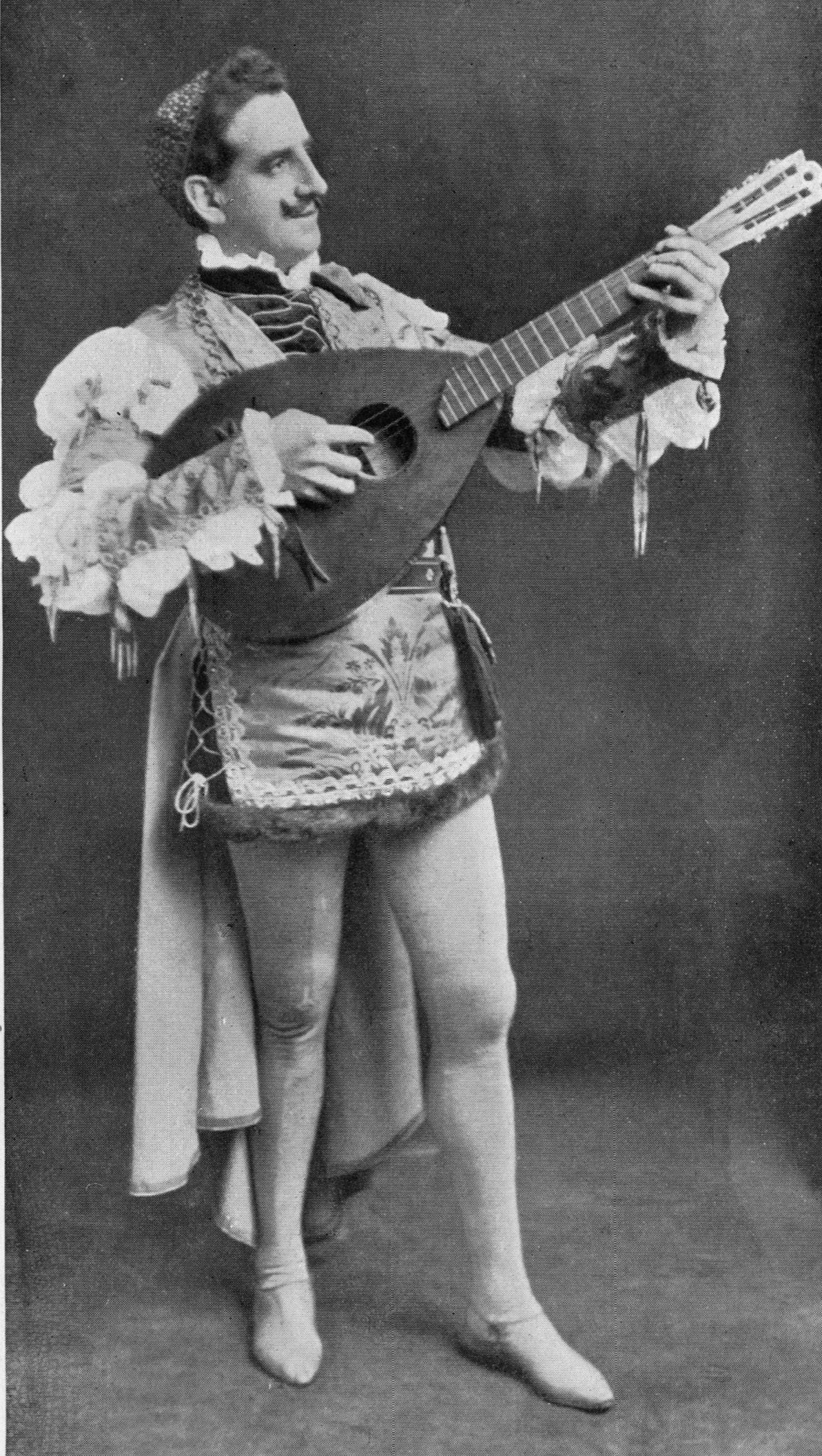

Orchester is a trained musician. All these things possibly play together. And then of course there is this frightening look we bring to the stage”
On stage is the Palast Orchester: eleven impeccably dressed gentlemen, and a lady in evening dress on the violin. A tall man in a velvet dinner jacket and black bow tie steps up to the microphone, singing the song Ich hör’ so gern Musik (I Love to Listen to Music) without any fuss, but with all the more presence: Max Raabe. In the audience there is spellbound silence.
In Germany, this singer is an institution when it comes to interpreting songs from the Weimar era, and he is so successful internationally that he has already wrapped the auditorium of New York’s Carnegie Hall around his little finger with ease.
Occasionally, his own compositions sound as if they were lost works from the Roaring Twenties – always presented tongue-in-cheek and garnished with a pinch of dry humour. That humour also shines through when we meet Mr. Raabe for an interview before one of his concerts.
Max, you are not only known for your music, but in a way you are also a style icon. Well, some say so, and others say so!
After all, in a recent music video you can be seen riding a bicycle in a dinner jacket. That’s right.
“Yes, they are very quirky, funny pieces, but purely musically we don’t approach them any differently than works by Mozart or Beethoven – everyone in the Palast
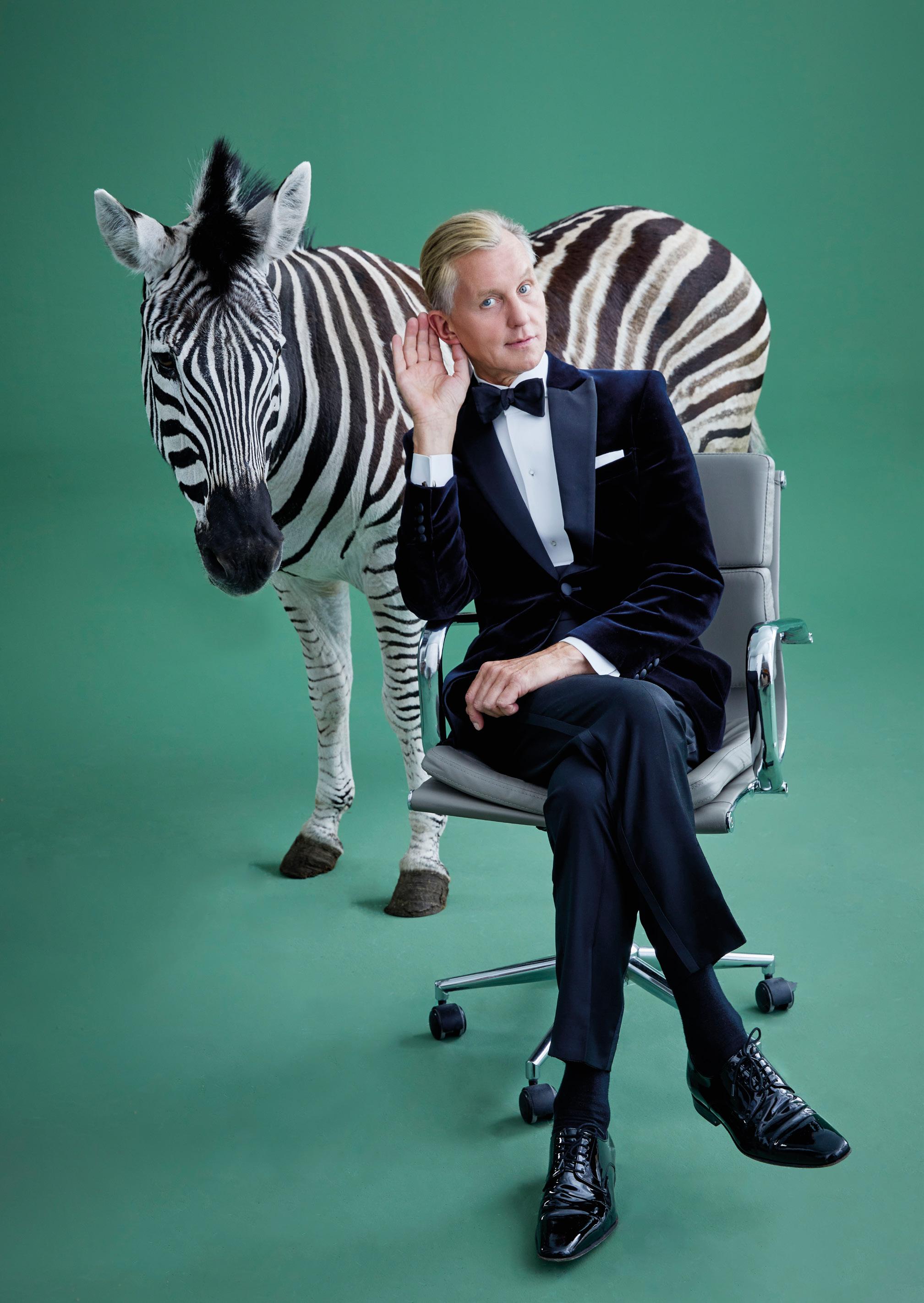 Photograph: ©Gregor Hohenberg
Photograph: ©Gregor Hohenberg

What does good style mean to you personally?

For me, good style has little to do with wardrobe, but more with inner attitude, with consideration, with the effort to get along well with each other in everyday life, showing respect.
Nevertheless, you are sitting in front of us dressed very stylishly.
Yes, but I’m questioning myself at the moment –checked shirt, checked jacket, that’s a no-go. But [laughs] I am now in ‘work mode’, so to speak, living out of a suitcase.
Can we also imagine you dressing like this in private?
It’s quite private, yes.
The motto of CHAP is ‘Expand your mind, refine your wardrobe’. What do you think: Can you expand your mind by refining your wardrobe?
If it were only possible through the wardrobe, that would be sad. Different things come together. But I think if you value your wardrobe or your appearance, then you also have a certain care for yourself.
You are well known and successful in Great Britain. What do you think is the reason for that? Is there possibly something British about you?
Well, I think I am certainly ‘the German’ there. But the amazing thing is – and I’ve also noticed this in the USA – they are actually very surprised by this very dry humour that I let shine through when introducing the next piece of music. What I say here in German can be translated wonderfully and very easily into many languages, because it is not a play on words, but rather a quirky train of thought that does not necessarily comment on the theme of the next piece, but rather grazes it. At the same time, of course, the audience also notices the musical precision and the seriousness with which we cultivate our repertoire. So, yes, they are very quirky, funny pieces, but musically we don’t approach them any differently than works by Mozart or Beethoven – everyone in the Palast Orchester is a trained musician. All these things possibly play together. And then of course there is this frightening look we bring to the stage [laughs].
Photography: ©Gregor HohenbergIs there a special anecdote you experienced during your concerts in the British Isles?
Yes, of course, we experienced several beautiful moments. Twice we played at the Twinwood Festival, where everyone, also the audience, was completely dressed in 1930s, 1940s style. Once we were invited to Westminster Abbey. During the war a magnificent old leaded glass window was destroyed, and the restoration was paid with the charity concert proceeds. What, so to speak, our grandparents had broken as Germans, we ‘sang together’ again. That was a great compliment for us.
On the cover of your new album Wer hat hier schlechte Laune (Who’s in a bad mood here), you walk across a zebra crossing with a zebra. Is the composition of the picture meant to be reminiscent of the Beatles’ Abbey Road?

“At concerts in Los Angeles, and especially in San Francisco, the audience members in the first four rows were completely dressed like in the 1930s. That was very impressive. They are very clear in their attitude there. Just as punks or goths go to the supermarket here, they go to work there in their clothes – with their leather bag and their bowler or Homburg”Photograph: ©Marcus Hoehn


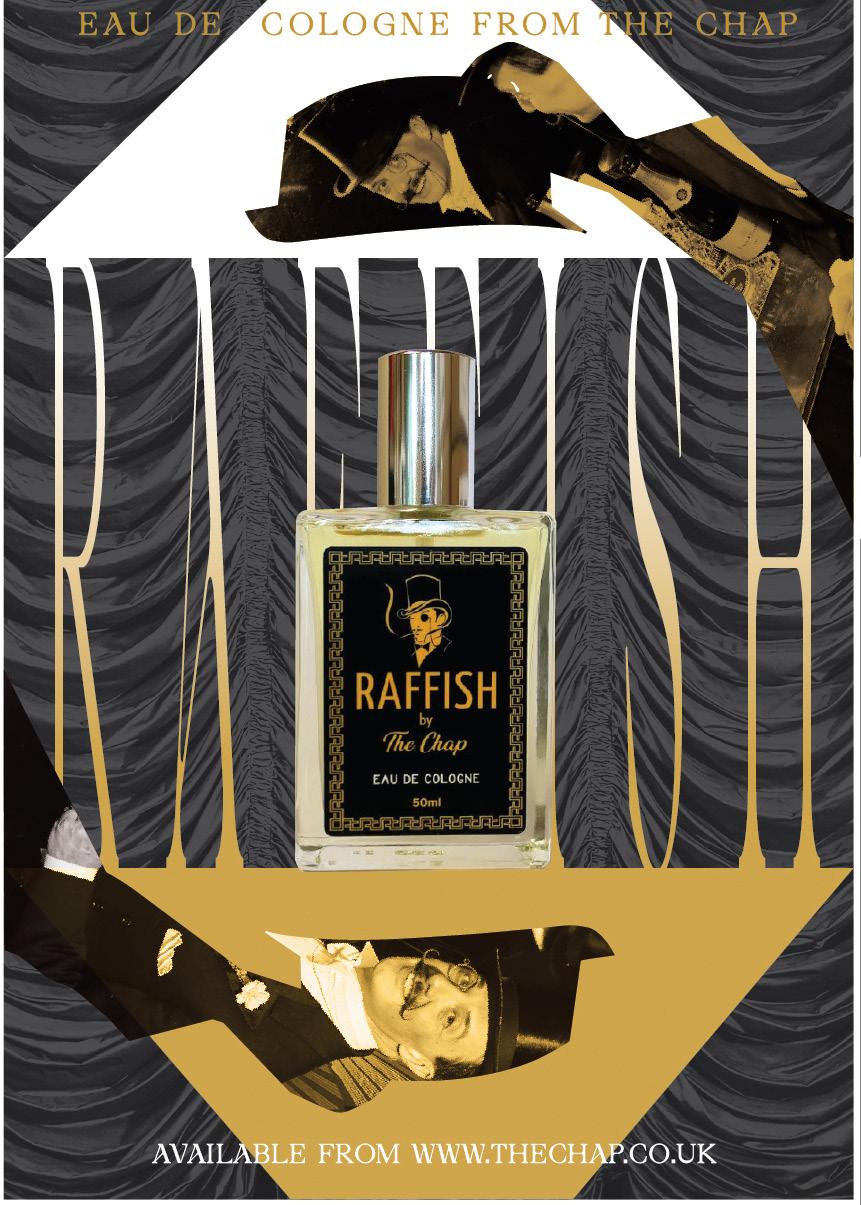


This photo came about by chance, in a way... According to the owner, this zebra was terribly bored during the Coronavirus time; it probably doesn’t even know it’s a zebra, because it’s incredibly friendly and probably thinks it’s a dog. Anyway, I got on well with the zebra. So we were in the studio, and at the end of the shoot the photographer said we might go outside to look for a nice scene. I didn’t feel like it at all, because it was 35 degrees Celsius. But then I’m thinking, ‘Wait, maybe there’s a zebra crossing out there?’ Because walking a zebra across a zebra crossing, I thought that was kind of quirky. I myself would never have been so presumptuous to walk alone across a zebra crossing ... That would have been more than culturally presumptuous.

The title song of the TV series Babylon Berlin, which can be found on this album, is currently in the upper echelons of the charts. Currently at number 3! I wrote Ein Tag wie Gold
(A Day Like Gold) together with Annette Humpe, so it’s not an authentic 1930s number. Although I also get nice reviews, it could have been a lost piece by Kurt Weill and Berthold Brecht – that’s a nice compliment, of course. If you go to the concert today, you’ll see us play the repertoire of the 1920s, 1930s, and we also play our own pieces; both merge into each other. We lure the audience with our own pieces, so to speak, and enthral them with music that they might not have had a taste for before.
You present Ein Tag wie Gold twice in the last season of Babylon Berlin: at the beginning in the grand ballroom and at the end in a low pub. In which of the two settings did you personally feel more at home?
Low pub!
And why?
I love weird pubs like that, and anything that
goes in the direction of those kind of pubs is great. Ok, if there’s smoking, it might get difficult for me, but otherwise you always meet the funniest people there.
The international vintage scene has been strongly influenced by several TV series in recent years. Do you see yourself as part of this vintage scene?
I’m not very consistent in my clothing at all. I virtually pinch from all eras and am not orthodox about it. Otherwise, I know this scene from the USA. At concerts in Los Angeles, and especially in San Francisco, the audience members in the first four rows were completely dressed like in the 1930s. That was very impressive. They are very clear in their attitude there. Just as punks or goths go to the supermarket here, they go to work there in their clothes – with their leather bag and their bowler or Homburg. You can be sure that their homes will be decorated in the same way.
Do you yourself own any originals from that time – clothes, furniture or accessories?
Some of my furniture goes back to my student days. Back then I saw an enormous sofa with lion’s feet and had no idea where to put it; I didn’t have the right flat for it. But I thought to myself, ‘One day you'll have that flat, and if you don't buy it
now, you’ll be miserable forever.’ I actually never saw such a sofa again and I’m very happy that I still own it. But my furniture is above all comfortable, and indeed reaches further into the past than into the present.
On stage you have a rather discreet and elegantly formal presentation style, I would say.

Yes, I’m acknowledging that in silence [grins].
Did you have to work on this style, or does it correspond to your nature, so to speak?
When the Palast Orchester was founded, we were still students, and we were happy that the original orchestral arrangements from that time still existed, which we could fall back on. We had worked on them with great musical attention to detail. I actually thought about my clothes before our first gig too – I had found an old double-breasted suit in a second-hand shop somewhere, black, with pinstripes, but it wasn’t even a dinner jacket. And then before we performed, we had thought about everything except what I do when I go to the front of the stage. Then I went to the front and sang, and when I was done, I went back and did not sing. And then people said, “That’s great! You’re not doing anything.” And then I thought, ‘Lucky me, if that is the case, I’ll always do it like that from now on.’ n
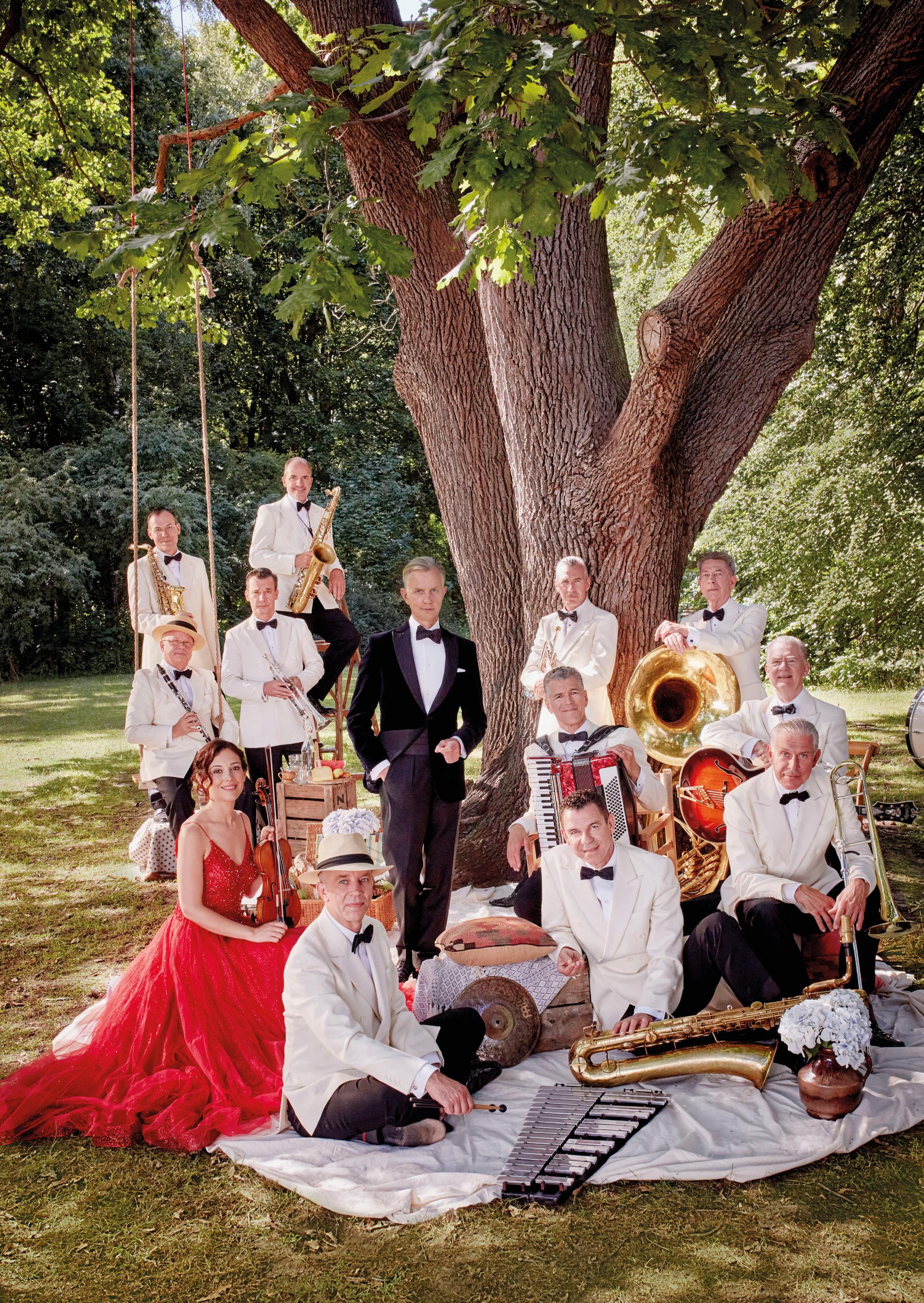 Photograph: ©Gregor Hohenberg
Photograph: ©Gregor Hohenberg
His codpiece stands polished and full. When rugby is invented, he will make an excellent prop

Henry Cockburn advises chaps considering a career in the mediaeval court on what cads and bounders to look out for, and how to outwit them using the power of foreknowledge

So, you’re about to take your first steps in the mediaeval court. Congratulations! The transition from pauper to prince can be painful but, mercifully, your life will be short. For now, carpe diem. The path before you is strewn with dung, the air sweet with pox, and no-one gives a fig about an unwashed curry receptacle in the recycling. Settle in, old spice – a few sage words from me and you’ll have at least as much chance of rising to the throne as the next fetid dogsbody.
First things first, you will need dosh. This is easily acquired by borrowing a few groats in 1065 and putting it all on William I. You may think that his epithet, ‘the Conqueror’, rather gives away the ending, but don’t forget that mediaeval people are very stupid. Science lies undiscovered and indeed
“The Bruising Barbarian’s codpiece stands polished and full. When rugby is invented he will make an excellent prop. His problem is one of risk and probability. No matter how many fights he wins, all it takes is one anachronistic banana skin on the tourney field and this chap is toast”
stuff as basic as gravity is yet to be invented. You are extremely lucky that at this time the world remains flat and sticky, or humanity would surely float off into the firmament. As an appley aside, Newton was 44 when he first made contact with gravity – while today toddlers lecture at university on the subject. All this is to show you how much larger our brains have become and how easily a chap can get on in the dimmer ages. You may be a sopping dolt in 2023, but by Jove sir, your half-remembered times table puts you in very good stead against fatheaded clots like Copernicus.
On language, you will be using, predominantly, Middle English. This is simple to pick up, merely requiring what linguists refer to as a ‘west country’ or ‘pirate’ accent. For those of you progressing to A-level standard, the word ‘thy’ marks one out as a native speaker, for example: “Your thys are looking juicy tonight, my dear.”
Depending on when you arrive in the mediaeval period, some doddering Saxon may try and speak to you in Old English. This time, communication can be achieved with the addition of a Swedish accent. Anyone with a firm grasp of Abba’s back catalogue will have no trouble securing an ealdorman after midnight, though any reference to Waterloo and which team may or may not win is best left a surprise.
Having established yourself as a minor courtier, you’ll want to suss out your mode of advancement. Here are the three traditional routes to the top:
The Bruising BarBarian. Warhammer Willy.
If you are reading this guide, this is not the option for you. This Magna Garter is invariably illiterate. He hangs human skulls from his window box. He is unusually knowledgeable on anatomy and butchery. His codpiece stands polished and full. When rugby is invented, he will make an excellent prop. His problem is one of risk and probability. No matter how many fights he wins, all it takes is one anachronistic banana skin on the tourney field and this chap is toast.
The gallanT FriBBle. a real Bonehead BoniFace. Head stuffed with the latest guff poetry from Chastity Weekly, this soppy character will play by the rules in all matters of chivalry. As a result, he will die at the first chance
he gets. This is often in a duel with a handful of sand in his eyes, though at other times his demise comes about through his keenness to ‘prove himself’ in volunteering for the vanguard. Picture the cream of the French nobility riding through mud towards the warbows of Agincourt and you’ll have some idea of this man’s precarious position.
The greasy Whisperer. To be found plotting in back rooms, usually of one of the brothels he owns. Highly intelligent, he relies on going about undetected, ending up ‘unintentionally’ running the duchy, army, or the ‘Knight’s Kingdom’ in Legoland. When alone, this chap enjoys swimming in impractically large piles of gold, chaffing be damned. His problem is keeping his suspicious success under wraps. After all, the old guard tend to take note when the bastard third son twice removed of a minor family is suddenly twittering in the ear of the monarch. They start to take an interest in, say, how it came to pass that fifteen of the man’s relatives just happened to independently mistake the malmsey butt for the bathtub and inadvertently nail themselves inside. Once the rumour of foul play gets out, it’s tapestries for this chap, I’m afraid.
Typically, these three characters behave as though in a great game of rock, paper, scissors: bruiser murders paladin but paladin sees through conspirator, who in turn manipulates bruiser. This natural conflict explains the dizzying mediaeval king lists with their abrupt hackings, flayings and general pokerings. The result? Big, sticky, yet tastefully blue-blooded piles of pulp.
If you want my advice, forget such dangerous methods of advancement. Here are three lesser-known types to emulate, who really know how to get on in the mediaeval court.
3 1
If prancing about in green tights is your bag and the idea of bunking up with Lil’ John the Gothic MC doesn’t appeal, this is the option for you.
‘But I’m as funny as a flush of gout,’ I hear you say. Fortunately, the mediaeval funny bone is Germanic in sensibility, and the role requires little more than blowing a few raspberries and the occasional bawdy reference to the king’s chipolata. Don’t believe me? Try sitting through one of Shakespeare’s ‘comedies’ sometime. The more adventurous fool can attempt
To be found plotting in back rooms, usually of one of the brothels he owns

What's the deal with Huguenots; am I right, squires?

wry post-modern monologues on the state of serfdom, or the occasional ‘What’s the deal with the Huguenots; am I right, squires?’ but in general, Keystone Constables fare will suffice.
The monk
Imagine the amount of brotherly vice, corruption and sluggardliness it would take to make a king break with the church and dissolute his way into a full-blown reformation. You are aiming for one level below that.
If you can stomach a couple of masses a year, you can spend the rest of your time asking such theological questions as: how many nuns can squeeze into one habit, does a quart of Buckfast keep the Black Death at bay, and how much should one charge for an under-the-counter murder absolution. No, you’ll never reach the top, but by golly you’ll be comfortable. This, incidentally, is the only option for the follically challenged—you’ll be right at home amidst the dodgy tonsures.
The sniveller
This wormish creature has a lot in common with the greasy whisperer above, the main difference being a sort of pungent cowardice. Do not be afraid to flaunt your lack of backbone – indeed, wear it as a badge of honour. Your natural enemy will be another wheedling wretch like yourself, with each of you vying to lick any available inch of boot. Chaps, poison those boots. A thin coating of earwax to the tongue will keep you safe. Probably.
In times of revolution, declare yourself for the status quo then prove your true loyalties by being the first to stick your stiletto into the king. It helps at that moment to produce a document questioning his legitimacy (see the Blue Peter website for instructions on ageing velum with used teabags).
It’s not all work, though. As a good nobleman, you have two options for recreational activities. The first is to attend something called a ‘theatre’ – a large wooden television in which you sit with the actors, much like a drive-in safari. This is an excellent place to be seen in all your finery, as well as to take a nap, if you can do it standing up.
The second, of course, is the quest for courtly love. A syphilitic trail points the way to the best action. Most countries know it as a French thing, who in turn think of it as Italianate. The Dutch blame the Spanish, the Russians the Poles, and the Turks blame all Christendom. It may be worth
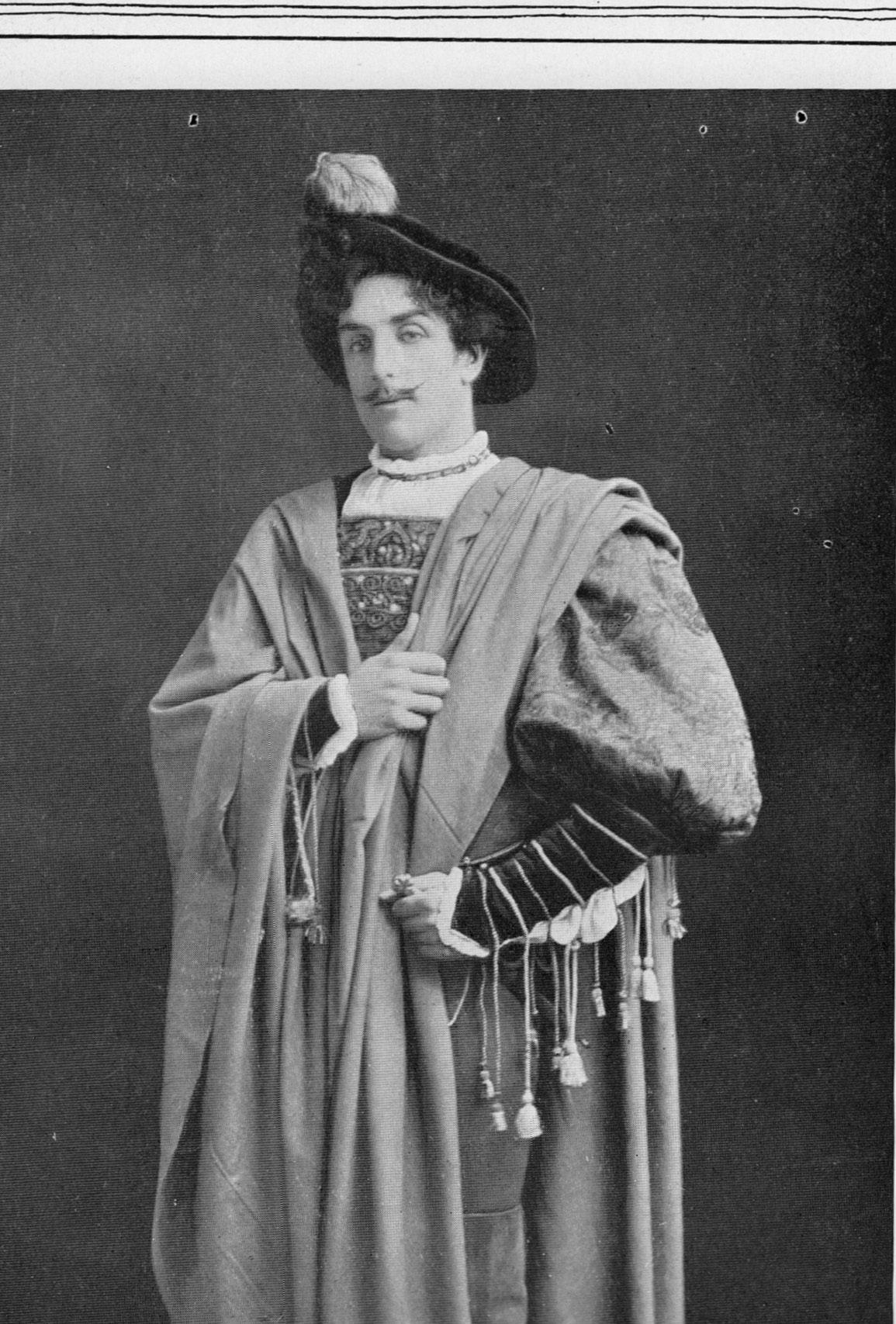
travelling to each of these places in turn, purely for academic reasons, you understand, to study its spread in detail.
Having followed these steps to the letter, you should by now be the king. It is time to absolve yourself of any sins committed along the way, behead any Cromwell who crosses your path, and enjoy that glorious divine right. Constitutional monarchy is coming and it won’t be pretty.
Oh, and one final plea from the future. If you get mixed up in one of those blood and guts crusade affairs, bring back some blasted recipes. Food doesn’t have to be all bread sauce and Aunt Bessie’s. It may seem ludicrous to you, but killing will go out of style – a culinary legacy will enshrine you as our greatest ever monarch. All hail Derek the Fat, First of his Name! n
This soppy character will play by the rules in matters of chivalry

Olivier Woodes-Farquharson investigates the parsimonious life of Hetty Green, once the richest woman in the world, yet who wore the same dress for most of her adult life and refused any medical treatment because she thought it was too expensive
Picture, if you will, this incongruous scene: New York, where the 19th century is about to give way to the 20th. In the corner of a nondescript bank office on Broadway sits, alone at her spartan desk, an ageing lady. She wears a black dress – her only dress – which has been worn so often and washed so little that it is turning green. Her fingernails are profoundly crusty and dirt-smeared, as though she has just returned from gardening. It is a hot summer’s day, and she absolutely reeks, hence her being alone – no-one can get near her without retching, for she barely washes; hot water, after all, costs money. She has been in pain from a troublesome hernia for 20 years but does not want to spend any money on a doctor, instead opting to poke it in with a stick.

“On her 20th birthday Hetty’s father bought her $1200 of fashionable dresses to woo the New York crowd and hook herself a man. She immediately sold all the clothes and invested the money in government bonds. The apple had not fallen far from the tree”ILLUSTRATION: MARK ELLENDER
Yet this stinking, boxer-faced old crone is Hetty Green, known to many as The Witch of Wall Street, and is in fact a financial wizard and unquestionably the world’s richest woman. And as we try to understand her and peel back the contradictory layers of this particularly rancid onion, it is clear that ‘stingy’ doesn’t even come close to describing her.
As with so many other wealthy types, Henriette Howland Robinson had the advantage of a pretty big head start. Her Quaker family from New Bedford, Massachusetts, ran the largest whaling fleet in the area, and were one of the few allowed to trade profitably with China. They had not just a mountain of greenbacks in the bank but also the ambition for many more. Her grandfather Gideon Howland encouraged her from age six to read the financial papers; her father – initially upset that his only offspring had been a foul-tempered little madam – made the most of his situation and entrusted her as the main bookkeeper for the firm from age 13. He also passed on a mantra that she took very closely to her stone-cold heart: ‘My father told me never to give anyone anything, not even a kindness,’ she proudly said in later life to a reporter. He was keen that she married money, and so on her 20th birthday he bought her $1200 of fashionable dresses to woo the New York crowd and hook herself a man. She immediately sold all the clothes and invested the money in government bonds. The apple had not fallen far from the tree.

When he passed on, he left the 30-year old Hetty the not inconsiderable sum of $6 million, which rapidly had another $2 million added to it when her Aunt Sylvia died very soon after, although it was later proven that Hetty had forged the will in her favour. Hetty could thereafter have done very little other than enjoy a relaxed and very privileged life. She instead chose a path that was the violent opposite, and vowed to make herself obscenely rich – partly via clever investments, and partly because of her aversion-bordering-on-allergy to spend anything. It was around this time that she met the self-made millionaire Edward Green. They married in 1867, with Hetty – like a latter-day Hollywood starlet – insisting on a pre-nup so that Edward, 14 years her senior, would have no claim to her fortune in case of divorce.
With accusations of will-forgery now hot, the couple fled to London until the Statute of Limitations kicked in, but used the time to add to their fortune by investing on her compound interest. She also had time to produce two children – Ned and Sylvia – before they returned to settle, initially in Vermont and latterly in New York, where the real cash was to be made. Within a decade, such was Hetty’s canniness with investing from her scruffy offices at the Chemical Bank that her name began to be mentioned alongside JP Morgan, JD Rockefeller and the other members of this new aristocratic class of the Gilded Age, whose social status was defined by nothing more or less than the overflowing size of their bank accounts. It was also exceptionally rare that any of these powerful men – in an era, and line of work, of such inherent misogyny – should ask a woman for financial advice. And yet they certainly did.
But how did Hetty accumulate such wealth? Initially she invested interest from her estate into railway bonds. Thereafter, she bought a raft of emergency greenbacks printed during the Civil War. Although it appeared to others that these were devalued after the war ended, Hetty patiently held on, and was rewarded in 1875 when President Grant, during a brief economic crisis, decided once again to back them, so she sold them all and made another vast profit. The Gilded Age came to an end in the 1890s, so she started loaning her wealth to the suddenly impoverished municipal government of New York City, again picking up huge profits when no-one else was. Such was her mastery and close knowledge of the market that, when loaning money to New York, the head comptroller said she knew exactly how much he would ask for before he
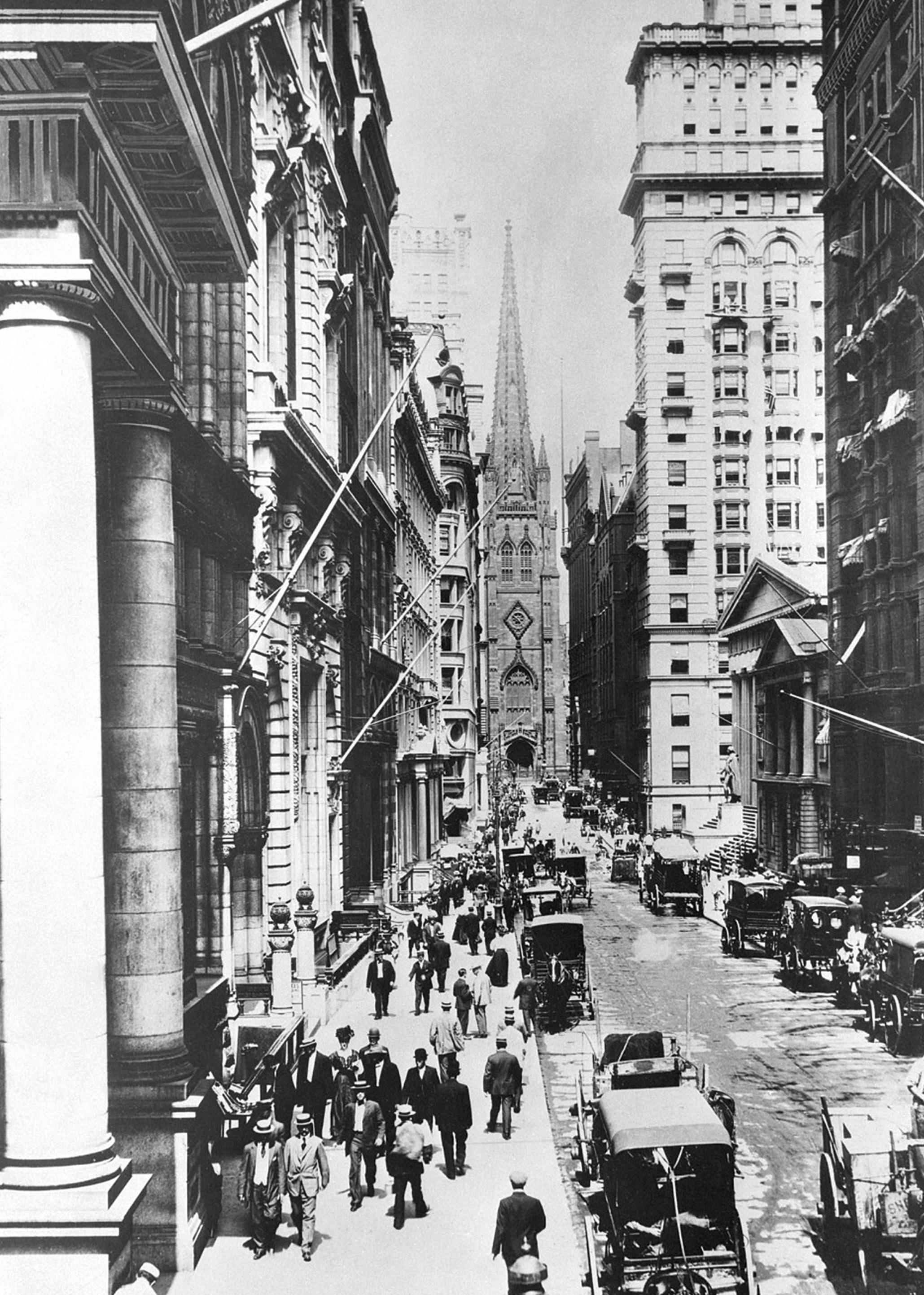
opened his mouth; she was, it seemed, as ruthless a loan shark as a 19th century Warren Buffett.
You would think with such astonishing wealth that she would at the very least have secured herself a beautiful brownstone home in Manhattan’s Upper East Side. In fact, Hetty didn’t buy anywhere for herself, and was officially of No Fixed Abode. So loath was she to pay the property tax that she would rent rooms in grimy apartments, cheap flea-ridden hotels and other unsavoury hovels, changing home constantly to keep ahead of tax collectors. When one tax assessor asked her where she slept, she sniffily replied: ‘I don’t know; can you recommend a place?’
Her food intake was similarly spartan. Hetty’s daily intake usually consisted only of onions, eggs, and oatmeal (which she heated, dry, on an office radiator), with an occasional nasty 15-cent pie for lunch. However, the most jaw-droppingly shocking display of miserliness revolved around her son Ned. Reports are mixed as to whether he injured his leg as a nine-year-old by falling from a tree or in a sledding accident. No matter. Hetty – despite her millions – refused to spend a cent on a doctor to fix it. Initially she tried to go to a free clinic for the homeless, but she was recognised and thrown out, so she tried to fix it herself, resulting in the poor boy suffering a limp for several years as his leg became gangrenous – and still his mother did nothing. Eventually there was no option but to amputate above the knee. The poor boy had a prosthesis
made of cork (the cheapest option) and it seems his mother never regretted her breathtakingly heartless lack of intervention. She instead focused her limited emotions on her dog, Dewey, whom she claimed was her best friend because ‘he doesn’t know how rich I am’.
By this stage she had separated from Edward Senior, whose own investments were becoming a liability to her wealth. She still refused to divorce him, though, as that would have meant paying legal fees. It was telling that, in an unheard-of break with the norm, she was known as ‘Mrs Hetty Green’,

“Hetty’s defenders claimed that, in the past, she could have been called ‘pretty’ –and they might have had a case if by ‘the past’ they meant the Cretaceous era. She was unequivocally possessed of a scowling, Lovecraftian face that had shrivelled in on itself like a dried and sour prune, matching her persona and life choices impeccably”
whilst Edward had been referred to as ‘husband of Hetty Green’. “A girl should be brought up as to be able to make her own living, whether or not she’s going to inherit a fortune,” insisted Hetty. As for her knack of repeatedly making fortunes, she was more vague when asked for her secret: “There is no great secret in fortune making. All you do is buy cheap and sell dear, act with thrift and shrewdness and be persistent.”
Latter-day apologists have tried to reinvent Hetty Green’s behaviours and decisions as acceptable or of their time. To them, buried under the detritus of her rotten exterior, and in between the sharp-edged chips shuffling for space on her whiffy shoulders, there was in fact a decent woman accidentally trying to find her way out, one who allegedly quietly donated to hospitals and nurses’ homes. As straw-clutching goes, it takes some beating, for as long as we believe the story about her son’s leg is true – and numerous sources suggest that it is – it is an immensely hard assertion to accept that she was anything other than a joysucking miserablist. It is worth noting that these same defenders also claimed that, in the past, she could have been called ‘pretty’ – and they might have had a case if by ‘the past’ they meant the Cretaceous era. Photos tend not to lie, and to these eyes at least she was unequivocally in possession of a scowling, Lovecraftian face that had shrivelled in on itself like a dried and sour prune, matching her persona and life choices impeccably.
Her poor daughter Sylvia wasn’t spared either. Hetty, predictably, disapproved of all of Sylvia’s suitors, convinced that each and every one was after nothing more than her piles of filthy lucre, thus ensuring that Sylvia remained unmarried into her 30s. Only when she was courted by a member of the wealthy Astor family was Hetty satisfied that it was unlikely he was driven by the need for more money. But none of this should have come as a surprise. After all, this was the old bat who once walked with fully $200,000 on her person to deposit it at the bank. When the manager admonished her for walking, suggesting that she should have taken a carriage for safety, she replied – with no sense of irony, ‘Perhaps you can afford a carriage, but I cannot!’ It is hard to confirm the veracity of another notorious story: that Hetty once spent two hours scrambling around the inside of a carriage that she had deigned to take, convinced that she had misplaced a 2-cent stamp. That we even entertain the story as a distinct possibility speaks volumes to the reputation that she built around herself.
Yet even Hetty’s formidable constitution had its limits, and eventually the hernia that had been playing havoc with her for two decades needed urgent attention. She grudgingly realised that she needed to see a doctor. Fully aware of her reputation, he coolly told her that his fee was $150 for an operation, with hospital fees extra. “You’re all alike,” she shrieked back, “a bunch of robbers.” Still needing to pay her $15 consultation fee, the doctor later recounted that, “She shuffled about under her coat for ages and eventually produced it from her handbag, which was tied round her waist with string.”
Hetty’s health nevertheless deteriorated further, and she passed away of a stroke aged 81 in 1916. Her wealth was thought to be around $200 million – easily $5 billion in today’s money. When this vast pot passed on to Ned and latterly Sylvia, they were more generously-minded, and left the majority to colleges, hospitals, churches and various charities. One can only assume that in the process they heard the apoplectic rages of their singular mother as she turned violently in her pauper’s grave. n
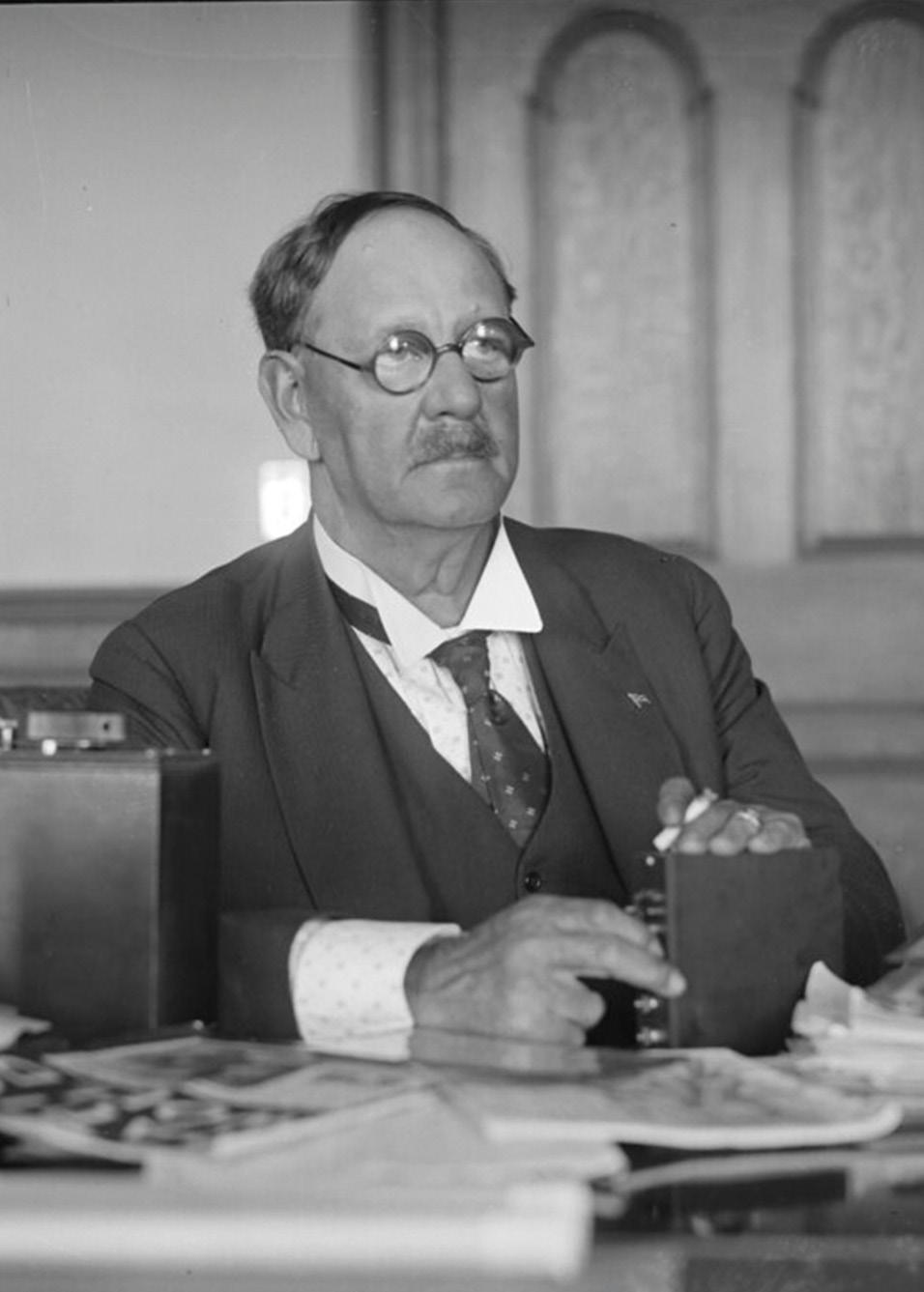




Gustav Temple samples beverages old and new from the Italian brand Luxardo, all of which are steeped in 200 years of marasca cherries, and provides the best cocktail recipes to make with Luxardo
“Luxardo was awarded a ‘privilege’ by the Emperor of Austria, allowing Girolamo’s bottles to bear the legend ‘Privilegiata Ditta Maraschino Excelsior’, meaning something like, ‘This is jolly good stuff and by jingo you should drink it’. And people all over the world certainly did, making Luxardo one of the most popular cocktail ingredients from Singapore to New York”
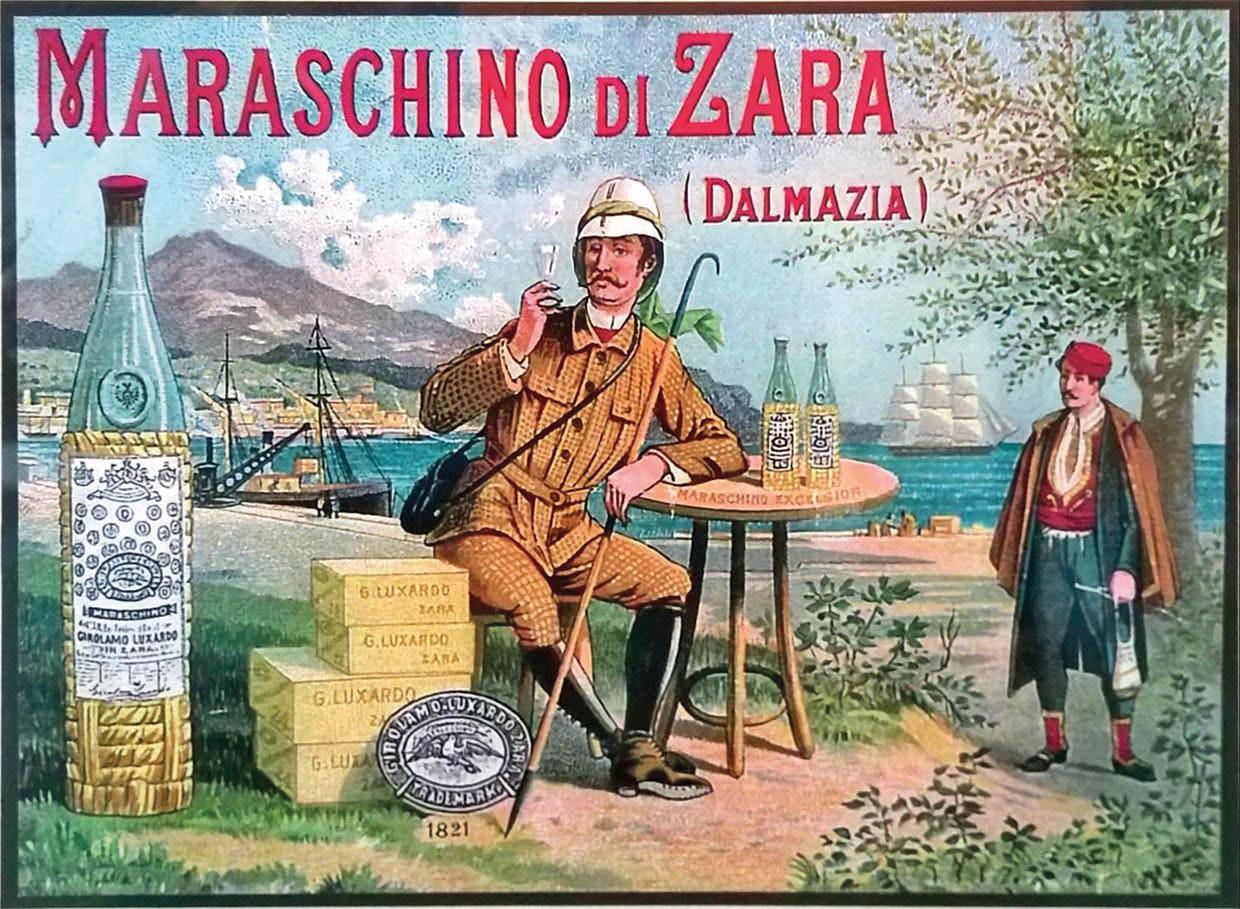
Unlike the lemon, or the orange or the olive, the maraschino cherry has only one role in life: to adorn and add flavour to delicious cocktails such as the Manhattan and the Singapore Sling. The marasca cherry, which is pickled in sugar syrup to produce maraschino cherries, is smaller and more bitter than traditional cherries, in fact virtually inedible straight from the tree.
Enter the young Girolamo Luxardo and his wife Maria Canevari in Zara, the old capital of Dalmatia, now in Croatia, in the early 1800s, who together plucked the humble marasca cherry from the local trees and turned it into an internationally celebrated cocktail mixer’s staple. Back then it was
traditional for women to create their own liqueurs at home, and Maria produced batch after batch of rosolio maraschino, made with marasca cherries and based on a local recipe.
Girolamo, while sipping his rosolio maraschino every night after dinner, one evening turned to his wife and said something in Italian that roughly translates as, “This drink so superb, my sweet, that I am going to open a distillery so that everyone in Italy can enjoy it.” Maria rolled her big brown eyes and said something like, “Oh, Girolamo, you and your silly ideas!” But Girolamo, not sufficiently challenged by his duties as consul to the Kingdom of Sardinia, was true to his word, and in 1821 the Luxardo Distillery was opened.

Eight years later, Luxardo was awarded a ‘privilege’ by the Emperor of Austria, the equivalent of a Royal Warrant in the UK, allowing Girolamo’s bottles to bear the legend ‘Privilegiata Ditta Maraschino Excelsior’, meaning something like, ‘This is jolly good stuff and by jingo you should drink it’. And people all over the world certainly did, making Luxardo one of the most popular cocktail ingredients from Singapore to New York. The distillery diversified, adding to their flagship beverage more traditional Italian liqueurs like

limoncello, along with their own inventions such as Sangue Morlacco, a cherry liqueur, and also selling jars of the sweetened marasca cherries, all of which are still sold today by Luxardo. By 1913, the third generation of Luxardos, headed by Michelangelo

Luxardo, founded an even bigger and ultra modern distillery on the site of the old building, making it one of the biggest distilleries in the entire AustroHungarian Empire. The culmination of the First World War brought about a change to the distillery’s nationality – Zara was now part of Italy, rather than the dissolved former state of Dalmatia. With 85 per cent of the Dalmatian population being Italian, this made perfect sense to everyone, especially the proud Italian family of Luxardo.
But then disaster struck for the family during the Second World War, when the Luxardo distillery was razed to the ground, along with most of Zara, in Allied bombing raids, and the then head of the family Pietro Luxardo disappeared without a trace, while Nicolo Luxardo II and his wife Bianca were killed. The surviving members of the family fled to Italy, with all their belongings confiscated by Tito’s Communist partisans.
The Luxardo family, however, were not to be beaten. The last surviving brother, Giorgio Luxardo, rebuilt the distillery from scratch in Torreglia, northeast Italy. Saying something to his younger relatives like, ‘The world will not be denied delicious drinks made from marasca cherries and the Luxardo brand will rise again!’, the distillery slowly regained its place in the global drinks market as the maker of the finest maraschino cherry liqueur in the world. The original packaging, a tall, narrow, green bottle housed in a straw base, to protect it from breakage during the dark days before bubble wrap, remains unchanged, and the rough paper label adds to the 19th century charm of the bottle.
Today, the 7th generation of Luxardos is at the helm, in the form of Nicolò Luxardo, who has expanded the range from the original ‘classic’ Luxardo Maraschino Liqueur to include Amaretto, Sambuca, a sour cherry gin and a London Dry Gin, as well as recent addition Luxardo Bitter Bianco, based on a traditional Italian aperitivo. This means that one could create dozens and dozens of cocktails purely from Luxardo products. However, we are not recommending one spend a fortune on all the Luxardo products, at least not initially. The original maraschino liqueur, along with a jar of Luxardo maraschino cherries, will be quite sufficient to make all the cocktails whose recipes we have provided, along with countless others. And the cherries themselves are a million miles from those glacé cherries used in baking, which are usually flavoured with almond essence and tons of sugar. The Luxardo cherries are a deep, dark, red-black colour, with a rich sweetness that quickly gives way to a succulent bitterness at the centre, drowned in the nearly black sugar syrup. They make you want to speak Italian as soon as you eat one, and guzzle your cocktail as quickly as possible, so you can eat the one that’s been pickled in your Aviation or Sour Cherry Martinez. n








1.5 oz Luxardo Sour Cherry Gin
1 oz Sweet Vermouth
oz Luxardo Maraschino Originale
2 Dashes Angostura Bitters
Stir all ingredients in a coupé glass and garnish with a twist of lemon peel.



COLONIAL COCKTAIL

1.5 oz London Dry Gin
1/4 oz Luxardo Maraschino Originale
1 oz Fresh Pink
Grapefruit Juice
Shake over ice and strain into a coupé glass.
AVIATION
1/2 oz London Dry Gin


1/
2 oz Luxardo Maraschino
Originale
1/2 oz Fresh Lemon Juice
1/4 oz Crème de Violette
Shake over ice and strain into a coupé glass.


Garnish with one Luxardo Maraschino Cherry.
HEMINGWAY SPECIAL
2 oz White Rum
1 oz Fresh Pink Grapefruit Juice
1/2 oz Luxardo Maraschino Originale
1/2 oz Freshly Squeezed Lime Juice
1/4 oz Sugar Syrup
Shake all ingredients over ice and strain into a martini glass. Garnish with a twist of lime peel.
020 7259 5599 info@lanesborough.com www.oetkercollection.com
Larman is usually a punctual chap, but on this occasion he was late for our appointment with victuals at Hyde Park Corner. I had to admonish him soundly under Wellington Gate when he finally arrived, listening to his implausible hack’s excuse – something about watching and writing about a documentary concerning the 21st century Beckhams, Harry and Meghan. While I had passed the time, by wandering below the walls of Buckingham Palace to await him, watching a minor cavalcade of royal
pageantry clipping along in carriages towards the Park, swiftly followed by a brace of bulletproof Range Rovers speeding by, flanked by outriders and presumably containing minor royals, a theme was emerging: H&M are missing out, ensconced in their Beverly Hills belvedere and concentrating on building their ‘brand’.
Once Larman had apologised sufficiently, and had been forgiven, we strolled into the ivory pillars of the Lanesborough, whose entrance resembles a gigantic wedding cake, with discussion about a
“For Larman, a glass of the Rock Angel rosé fitted the bill; I was given a fine Slovenian Chardonnay, and it was practically the best thing I’ve drunk all year. I warmed to Adam Ramic immediately over some chat of his homeland, where I happened to have been married many Chardonnays ago”THE LANESBOROUGH GRILL, HYDE PARK CORNER, LONDON SW1X 7TA
documentary that one of us had had to watch and one of us will never watch dispensed in a few pithy phrases (“Depressingly awful”).
And so to the feast, in the grand atrium of the Lanesborough where, for some reason, everybody else seemed to be consuming bilious-looking redcoloured cocktails (‘If they’re not Bloody Marys we’re not interested’). We prudently stuck to Moët & Chandon while perusing the menu.

Sticking to a time-honoured tradition of sampling as many Beef Wellingtons as humanly possible, I chose to sample chef Shay Cooper’s take on that school dinner staple (if one went to Eton, which one didn’t), my selection partially influenced by Decimus Burton’s Wellington Arch, visible through the window. Beef Wellington was of course
named after the 1st Duke of Wellington, created just after his victory over the French at the Battle of Waterloo in 1815. Larman was not in the mood for a history lesson with his lunch, so he plumped, fairly predictably, for Roast Sirloin of Hereford beef, horseradish and apple cream, Yorkshire pudding and roast potatoes.
By the time our starters arrived (Pressed terrine of smoked ham hock and guinea fowl with celeriac and mustard seed, and Cured salmon and Lytham shrimp cocktail with horseradish and light oyster cream) Slovenian sommelier Adam Ramic was at our side, casting his expert eye over our selections and immediately deciding which wines were required. For Larman, a glass of the Rock Angel rosé fitted the bill; I was given a fine

Slovenian Chardonnay, and it was practically the best thing I’ve drunk all year. I warmed to Ramic immediately over some chat of his homeland, where I happened to have been married many
Chardonnays ago. When Adam departed, Larman and I asked each other: should not a gentleman have a sommelier at his side providing comestible guidance during every meal ever taken? It seemed a crime against humanity that this was not the case.
The main courses arrived with a discreet flourish, as the pianist took his seat for the afternoon’s recital of popular ditties. The great Cooper had managed to breathe new life into both British Sunday lunch classics; the Beef Wellington a generous heft of beef, paté and pastry adorning the modestly covered plate with an air of dominance, as it were saying, ‘Sir won’t be needing much else apart from this’. Larman’s Roast Beef differed in approach, arriving with an army of succulent vegetables and a Yorkshire Pudding larger than his fist, smothered in rich gravy the colour of blood, looking like the site of a noble battle that had been won by the chef-de-partie.
Adam Ramic materialised by our side, barely

“The great Cooper had managed to breathe new life into both British Sunday lunch classics; the Beef Wellington a generous heft of beef, paté and pastry adorning the modestly covered plate with an air of dominance, as it were saying, ‘Sir won’t be needing much else apart from this’”
examining our selections before declaring that what we both needed, more than anything in the world, was two glasses of a Californian red from Napa Valley blending Syrah, Petite Syrah and Barbera grapes. We had to admit that, despite the wine hailing from precisely the state where the aforementioned disaffected royals had made their home, there couldn’t have been a more suitable accompaniment to our repast.
Talk turned to Elvis, the movie, and, while discussing which rock legend Larman would enjoy being given the Baz Lurhmann treatment, the expected response of ‘David Bowie’ was immediately, and purely by coincidence, serenaded by a rendition of Life on Mars by the chuckling pianist, who seemed

“There was much goodnatured badinage about the size of the bottle that the confident waitress wielded with panache. A Jeroboam? A Nebuchadnezzar? A Balthazar? Readers, we were too dazzled to ask. All we can say is that the bottle was enormous”
to know something nobody else in the room did, judging by the perpetual smile on his chops. Perhaps said ivory tickler had sampled Shay Cooper’s puddings. We plumped for, respectively, a dark chocolate ganache with Earl Grey ice cream, and caramelised brioche pudding, burnt orange puree and milk ice cream. The combined flavours were enough to bring a smile to anyone’s lips. Larman was served a glass of a 10-year-old port with his ganache, and there was much goodnatured badinage about the size of the bottle that the confident waitress wielded with panache; a Jeroboam? A Nebuchadnezzar? A Balthazar? Readers, we were too dazzled to ask. All we can say is that the bottle was enormous.
Dining at the Lanesborough, in the almost literal shadow of Buckingham Palace, provides a return to a more princely, and thoroughly decent, era; an age of steaming horses, carriages, men in red uniforms and gentlemen dining on honest, hearty fare without any pretentions or pointless innovations. It is an echo of the very world that the Duke and Duchess of Sussex have eschewed in favour of the same new world that all their Californian counterparts crave, and they are disingenuous to reject it. I shall leave the last word to Larman, who, considering himself redeemed by the quality of the repast, nodded at me as we departed, ‘Now that’s far too good for Harry and Meghan.’ n





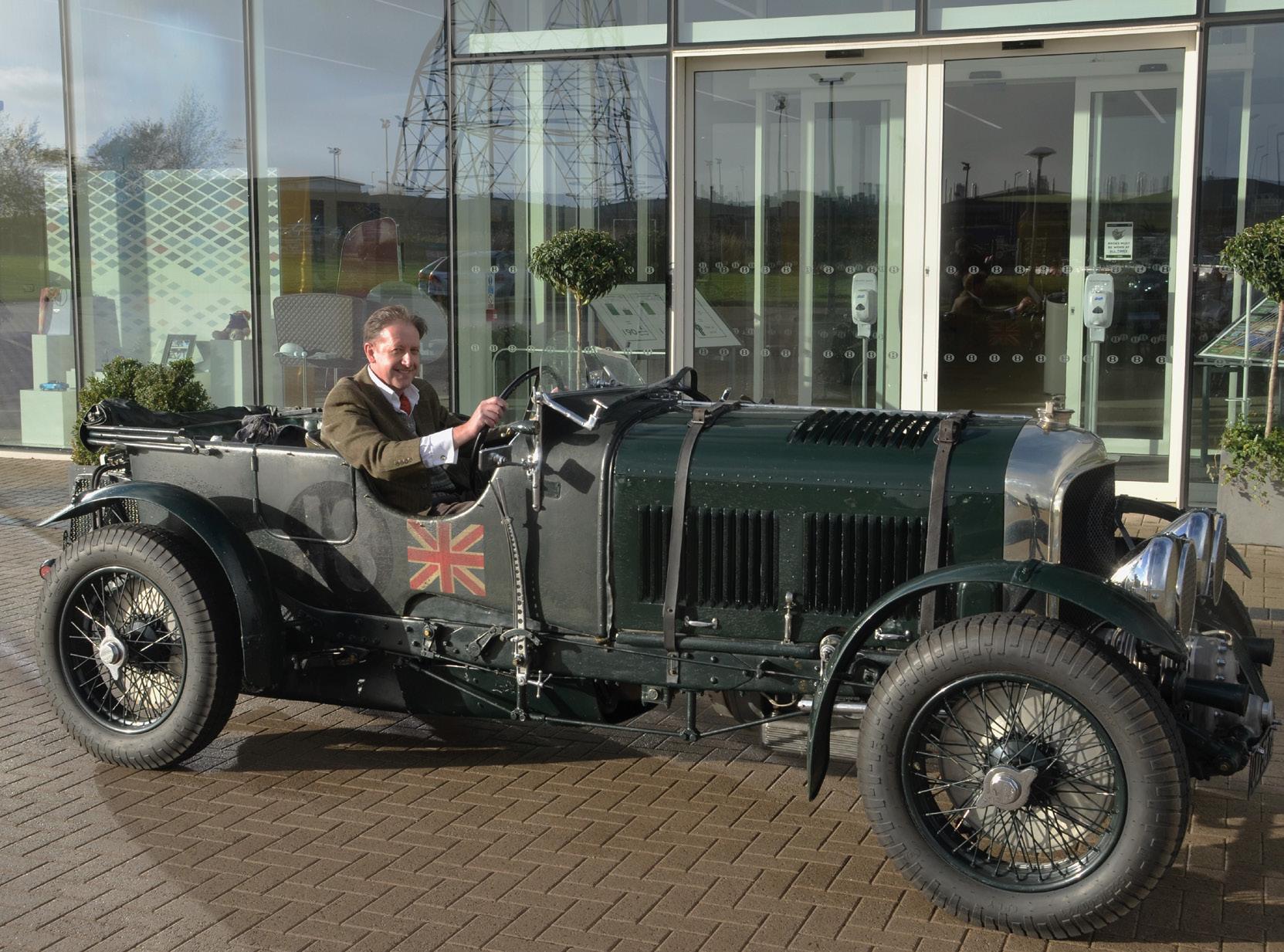

“The exclusivity and sheer presence of the Bentley cars elevated them above most of their peers, in a period when motor racing was seen as gladiatorial, a lofty position reinforced by the wider antics of the drivers away from the track”

The term ‘Bentley Boys’ was originally coined for the mechanics of the company’s racing team, although, much to the chagrin of its new recipients, the press soon applied the label to the team’s drivers instead. However, given their reputation for wild parties (having both funds and temperament to indulge in the high life) and it being the age of the wilfully childlike Bright Young Things, this was all but inevitable. To view them purely through the lens of such caricature though is to do them a great disservice.

The factory team was active from 1922 to 1931, during which time there were quite a few drivers who earned the label ‘Bentley Boy’, some as regular team members and others on the fringes. Their biographies and escapades have filled many books so, of necessity, this can only be a brief introduction. International businessman Woolf Barnato, textiles heir Sir Henry ‘Tim’ Birkin, Harley Street bacteriologist Dr Benjafield and Lieutenant Commander Glen Kidston R.N were all stalwarts of the team and are all well suited to illustrate the apparent dichotomy of frivolity and committed racer. Le Mans, with its gruelling 24hour race, and lethally fast Brooklands are naturally the venues that best illustrate their various successes
won through skill, courage and determination. The exclusivity and sheer presence of the Bentley cars elevated them above most of their peers, in a period when motor racing was seen as gladiatorial, a lofty position reinforced by the wider antics of the drivers away from the track. Race at Brooklands during the day, drive back to London and party through the night – or over the next few days: this was the modus operandi of the typical Bentley Boy. Four of their number had adjacent apartments on a corner of fashionable Grosvenor Square, which led to cabbies referring to it as ‘Bentley Corner’. As one would expect, there are no detailed records of the revels at these gatherings, but it wasn’t unknown for the police to receive a call from one of the more genteel neighbours asking if they could stop the impromptu car race that had broken out around the square during the small hours. A more wholesome example of their extroverted approach to motor sport is given by the party thrown by Autocar magazine to celebrate the team’s win at Le Mans in 1927. This took the form of an 11-course meal at the Savoy, with a battered and dirty ‘Old Number 7’, the winning 4 ½-litre shipped directly from the circuit, surrounded by tables in the ballroom as ‘guest of honour’.

Chief among this band of gregarious adventurers was Woolf Barnato who, despite being a tenacious and at times hard-nosed businessman, conformed to the emerging stereotype of international playboy. A keen all round sportsman who bred horses and frequented the most prestigious hotels across the globe, he threw the most lavish parties. To win what was allegedly an impromptu bet made while holidaying in the South of France, he raced the Blue Train across France in his Bentley in 1931 and won handsomely. He was also, according to company founder ‘W.O.’ Bentley himself, one of the best long distance racing drivers of his era, due to his consistency in hitting target times for laps. He took three consecutive wins at Le Mans from 1928 to 1930, while wins at Brooklands included both the prestigious ‘Six Hour’ and ‘Double Twelve’.
If Barnato was the thinking, metronomically reliable team member, then Tim Birkin was the dashing and flamboyant instinctive racer. Invariably sporting a polka dot silk scarf at the wheel, his determination to prevent Britain from getting left behind on the European circuits saw him initiate the supercharged Bentley ‘Blower’ project. Developed privately and funded by the Honourable Dorothy Paget, this was a car that, despite causing a stir, would avoid major success in its day. Barnato, having become Chairman of Bentley Motors, pressured W.O. into agreeing to build the 50 production cars to allow it to enter Le Mans. W.O. always complained thereafter that adding the supercharger was a corruption of the performance. Against such criticism, Birkin used his Blower aggressively to harry Carraciola at Le Mans, forcing the German to push on harder in his dominant Mercedes than was prudent. This led to the premature retirement of both cars, leaving the factory’s un-supercharged Bentleys to take the victory. Birkin also took a remarkable 2nd place in the 1930 French Grand Prix, driving a partially stripped road-going Blower against bespoke racing machinery. He was a multiple Le Mans winner, taking victory for Bentley in 1929, and among various successes at Brooklands held the lap record with the single seat Blower.
Benjafield was a naturally fast, reliable and courageous driver, albeit with little or no mechanical knowledge. His position as a medical consultant allowed him the time and means to indulge his racing hobby, while his good-natured

disposition also made him one of the most popular members of the team. The dinner parties at his Harley Street house led to the founding of the British Racing Drivers Club in 1928, and it is quite fitting that a large number of those who race vintage Bentleys today do so under the ‘Benjafield Racing Club’ banner. ‘Benjy’ managed to win at Le Mans in 1927 with a car so badly damaged it remains a surprise that it completed the 24 hours at all.

Kidston, a big game hunter, record-breaking pilot, pioneering submariner and expert shot, could have been the inspiration for so many ‘boy’s own’ stories. He was on a scheduled flight from Croydon when the aircraft crashed. Kidston kicked his way out of the fuselage while he was on fire,
rolled on the grass to put the flames out, then tried to rescue his fellow passengers. Sadly, despite such heroism, he failed and was consequently the only survivor. He died in an air accident in 1932, with former lovers Margaret Whigham (Duchess of Argyll) and Barbara Cartland both fainting when they heard the news. Kidston shared Barnato’s Le Mans win 1930.
This then is merely a snapshot, the briefest of introductions to the rich and varied lives of the Bentley Boys and their successes. A shared history written as much in the American Bar of the Savoy as on the banked corners of Weybridge or the dusty roads of the Sarthe. Privileged lives filled with fun, excitement and success underpinned by character, professionalism and ability. n

Despite a convoluted conception, a lack of conspicuous success and scathing criticism by W.O. Bentley (possibly only after it failed to meet its expectations), the supercharged 4½-litre – or ‘Blower’ – has become an unlikely icon. Myriad models, coupled with the conspicuous performanceenhancing supercharger, make it highly desirable today and the ideal first ‘continuation’ car to be built by the modern company. The run of 12 cars costing £1.5 million each immediately sold out.

I was fortunate in obtaining an invitation to see these new cars being built. Bentley’s Head of Product Communications Mike Sayer escorted me to the company’s Mulliner section. The door to the modern anonymous sheds opened to reveal a brightly lit, immaculate workshop where the cars were lined up in various stages of build. Bentley had little need for reverse engineering with this project, as they still hold a large number of the original technical drawings, but Birkin’s Le Mans car, now owned by them, was available as a reference too. Specialist skills, such as manufacturing the hot forged chassis rails, had to be found elsewhere, and a network of partners was established. As with the original cars, the Blower Bentley remains a hand built masterpiece, where all major components are assembled and checked before final painting. It is only after this that the build proper begins.
The responsibility for embodying the dream with substance lies in the hands of a small and highly skilled team, each attending to some particular task on one of the six or seven examples being worked on at any given time. This is not a world of automata and split second timing; it is one of dedicated craftsmanship and pride.
Mike suggested I might like to conclude my visit with a look at the iconic team car. Disappearing
briefly, a deep resonating burble announced his return at the wheel of UU5872, which was then parked just inside the workshop door. I allowed myself a moment fully to absorb the scene, a pulse quickening electric moment bridging 90 years of history. Thought to be approximately 90% original, UU5872’s patination is proudly worn as a stark contrast to her pristine new siblings.
Once on board we headed out to the open road in face stinging hail. The bass exhaust hinted at a low stressed power delivery, the only restriction being the backfires that invariably accompanied impatient acceleration. Bumps and imperfections in the road were ironed out through balloon tyres and sheer mass. Apparently the new cars handle better than the original, yet the old campaigner remains surprisingly comfortable. The hail stopped to be replaced by a rainbow over glossy roads. Pressing on harder, an apparent lack of effort at the wheel and the unhurried change demanded by the difficult gearbox promotes precision and composure. It rewards considered driving, perhaps making it the perfect long distance racer. Too soon we returned to the factory, but the low sun emerged as I finally realised a schoolboy dream, briefly taking my place behind the wheel.


There are few countries that can rival Britain for coming up with world-beating ideas and then simply giving up on them – think Concorde, the Harrier Jump Jet, the hovercraft and, something that unlike the previous three examples was within financial reach of most, the classic British sports car.

Readers of a certain age will remember the heady days when MGBs, Triumph Spitfires, MG Midgets and the Lotus Elan were a common sight

“Mazda used a design credo called ‘jinba ittai’ when working on the concept of the MX-5, which translates into English as ‘rider and horse (jinba) as one body (ittai)’”
on British roads; some may even have owned one and relished the sheer enjoyment of driving a vehicle built for one reason only – fun. But by the 1980s the glory days of British motoring were a thing of the past, with the two-seater, open top roadster discontinued by UK manufacturers, leading budget-constrained motoring enthusiasts to move on to hot hatches like the Ford Escort RS Turbo, Peugeot 205 GTi and VW Golf GTi – fine motors all, but providing a very different driving experience to the simple wind-in-the-hair fun of a Midget or Spitfire.

However, all was not lost for those who wanted traditional sports car thrills without breaking the bank. In Japan, Mazda had seen the gap in the market resulting from the demise of the British sports car and in 1989 filled it with the introduction of the MX-5.
It was an instant hit. Now in its fourth generation, the MX-5 has worldwide sales well in excess of a million, making it the best-selling two-seater convertible sports car in history. It has won award after award from the motoring press and industry for, to quote Mr. J. Clarkson, “The fact is that if you want a sports car, the MX-5 is
perfect. Nothing on the road will give you better value. Nothing will give you so much fun. The only reason I’m giving it five stars is because I can’t give it fourteen”. Praise indeed.
This universal enthusiasm for the MX-5 is due to the simple fact that, like those classic British sports cars, it was designed purely for driver engagement and enjoyment. Only in this case without the host of problems that owners of MGBs and the like will recall were part and parcel of ownership – you know, irritating little things like terminal rust and reliably unreliable mechanicals.
Mazda used a design credo called jinba ittai when working on the concept of the MX-5, which translates into English as ‘rider and horse (jinba) as one body (ittai)’. This is based around five essential design features: that the car is as compact and as light as possible while meeting global safety requirements; that the cockpit comfortably accommodates two full-grown adults with no wasted space; that it retains a basic 50:50 weight distribution/rear drive layout for better road holding; that all four wheels are attached by wishbone or multi-link suspension systems to maximize tyre performance, road grip,
and dynamic stability; and that there is a solid connection between the engine and rear-mounted differential to sharpen throttle response.
The inspiration for much of the MX-5’s styling came directly from the Lotus Elan, so much so that the Mazda design studio actually used an old Elan as a source of inspiration for the MX-5 designers, and it can be clearly seen in the first edition of the car, the NA (the four editions produced thus far are named NA through to ND) which even went as far as to ape the Elan’s pop-up headlights.

NAs are the most collectable of the older MX-5s, and there’s even a special edition, the 1991 BRG, finished in British Racing Green with tan leather seats. The NA began with a 1.6-litre inline-four engine, which was replaced in 1993 with a 1.8-litre engine; subsequent models have varied between 1.8 litres and 2.0 litres in size, while the stylish pop-up headlights were unfortunately dispensed with on NB, NC and ND models due to tedious safety regulations.
All generations of the MX-5 have been convertible, with the option of a manual soft top, or an electrically operated hard top; personally,
I prefer the soft top, not just because I own one (of which more later) but because it harkens back to the old school British sports car rather more than the hard top. Other improvements with later models included the choice of a six-speed gearbox as opposed to the standard five-speed; a four-speed automatic was also available on early models, presumably for the colonial market which often seems to struggle with the intricacies of manual
“I bought my own MX-5 (a 2007 NC model) in 2020 having reached an age when a certain desperation to hold on to one’s youth kicks in; I can honestly say that a sunny afternoon buzzing around the coast and hills of West Wales with the roof down cures that desperation instantly, if only temporarily”The MX-5 is a car that begs to be driven

gear changes – but an automatic gearbox in a sports car totally defeats the object, surely?
The MX-5 lends itself to owner upgrades, such as improving the suspension and tuning the engine, and the car’s lightweight and excellent handling make it extremely popular with amateur racers and for track days. It’s also very easy to own, even if you’re not much of a mechanic; the excellent MX-5 Owners Club is a fine source of expertise on literally anything to do with the car, and there are plenty of online forums that can answer pretty much any question an owner is likely to have.
I bought my own MX-5 (a 2007 NC model) in 2020 having reached an age when a certain desperation to hold on to one’s youth kicks in; I can honestly say that a sunny afternoon buzzing around the coast and hills of West Wales with the roof down cures that desperation instantly, if only temporarily. Having owned two MGBs back in the eighties (a 1973 and a 1976 model) it’s uncanny how much I’m reminded of driving those cars when I install myself in the driver’s seat of my MX-5; the low seating, upright steering wheel and functional dials of the dashboard all put me in mind of those earlier cars, but once I hit the road the similarities disappear.

“The MX-5 is a car which begs to be driven; the sight of a sign warning of bends in the road is like manna from heaven for an MX-5 driver, for this is where the car really comes into its own, scooting around curves in the road as if on rails, with a gearbox that allows quick, easy and responsive gear changes; the concept of ‘jinba ittai’ becomes fully realised and you really don’t want the journey to end”
For 20 years, gentlemen’s quarterly The Chap has been providing chaps all over the world with crucial advice on sartorial rectitude and anarcho-dandyist etiquette. Best of The Chap brings together, in one 300page hardback volume, all the features from the last 100 issues that have defined the publication’s manifesto


BEST OF THE CHAP is available in all good bookshops and directly from www.thechap.co.uk
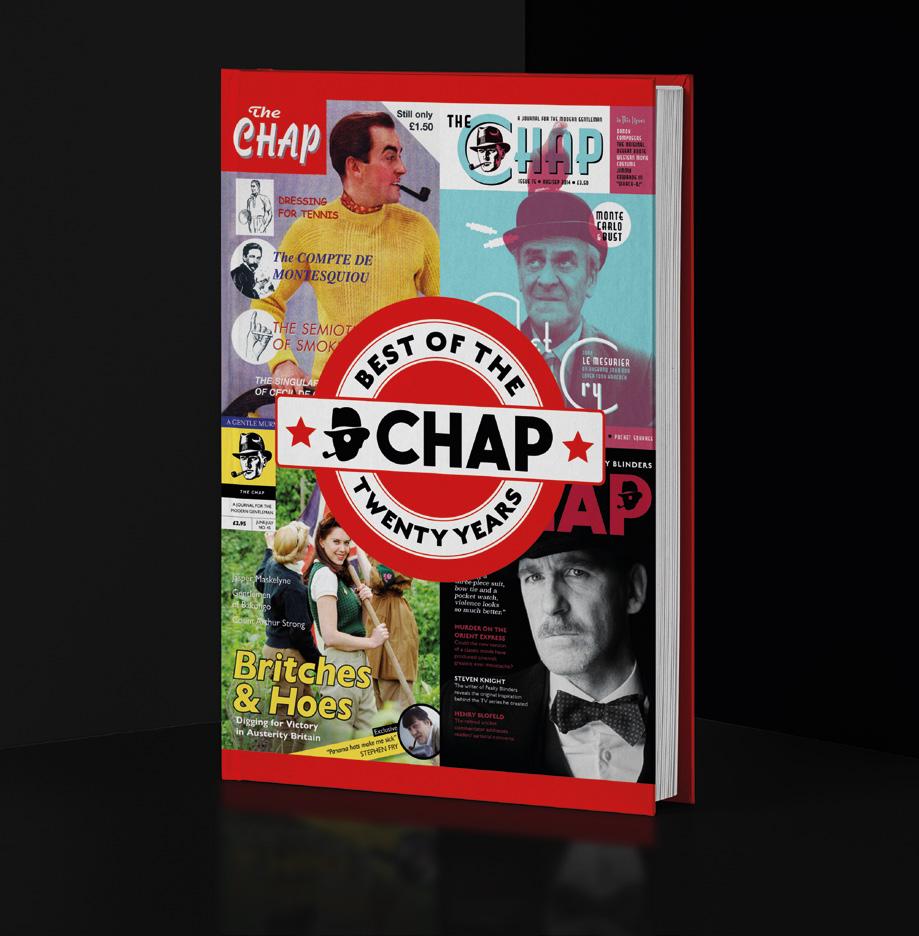
The handling and responsiveness of an MX-5 compared to the cars they were based on is on a different level, as is the reliability (I haven’t had a single problem with the car in the entire time I’ve owned it; my MGBs had tantrums on a regular basis, varying from serious outbreaks of rust to a fuel pump packing up in the middle of nowhere).

The MX-5 is a car which begs to be driven; the sight of a sign warning of bends in the road is like manna from heaven for an MX-5 driver, for this is where the car really comes into its own, scooting around curves in the road as if on rails, with a gearbox that allows quick, easy and responsive gear changes; the concept of jinba ittai becomes fully realised and you really don’t want the journey to end.
And yet I paid less for my car than I did for my mountain bike, despite it having only 32k on the clock and a full-service history. Indeed, shortly after I bought my MX-5, a friend picked up an NA model with pop-up headlights for under a grand; admittedly it was a bit tatty, but his car is a true classic sports car, which with a little care and tenderness can be restored to good condition, after which it will only go up in value.
When you think that the last MGB rolled off
the production line only nine years before the first MX-5 saw the light of day, it makes you wonder what might have been, had the people running the British motor industry attempted to improve on the sports cars which had made British car production famous worldwide, rather than knocking it on the head.
However, as motoring enthusiasts – especially those of us working with a limited budget – we should be thankful that Mazda brought their rider and horse together with such expertise to give us perhaps the best two-seater sports car ever built. And the MX-5 is here to stay – Mazda’s head of product development and engineering in Europe, Joachim Kunz, recently told Autocar magazine that the car is “… our brand icon and it is always treated very specially. At the moment, it looks like we will have this car forever, with this size and concept and combustion engine”.
Good news indeed for all those of us who like ‘real’ sports cars. n
The British MX-5 Owners’ Club is the world’s largest MX-5 owners club and a great place to start your search for an MX-5 www.mx5oc.co.uk






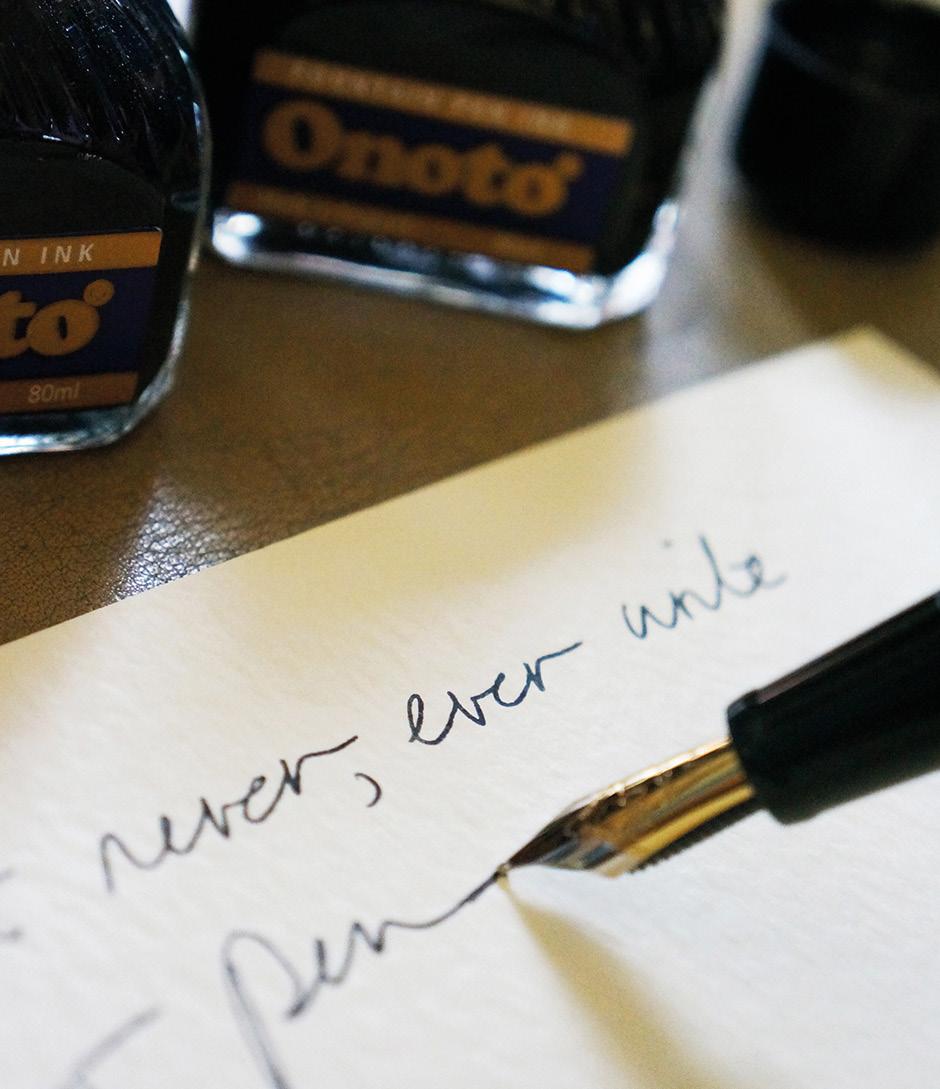
Ed Needham meets Tony King, publicist to such luminaries as Elton John, The Rolling Stones and The Beatles www.strong-words.co.uk
“Charlie Watts had these wonderful suitcases made by Asprey on Bond Street and everything in them was meticulously laid out. One time when the socks were all laid out, the colour range was perfect but I noticed one pair should be in front of the other. I said, “I think those should be there”, and he gave me a filthy look”
Tony King, 80, has spent over sixty years working in the music industry, gliding effortlessly in several roles among many of its biggest and most demanding names. His memoir The Tastemaker (Faber, £20) describes a life of helping huge stars, including the Ronettes,
the Beatles, Freddie Mercury, the Rolling Stones and Elton John, to present their finest faces to the world.
CHAP: You’ve been a publicist, a manager, involved in the organisation of gigantic tours, picked songs for labels and artists,

been the creative director of Vegas extravaganzas… there’s little besides getting on stage that you haven’t done in the music industry. Which aspect of your work has given you the greatest pleasure?
KING: I think in helping artists to promote their records or anything to enhance their career. The early thrill was working on records like Ketty Lester’s Love Letters (number 4 in the UK in 1961); that was a thrill for me to break a record like that. And when I worked with Cliff Richard in America on Devil Woman, to break Cliff in America was a fantastic achievement. Then also working with John (Lennon) on Walls and Bridges and getting him


a number one record with Elton (with Whatever Gets You Thru The Night), and orchestrating the Madison Square Garden concert in 1974. [The book describes a negotiation of UN level intensity to engineer the nervous Lennon’s joining Elton on stage.] But I also loved the promotion in the disco era. I was a huge disco fan and I loved going dancing. Right from when I was a teenager, I have always danced. Any job that involved dancing was fine with me.
CHAP: You have worked with some of the biggest stars of all, including Elton John, Mick Jagger and John Lennon, in some instances for decades. What enabled you to get on so smoothly with so many complicated characters?
KING: I’ve always been very straightforward, got a good sense of humour. All three of those people have a wonderful sense of humour, but I have always done a good job, I am efficient and I get things done. I have good taste, so I always tried to do things that they were happy with. With Mick, I used to work on the tours and would organise all the press, and once at the end of a tour he gave me
a beautiful gold brooch, because he knows I like brooches, with a little card which said, “Thanks for keeping it right.” So I just tried to keep it right for them, I guess.
CHAP: Lulu says you were a bit too much in the sixties and that she tried to avoid you at parties – what did she mean?

KING: Well, I was a bit outrageous and I was quite a party boy, and I think I might have been a bit loud. Lulu and I are great friends now and we laugh about that, and I say, why did you avoid me Lu, what was it? She says she used to say, “He’s too much, that Tony King, he’s too much.” We were at George Harrison’s one weekend and there was this supergroup playing in the living room, Eric Clapton and this one and that one, and I fell asleep on the sofa because we had been out so late the night before. I woke up and Klaus Voormann, a great bass player who played on a lot of John Lennon’s records, said, “Oh, here he is, the life and death of a party.”
CHAP: You were great friends with Charlie Watts – was there anyone who could touch
him as the best dressed man in music?
KING: No. And when Vanity Fair asked who his inspiration was, he said it was me. I went to Tommy Nutter before he did, and he made the first ever

suit for me, and I said to Charlie, you should try Tommy Nutter, I think he’d make nice things for you. But Charlie always looked elegant. Once in Madrid we went out for lunch and Charlie had this incredibly beautiful pink jacket on. We sat down in this posh restaurant and two guys who were obviously gay came in together, and I said to Charlie, “Oh, the gay element have arrived.” Later that evening at the show Charlie said to me, “Do you think they thought we were gay?” I said, “Well, you were the one with the pink jacket.”
CHAP: What would Charlie’s touring wardrobe have looked like?
KING: He had these wonderful suitcases made by Asprey on Bond Street and everything in them was meticulously laid out, the shirts, and some beautiful suits he would travel with, and the shoes – it was unbelievably organised. It was just that one time when the socks were all laid out, the colour range was perfect but I noticed one pair should be in front of the other. I said, “I think those should be there”, and he gave me a filthy look. Later at the show he came over to me and said, “You know what you said about the socks earlier – you were right.”
“Terence Stamp was someone I admired. He and Charlie were great friends because they both loved tailors and tailoring. And Bianca was pretty spectacular when she appeared on the scene. I remember seeing her backstage with Mick in Brighton, and thinking, wow, she is really something. She knew how to put a look together”“Thanks for keeping it right.” Mick Jagger
There were racks and racks of beautiful things in his house. He loved having things made in Savile Row, and the whole experience of going to the tailors. His Dad was a well-dressed man. That was where he got it from.

CHAP: Did he take more on tour than anyone else?
KING: No, his wardrobe was quite compact. He
just took a very well chosen selection of things. The two beautiful wardrobe cases he had held a certain amount of clothes and no more, and that was the way he travelled, a very sparse but very elegant wardrobe. Then he would change things around if we went home for a while. If we were going somewhere where it was a hot climate, in would go the linen suits, or if we were touring America in the winter, the winter clothes would go in.
CHAP: Who else did you look up to as particularly well dressed and elegant?
KING: Andrew Oldham (early Rolling Stones manager and industry alchemist). Andrew was the person who inspired me to dress nicely. He was the first person I saw who had lovely, tailored suits and he was always very elegant. Shirley Watts, Charlie’s wife, was a fantastically elegant woman. And Eric Clapton, especially in the days of Cream, was very smooth. He was a great dresser. Terence Stamp was someone I admired. He and Charlie were great friends because they both loved tailors and tailoring. And Bianca was pretty spectacular when she appeared on the scene. I remember seeing her backstage with Mick in Brighton, and thinking, wow, she is really something. She knew how to put a look together.

CHAP: Are there artists who you feel would have been more successful with proper guidance from someone such as yourself?
KING: There were bands that I saw that disintegrated because of drugs, like Guns ‘n’ Roses. I saw them when they were the support band for the Rolling Stones in Los Angeles, and I had a really nice talk with Axl Rose afterward. He was supposed
to be this very difficult, truculent artist who didn’t like gay people and I sat down and had a lovely chat with him. People like that could have done with somebody a bit more straightforward around them. I told him you have to be careful that the drugs don’t become number one, instead of the band being number one. You must always take care that you deliver the music because that is what is important, and don’t let your drug habit get in the way of that. I saw the Stones go through that perilous point after Exile on Main Street, but Mick and Keith pulled it together. There are probably quite a few people who one could give advice to, but the ones that I worked with took up a lot of my time [laughs].
CHAP: Do you still have an ear for a hit?
KING: I’ll always have an ear for a hit. I like Yola, I love Lady Blackbird. I’ll tell you one I really loved, and Elton turned me on to it: Gabriels, Love and Hate in a Different Time. I don’t listen to music much anymore, because it has kind of lost its fascination for me, but I am always open to hearing nice things. Elton is good at that. He listens to everything. He sends me stuff as well. Every so often he’ll play me something and say, “You’ll like this.” And nine times out of ten, of course, I will. n
The church may be losing inspirational ground badly to superheroes, influencers and leading figures from the world of professional sport, but when the phone at the vicarage rings, men and women of the cloth still pour forth as spiritual first responders. A commitment to do the best they can is often all they have to work with. One such is the Reverend Fergus Butler-Gallie, and this is his memoir of the first 12 months on the “cycle of festivals, fasts and feasts” that form the backbone of the Church of England schedule. New enough to the profession still to be rehearsing his elevator response to the enquiry, “What made you become a priest?”, he eventually goes with “I heard that black was slimming.” When then asked to lead the prayers at a Liverpool wake during the summer, he finds that, yes, the heavy woollen fabric of his cassock does slenderise – “in the way that hot yoga was slimming.”

While not without its moments of biblical contemplation and moral scrutiny, Touching Cloth, as the title perhaps hints, is a novice’s perspective on the inadvertently comic aspects of priesthood. After grabbing a fistful of serviettes to towel himself down after the sweltering

ceremony above, he later realises he has applied flakes of sausage roll to his forehead. A summary of items left for the harvest festival also stresses the anecdotal: a cake with a slice missing that has been crudely duct taped back into its box, and catering packs of branded muffins diverted from McDonalds. Christmas is not just an occasion to remember the saviour, but also one of a dependably regurgitative result when carol singing and excessive drink come together.
Even away from the big festivities, there’s an abundance of the sacred losing out to the profane, such as his recalling “one cleric, in Norfolk I think, who had a successful sideline in erotic fiction”, and “an infamous pet blessing service where, midway through proceedings, a large dog succeeded in scaring a hamster to death.” His amusement at the idea of the saints going “marching in” also takes hold as he tries to balance the lofty standards to which church and public holds its ministers when compared to the “bedraggled holy grouping” of the sainthood and its motley crew of limpers, bleeders and weirdos. He finds scratchcards a particularly good medium of communication with the poor, appreciated as much as a token of friendship as for their potential as an instant cash infusion, but too often the collection box is found smashed as well, a reminder of the rather pathetic limits of a vicar’s powers to address life’s immediate challenges. This “year in the life of a young priest” also ends rather shockingly, as after a stint in Liverpool and another in central London, he finds himself unemployed and lacking the “experience” for another immediate posting. In the betting for the next Archbishop of Canterbury then, the name Fergus Butler-Gallie may appear against some spectacularly long odds, but as a facilitator in the C of E’s increasingly desperate recruitment of
souls, in Touching Cloth he does more to recommend the church than most.
Companies who depend on the integrity of their tech often like to test their systems against break-in, especially as there’s inevitably a glaring vulnerability – a person – somewhere in the chains of ones and zeros. For a fee, Jenny Redcliffe will talk her way –or break – into your HQ, access your computers, text you from your own phone and leave you bathed in shame at how your multi-million spend on corporate security is no defence against blind spots in human psychology. Her suitability for this task revealed itself early, when, as a child in one of Liverpool’s rougher districts, she once strolled uninvited into the house of a stranger to use their bathroom in an emergency and discovered that she lacked the traditional ‘flight’ response to being somewhere she shouldn’t. This prompted her, as a schoolgirl, to tour all manner of guarded facilities uninvited, from office blocks to funeral parlours and Glastonbury festival. And as an adult she then exploited this portfolio of skills to become a ‘penetration tester’, a piece of jargon to describe an ‘ethical con artist and burglar for hire.’ More than 600 buildings and their precious digital contents have since fallen prey to her ingenuity as a ghostlike intruder. People Hacker includes many of the pulsequickening highlights.

The Suez crisis in 1956 confirmed the empire was over, the exchequer was bare and another revenue stream was needed sharpish. But not all of Britain’s colonial skills were redundant (“Britain wasn’t the biggest bully in the class anymore, but it still knew an awful lot about the bullying business.”) It also had some handy dominions and the City, run by a tiny group of men on first name terms since school days. They shared outlook, international networks and access to wealth and power, plus a preparedness to do business with whomever they chose; to see the ‘neutrality’ of the money, not the reputation of the client. This shortsightedness was lucky, because “Britain’s clients are some of the worst people in existence.” By allowing companies to use a letterbox in the Caymans or BVI, the newly ‘resident’ entities could sunbathe tax-free while island economies and enablers fattened themselves on a buffet of fees. Thus ‘offshore’ took root. “In the beginning, few questions were asked because we wanted to be successful,” says one of the system’s well-heeled architects, “So undoubtedly rogues took advantage of what was on offer.” “However bad other countries are, Britain has been worse,” says Bullough. “It operates as a gigantic loophole, undercutting other countries’ rules, massaging down tax rates, neutering regulations, laundering foreign criminals’ money.” Well done, Britain.

Taking as its inspiration the resistance efforts of a real Irish priest in the wartime Vatican, My Father’s House describes the preparation and execution of a daring exercise to assist allied POWs on the run, by Father Hugh O’Flaherty and his courageous network. In the Rome of December 1943, the occupation is headed by the ambitious Obersturmbannfuhrer Hauptmann. He is driven to fresh intensities of frenzy and sadism by threats to his career from Himmler, himself on the end of Hitler’s frequent hair-dryers over the numbers of allied prisoners escaping toward protection in Rome. Hauptmann has his eye on Fr. O’Flaherty, so all Vatican-based subversion requires tremendous guile and courage. His task is less in the logistics of prisoner transport, more in the sourcing and delivery of cash, disguises and stolen or forged documents, and the book counts down to a ‘performance’ – a treacherous series of drop-offs – on Christmas Eve, interspersed with later testimony from those involved. The events themselves are marbled with tension, the voices of the participants each clear and distinct, and in spending long hours in close study of

Vatican passageways, church buildings, gardens and graveyards, the author has found a secret entrance back to 1943, making this representation of its fears, hardships, curfews and risks feel as authentic as the most delicate forgery.
Those with the energy to remember the eighties may recall it as a bit of a pastiche decade: lots of retro sunglasses, sixties hits performed on synthesizers and, when out of ideas, which was often, resorting to an all-black wardrobe. In Less than Zero and American Psycho, Bret Easton Ellis roped off the flashy and bored/rich LA/NY part of the map, full of emotionally comatose, amoral and brand-fanatical young people. In The Shards he returns to write his own foundation myth. In 1981, at an exclusive Los Angeles high school called Buckley College, future novelist Bret is part of an elite foursome of friends. He is languidly dating a prominent beauty, but prefers boys. An attractive new kid called Robert then arrives at the academy and infiltrates the clique, but his appearance coincides with a creepy crime wave, itself the prelude to the emergence of a new serial killer in town called ‘the Trawler’, who seems especially interested in Bret and his cooly-cool friends.

Rarely without the support of the finest narcotics, Bret is desensitized and indifferent to the Trawler’s taunts and barbarism, but still summons sufficient focus to pursue the maniac, who may or may not be the glamorous classmate.
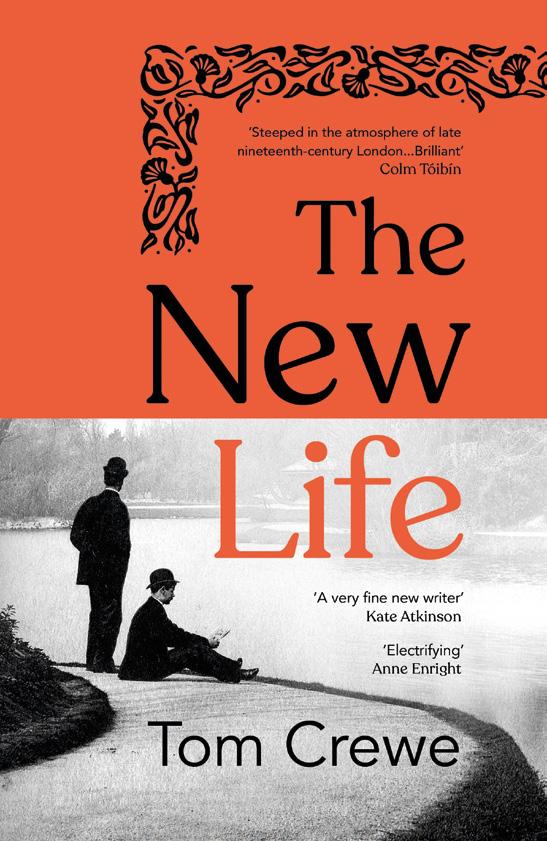 By Tom Crewe (Chatto & Windus, £16.99)
By Tom Crewe (Chatto & Windus, £16.99)
Set in the last few years of the 19th century, two men establish a correspondence over the poetry of Walt Whitman, and find common ground in the American’s coded enthusiasm for same-sex activity as noble and natural. One is Henry Ellis, based on the pioneering scholar of human sexual behaviour, Havelock Ellis. The other is John Addington, based on a driven man of letters called John Addington Symonds. Addington, married and with three grown daughters, has always known himself an ‘invert’, and nervously allows himself to be picked up while enjoying the sight of men bathing in the Serpentine. The law, meanwhile, is less coy on the topic. Those found guilty of offending can expect a sentence of hard labour of between two years and life.
Ellis and Addington feel that the best way to fight against this cruel injustice is to combine their intellectual dynamite and write a book. The esteemed scholar Ellis will make the medical case, that there is no evidence in science for such attraction being ‘unnatural’, sinful or deviant. Addington will write the chapters arguing that if same-sex attraction was so exalted in civilisations as admired as ancient Greece and Rome, then why not now too, when society is bursting with a sense of steam-driven progress and sophistication? Besides, obliging ‘inverted’ men to wear the mask of respectability by marrying generally leads to two lives ruined – what possible benefit might society gain from such an absurd configuration? By publishing Sexual Inversion , the men believe, they will ignite a forest fire of debate to sweep prejudice away – and the vicious law with it. Addington, emboldened, even moves his lover Frank into his house under the guise of his
‘secretary’. His weary wife Catherine, long aware there’s nothing for her in this marital arrangement, accepts, on the condition that Addington does nothing to bring shame upon the family or cause the servants to gab. Only he hasn’t told her about this controversial book he’s got in the works. Trouble ahoy. And there’s also a nasty weather front of prejudice settling over the country with the Oscar Wilde trial, a magnificent opportunity for the press to thunder about morality and disgust. How much stomach do the protagonists have to compete with Wilde as the public face of ‘obscenity’ by making their stand? Are they sure they want to go ahead with publication? The threat of prison and public humiliation can play havoc with the best of intentions. And freedom of speech is one thing, but lending support to genuine homosexuals – not everyone’s quite there with the solidarity, it seems. In methodically assembling his exquisite network of dilemmas and impossible choices, the author, a historian of the late-Victorian period, takes exceptional delight in the precision of his depictions. From the vivid wet dream scenario in an overcrowded tube carriage that kicks things off, The New Life is set in a London of subtle but inescapable pressures on the senses. The human body cannot help but respond to all the world’s innumerable stimuli, he implies, however much the polic e, the press and the censorious public would wish otherwise. n
Stephen Arnell asks whether Peter Medak’s 1972 aristocratic satire starring Peter O’Toole has finally come of age
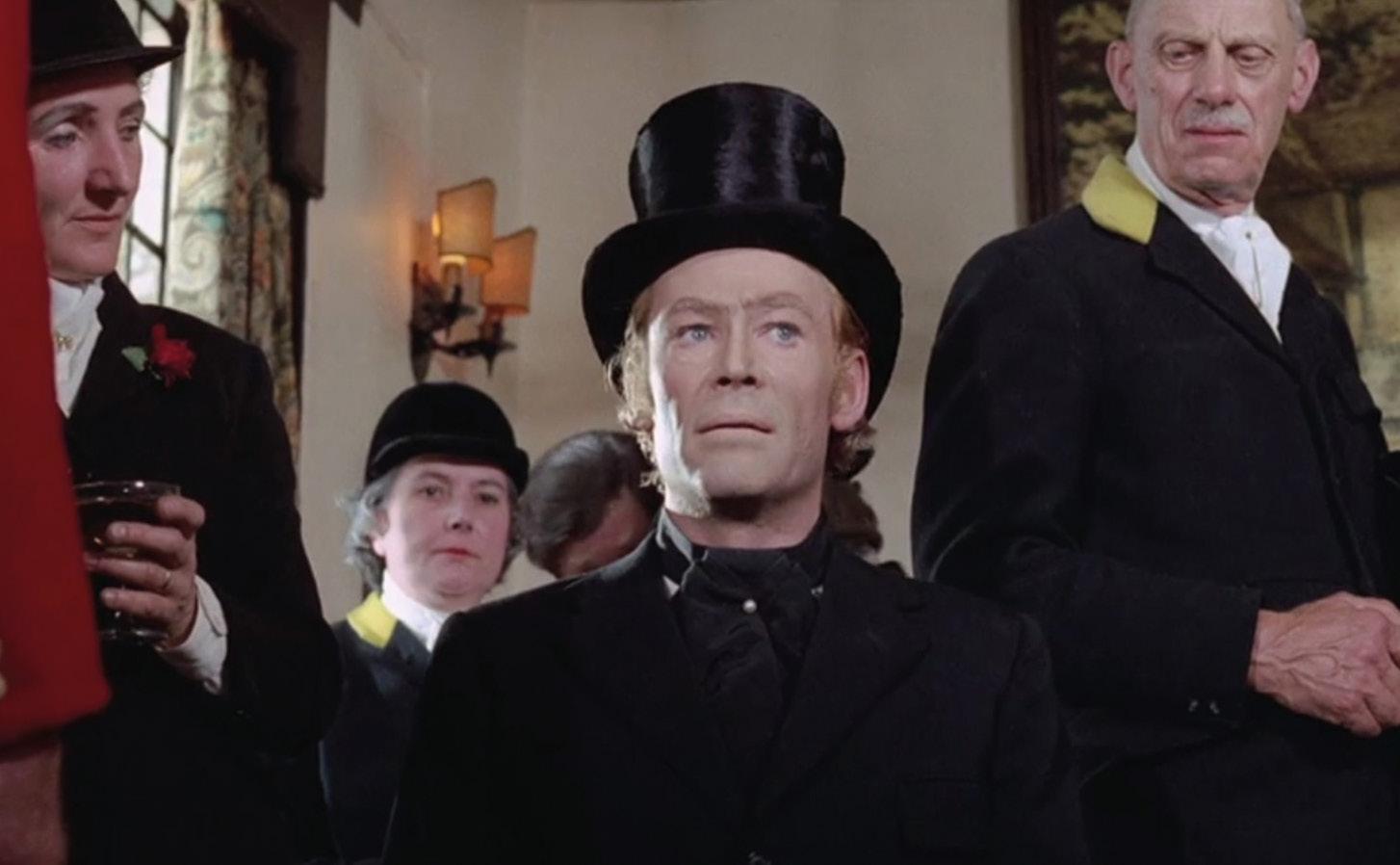
“Remember, he’s suffering from delusions of grandeur. In reality he’s an earl, an English aristocrat, a member of the ruling class. Naturally, he’s come to believe there’s only one person grander than that: the Lord God Almighty Himself”
Michael Bryant as Dr Herder in The Ruling Class
Apassion project for acting legend Peter O’Toole (he worked on the movie without payment), The Ruling Class celebrated its 50th anniversary last September, a largely unrecorded event that nonetheless prompted some to revisit the unfairly overlooked picture.
Adapted by Peter Barnes from his 1968 stage play, the film mercilessly depicts the English aristocracy, warts and all, with their delusions, hypocrisy and inbred sense of superiority on full display. Some may well think that The Ruling Class has particular relevance to today’s fractured United Kingdom – and it’s difficult to gainsay that opinion, as O’Toole’s unhinged 14th Earl of Gurney pursues his Messianic vision of a country where capital and corporal punishment are reintroduced to put the serfs back in their place.
A decidedly odd picture, The Ruling Class mixes black comedy, impromptu musical numbers (including fun renditions of Dem Bones and Varsity
Drag) and whiplash lurches into Hammer Horror territory. O’Toole sang the numbers and he’s not a bad vocalist, although apparently not good enough for the same year’s Man of La Mancha, where his singing voice was dubbed by actor/tenor Simon Gilbert.
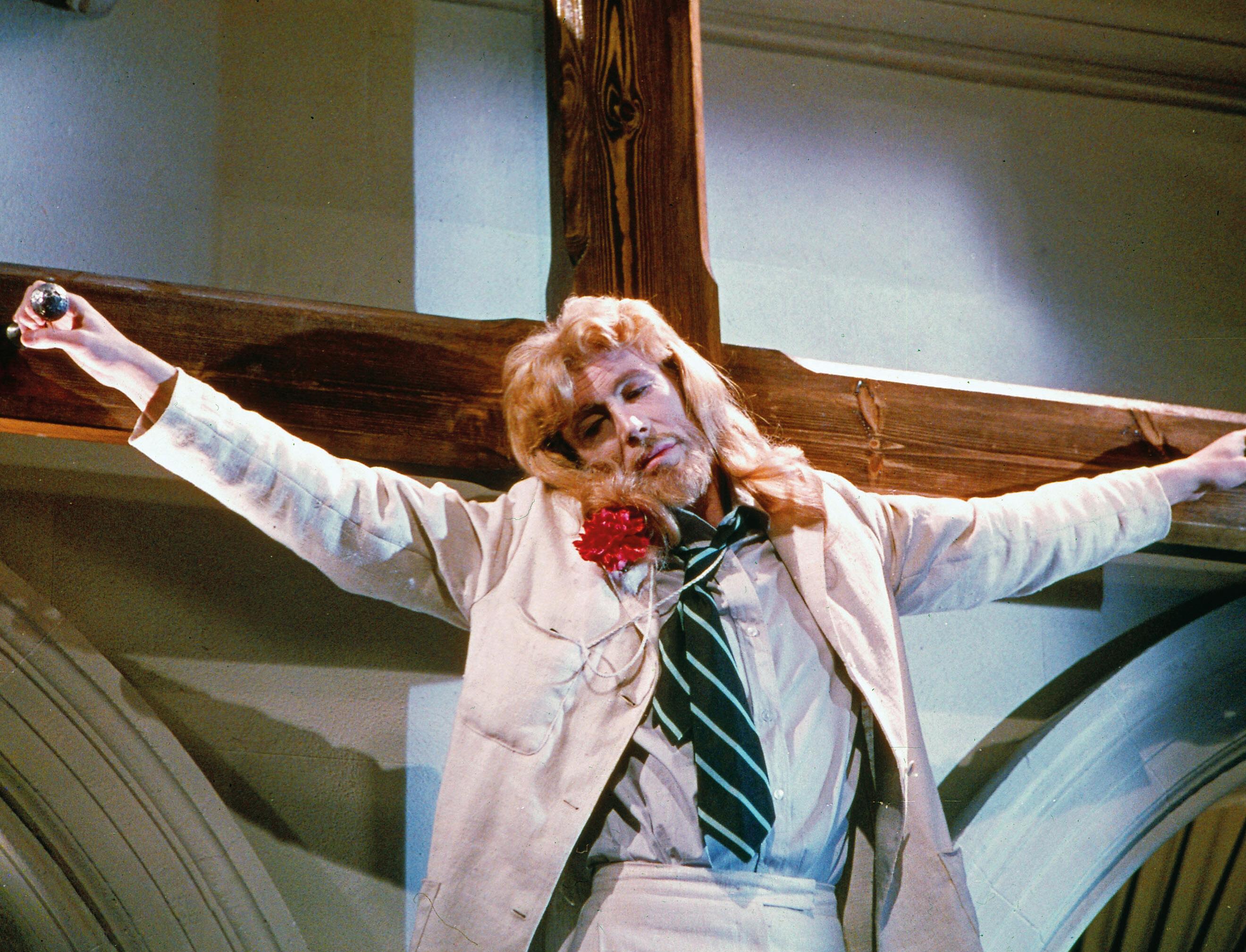
Hungarian expat director Peter Medak was a sympathetic translator of the play for the screen, having previously helmed the likes of A Day in the Death of Joe Egg (1972) and the bizarre Negatives (1968). But it must be noted that Medak’s film was anticipated by Peter Watkins’ Privilege (1967), Lindsay Anderson’s If (1968) and Kevin Billington’s The Rise and Rise of Michael Rimmer (1970).
Despite his many dissipations, O’Toole still looks pretty good in the picture (and wears hunting rigout especially well), but by the end of the decade his largely self-inflicted physical decline was irreversible; the actor’s famous film-star looks (which once prompted Noel Coward to quip, “If O’Toole had been any prettier, they would have had to call the movie Florence of Arabia”) a thing of the past.




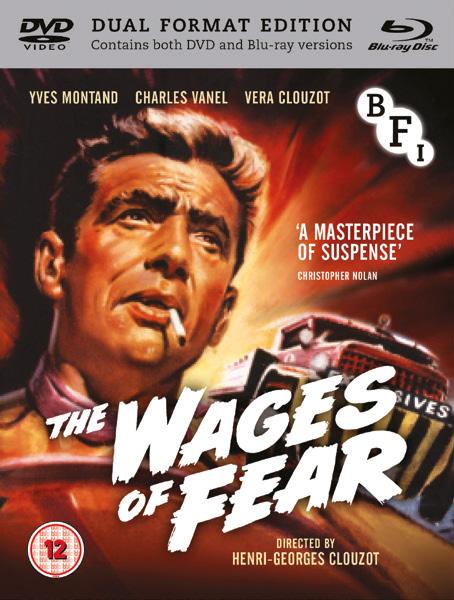


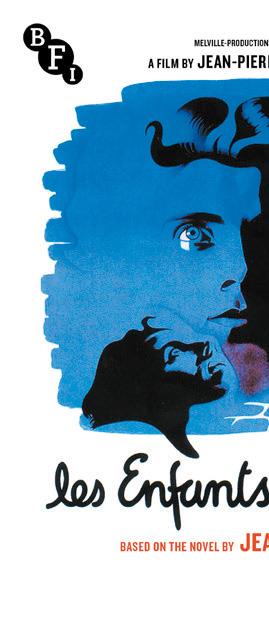


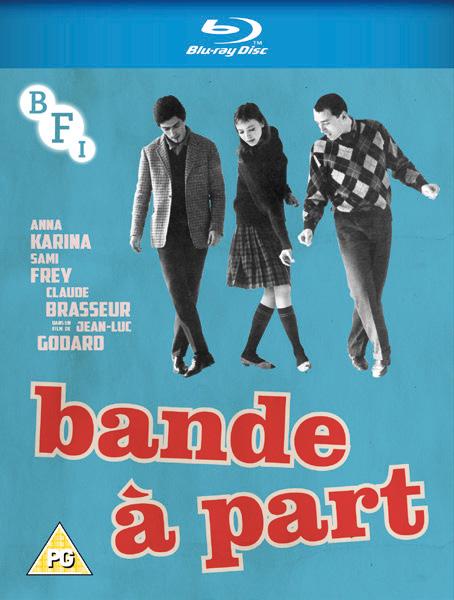





ORDER FROM SHOP.BFI.ORG.UK

The actor threw himself into the role of Jack Gurney – who’s mania leads him into believing himself variously as Jesus returned and (post electroshock therapy) Jack the Ripper. O’Toole’s manic enthusiasm energised the supporting cast of British stage and screen veterans Harry Andrews, Arthur Lowe, Graham Crowden, Michael Bryant, Alistair Sim and Coral Browne. Andrews in particular let what was left of his hair down.


Although he had co-starred in Douglas Hickox’s adaptation of Joe Orton’s Entertaining Mr Sloane (1970), Andrews was hitherto thought of as
one of the Old Guard of UK acting talent. So it was a surprise to see him as Ralph Gurney (13th Earl of Gurney) donning a tutu and committing unintentional suicide via auto-erotic asphyxiation (“just time for a quick one”) during the opening scenes of the picture, something one couldn’t imagine the likes of stiff-backed Thatcher supporter Anthony Quayle doing.


Perhaps also surprising is the presence of Jack (The Cruel Sea) Hawkins as co-producer (with O’Toole’s Keep Films partner Jules Buck) of The Ruling Class. Hawkins bonded with the younger actor on the set of David Lean’s Lawrence of Arabia, where both enjoyed poking fun at the elephanteared director’s many pretensions, improvising humorous dialogue on set, which enraged the thin-skinned Lean.
One actor who didn’t join in the Lawrence of Arabia hi-jinks was Alec Guinness, who commented later that, after O’Toole misbehaved badly at a local dignitary’s house, he “could have been killed, shot or strangled, and I’m beginning to think it’s a pity he wasn’t.”
“Yes, he’s a nutcase. Most of these titled fleabags are. Rich nobs and privileged arseholes can afford to be bonkers. They’re living in a dreamworld, aren’t they, sir? Life’s made too easy for ‘em. They don’t have to earn a livin’, so they do just what they want to.” – Tucker the Butler
 (Arthur Lowe)
(Arthur Lowe)
“Some may well think that The Ruling Class has particular relevance to today’s fractured United Kingdom – and it’s difficult to gainsay that opinion, as O’Toole’s unhinged 14th Earl of Gurney pursues his Messianic vision of a country where capital and corporal punishment are reintroduced to put the serfs back in their place”“Just time for a quick one.” Ralph Gurney (Harry Andrews)
Third-billed Arthur Lowe is a revelation in The Ruling Class. Those familiar with the actor from his role as Dad’s Army’s pompous Captain Mainwaring will be shocked and awed by his passionate performance as Marxist butler Tucker, probably the most sympathetic character in the picture. Let’s not forget that the Dad’s Army star had already ploughed an interesting sideline in arthouse cinema, featuring in Lindsay Anderson’s Mick Travis trilogy (If, O Lucky Man, Britannia Hospital), Theatre of Blood, the aforementioned The Rise and Rise of Michael Rimmer, The Bed Sitting Room and Fragment of Fear – as well as in prestige television mini-series including Brideshead Revisited and Richard Burton’s Wagner. Also worth mentioning in a cast of British acting notables is Zulu/Ipcress File star Nigel Green. Visibly depressed during the production, some of Green’s dialogue was given to fellow cast member Graham Crowden, presumably to lessen the pressure on him. Green was also Hercules in Ray Harryhausen’s Jason & The Argonauts (1963), in which John Cairney played the demi-god’s chum Hylas. In Cairney’s biography East End to West End, he recalls his first meeting with Green: “Big Nigel looked down at me in my little belted white tunic
they,
and sandals, my hair newly curled with tongs and laughed: “I see they’ve picked a queer to play a queer.”
Medak’s career after The Ruling Class pursued a distinctly mixed path, including schlock such as Zorro, The Gay Blade (1981) and Species II (1998).
Writer Peter Barnes made a splash in 1985 with his Olivier-winning Black Death-themed Red Noses, but for the latter part of his working life was chiefly involved in churning out scripts for Hallmark miniseries including Merlin, Noah’s Ark, A Christmas Carol,

“Yes, he’s a nutcase. Most of these titled fleabags are. Rich nobs and privileged arseholes can afford to be bonkers. They’re living in a dreamworld, aren’t
sir? Life’s made too easy for ‘em. They don’t have to earn a livin’, so they do just what they want to”“Like every prophet, I saw visions, I heard voices, I ran.”


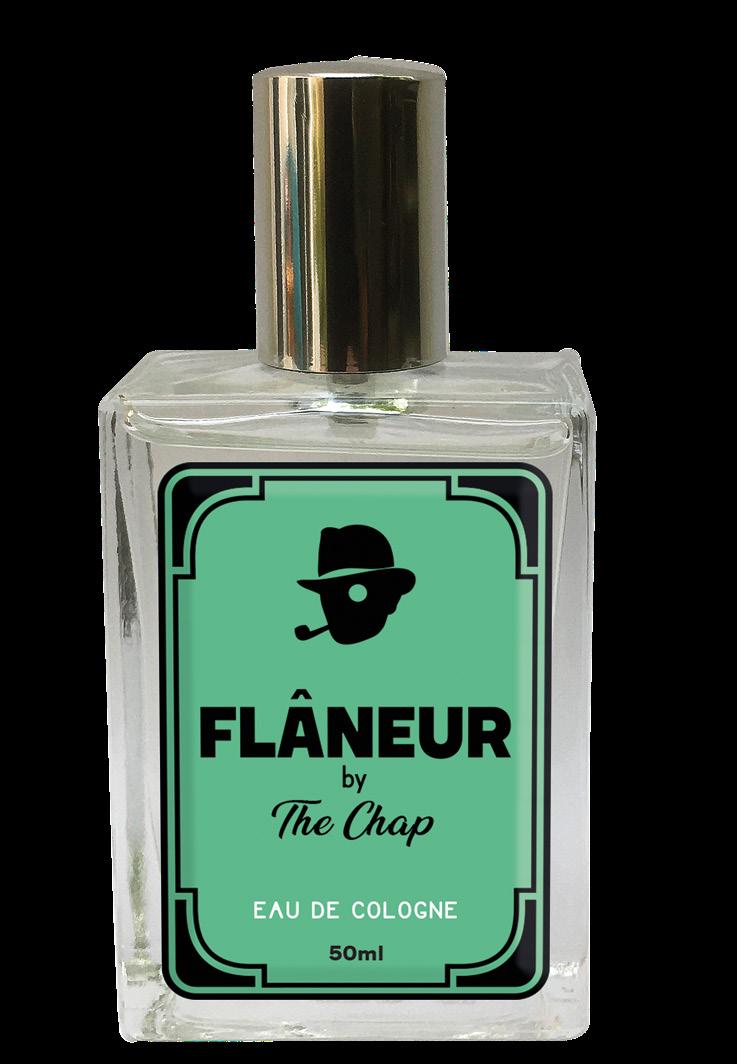
Alice in Wonderland and Arabian Nights.
In 2015 The Ruling Class was revived for the West End stage, with a typically exuberant James McAvoy (not known for his underplaying) taking O’Toole’s role. And as for O’Toole, he carried on working almost until his death aged 81 in 2013, in movies both good and (mainly) bad, but remaining an engaging presence on the chat show circuit who could always be relied upon to provide good value. Witness his celebrated interview with David Letterman in 1995, when the actor rode in on a camel, nonchalantly puffing on a cigarette. O’Toole, not the camel. The dromedary did however enjoy the can of Heineken the actor offered the thirsty beast.
Fortunately for Chap readers, a very decent print of The Ruling Class is free to watch on both
Amazon Prime and YouTube, where one can appreciate the crisp cinematography of Ken Hodges (The Jokers) and John Cameron’s score. Cameron also composed the music to Peter Cook’s The Rise & Rise of Michael Rimmer, joining Arthur Lowe in uniting these two arthouse curios.
Production design for The Ruling Class was in the very capable hands of Peter Murton (The Eagle Has Landed/Death on the Nile, art director on Goldfinger), while Ruth Myers (L.A. Confidential/ The Russia House) took care of costuming, aided by veteran wardrobe master ‘Tiny’ Nicholls (The Devils/ The Empire Strikes Back).
“Like every prophet, I saw visions, I heard voices, I ran. The voices of Saint Frances, Socrates, General Gordon, and Timothy Leary, they all told me I was God. It was Sunday, August the 5th, at 3:32.” n


Ruby Demure steps into the footsteps of Marlene Dietrich, Lauren Bacall and Diana Dors on the boards of the Theatre Royal, Brighton, during a production of An Inspector Calls

“I snuck into the Principal Dressing Room to see the floors that Dietrich scrubbed ahead of her performances as part of her pre-show rituals, and wound my way through the bowels of the building to find the famed ‘Gulp Bar’, where performers including Richard Burton, John Gielgud and Peter O’Toole all enjoyed a drink stage side, even mid-performance”
As I stood in Dressing Room 4 of the Theatre Royal Brighton, dressed in my gorgeous original 1940s costume, I was reminded of the words of the iconic Marlene Dietrich when she said, ‘Glamour is what I sell. It’s my stock in trade’. Dietrich herself performed her one-woman show here in 1965, but now it was my turn to tread the boards.
Tonight I was performing in An Inspector Calls, the classic thriller written by J B Priestley in a single week in 1945 as a scathing criticism of capitalism and Edwardian English society. The play is set in a single night in April 1912 but this production, directed by Stephen Daldry, employs the use of characters and motifs from the 1940s to show the relevance of its socialist message of collective
responsibility to the audience at the time of its premiere, as well as the audience of the present day. Since 1992, Daldry’s production has won a total of 19 major awards, including four Tony awards and three Olivier Awards, and has played to over four million theatregoers worldwide. In fact, it is the most internationally lauded production in the National Theatre’s history. No pressure then.
As one would expect for such an acclaimed production, the sumptuous costumes and the ingenious sets transport the audience back in time. Every detail has been thought of and no expense spared; the wig on my head alone was worth almost £4,000. It was a vintage enthusiast’s dream. Even more special then, that I was performing the play in my favourite place: the magnificent Theatre Royal, dripping in history and original detail, almost unchanged since it first opened in 1807. In 1900, Brighton had more theatres than any other British city outside London, and The Theatre Royal was, and still is, its crown jewel.
Mrs Ellen Elizabeth Nye Chart, a thespian herself and one of the very first female theatre managers, took over the Theatre Royal following the death of her husband in 1876. Her statue still stands in the Royal Circle bar and, legend has it, she still walks these narrow winding corridors as the Grey Lady, accompanied by at least four other ghostly friends. It is easy to believe that this building is haunted. Every room is so full of stories

“It is easy to believe that this building is haunted. Every room is so full of stories and secrets, the ancient floorboards creak with every footstep and the endless networks of dimly lit tunnels are enough to play tricks on the mind”
















and secrets; the ancient floorboards creak with every footstep and the endless networks of dimly lit tunnels are enough to play tricks on the mind. I didn’t experience any paranormal activity during my stint there, but I certainly didn’t hang around when the lights went out either.
Everyone who is anyone has performed here: Laurence Olivier, Charlton Heston, Noel Coward,
Lauren Bacall, Diana Dors and of course the great Marlene Dietrich herself, to name but a few. Their pictures adorn the backstage corridors and their legends live on through the stories of the people who work there. I snuck into the Principal Dressing Room to see the floors that Dietrich scrubbed ahead of her performances there, as part of her pre-show rituals, and wound my way through the bowels of the building to find the famed ‘Gulp Bar’, where performers including Richard Burton, John Gielgud and Peter O’Toole all enjoyed a drink stage side, even mid-performance.
The Theatre closed its doors in March 2020 amid the Covid pandemic, when many feared that live theatre might never be seen again. But finally after 16 dark months – the longest period of closure in its history – the Royal cautiously welcomed back audiences desperate to experience the thrill of live entertainment again. A year on, and the auditorium was full to its 960-seat capacity, and the fear and

“One last blast from the fog machine, one last walk on to the cobbled stage, and then the final curtain call standing next to some of the finest theatre actors in the country”


unease of the lockdown felt like a dark and distant memory.
And now it was time. I was waiting for my final call to the stage after a week of nine sold out performances. My last moments waiting in the wings, listening to the rapt silence of the audience, so close I could almost feel their breath on my face. One last blast from the fog machine, one last walk onto the cobbled stage and then the final curtain call standing next to some of the finest theatre actors in the country. As we took our bows, and the audience roared their applause, I tried to absorb it all. The history, the magic, the glamour. It’s impossible to capture that feeling for long, but to my mind at least, there’s nothing else like it in the world. To quote Dietrich again, ‘Glamour is assurance. It is a kind of knowing that you are alright in every way’. n
An Inspector Calls continues its tour of the United Kingdom until April 2023


The Oscar Wilde Society invites you to try, in its annual Wilde Wit competition! This is your chance to dazzle us with your brilliant bons mots. This competition, co-sponsored by Chap and The Oldie, is open to everyone with a flair for epigrams, aphorisms and quips; be they funny, profound or paradoxical.

Last year’s winners took the prizes with some truly Wildean witticisms:
the mirror or not at all.”
Darcy Alexander Corstorphine
There are only two sources of sorrow in this world: one is a lack of understanding, the other is an excess of it.”
Darcy Alexander Corstorphine
Now it’s your turn. The Wilde Wit Competition rules are simple:
• Write an epigram, witticism or statement that sounds like something Oscar Wilde would have said. (Note: It can reflect modern sensibilities as well)


• Up to 10 entries allowed per contestant
• Submit your entries at oscarwildesociety.co.uk/wilde-wit
• Enter by 15th April 2023
• All entries must be original

• Anyone can enter
Three winners will be named, with the first prize being a signed copy of Constance Wilde’s Autograph Book, the marvellous new hardcover publication from the Oscar Wilde Society, edited by Devon Cox.
We’ve even made the contest a little easier this year. All three previous years have been won by the same person, Darcy Alexander Corstorphine. This year, he has graciously bowed out to act as a judge instead. Now you don’t have to beat him – you just have to impress him.
So sharpen your quills – it’s time to show us how wise, witty and wonderful you can be!
A moment of reflection should be taken before
The quickest way to make your name is to lose your reputation.”
Robert Eddison
Truth is the name we give to the lies we like.”
Silvia Gasparini
John Minns provides, written in Indian ink, a brief timeline of the fountain pen, and relates how the manufacturers eventually managed to prevent people from having dark blue spots on their shirts

The basic definition of a Fountain Pen (known earlier as a Reservoir Pen) is that it has an internal reservoir shaft that can contain ink, and an applicator at its end (a nib) to facilitate this application of the ink stored within. The first fountain pen patented in England was by Frederick Bartholomew, Folch of Oxford Street, London, in 1809. However, its historical origin, inception and invention went back much further than Folsch’s patent of 1809.

Early records dating from Egypt c. 974 AD show how Caliph Al-Mu’izzli Din Allah requested a pen that “would not leak and stain his clothes and that would only spill ink when held upside down”. He would later be given a reservoir pen. Leonardo Da Vinci’s drawings from one of his journals in c. 1500 show images of a reservoir pen. Many years later, modern engineers would reconstruct the pen, taken from Da Vinci’s original manuscript, and found that the pen worked perfectly.
Many years later, in August 1663, Samuel Pepys wrote in his diary, “This evening came a letter about business from Mr. Coventry (Sir William Coventry) and a silver pen he promised me, to carry ink in, which is necessary.” Only just prior to this time, reports were arriving from France that ‘silver pens that carry ink’ were circulating around

Parisian craftsmen. Shortly later, in around 1689, Nicolas Bion (a French scientific instrument maker) patented his pen with the title ‘La plume sans fin’ –the endless pen, which could carry ink.
Over the next hundred years and into the following century, the ink pen, with numerous adjustments and improvements being made and a multitude of patents submitted by various inventors from across the globe, would eventually morph into the fountain pen we know and recognise today. Notable, innovative, and creative pen manufacturers like Waterman, Sheaffer, and Parker would be there to make the finishing touches, swiftly followed by brands like Onoto and Yard-O-Led.
Sir Arthur Conan Doyle used a Parker Duofold pen when writing his later novels. Stephen King used a Waterman-Hemisphere to write his novel Dreamcatcher. Ernest Hemingway chose a Sterling silver Montegrappa model 402 to write A Farewell To Arms and For Whom The Bell Tolls, while Sir Winston Churchill used a Red-Dwarf by J Kearney for his sketches and drawings, and a Conway-Stewart Self-filling Stylos as his preference for writing. Albert Einstein gave his friend Paul Ehrenfest his fountain pen. It was a rather special pen; Ehrenfest would later say, after receiving the pen, “All of his (Einstein’s) written work between 1912-1921, including all of his designs and calculations on the theory of relativity during that period, were written with that pen. The pen was a Waterman Taper In-Cap. “It was a wonderful gift.”





There could hardly be a more perfect item for the budding collector, as antique fountain pens are in plentiful supply and a collection can be started by investing just a few pounds, by finding them at boot sales, antiques fairs and auctions.
Fountain pens are easily stored and take up very little space, and have obvious practical use if required. They also make marvellous gifts, hopefully encouraging the recipient to abandon their biro pen in favour of something that produces a more elegant hand on paper. What could be more delightful than shaking hands later with said recipient, and noting that their fingers are stained with black, blue or even green ink (for the more Bohemian fountain pen user)?
HERITAGE COLLECTABLES
Based in Surrey, UK and Normandy, France, they buy and sell vintage writing instruments.

1818 AUCTIONEERS
They hold bi-annual auctions offering pens and associated items in Cumbria.
DREWEATTS 1759 LTD
Offers a fine selection of pens throughout the auction calender at Newbury.
VINTAGE PEN COLLECTORS CLUB
A Facebook group for sales, swapping, comments and bartering.
Readers are invited to ponder the purpose of this issue’s antiquity conundrum, and one provider of the correct answer wins a superb pair of Fox Cufflinks.

Send your answer to chap@thechap.co.uk
David A. Cain correctly identified last issue’s Flummoxer as a carving knife rest from the Victorian era.



Our ever expanding range of gentlemen’s requisites and elegant sartorial adornments now includes a hip flask, a cocktail shaker, several gentlemen’s fragrances, shaving soap, after-shave balm, lapel badges and silk pocket squares. The Chap Watch, available in black or cream, is also now back in stock




All these products are exclusively available from WWW.THECHAP.CO.UK




“When
wear clothes you make statements. If you choose not to make an effort, that in itself is a statement. I think you should express your personality in what you wear”

Instead of the usual price of £28.00 for four issues per year, by taking up this offer the recipient will become an annual Chap subscriber for just £14.00, precisely half the usual cost, which still includes free postage. The offer is available in the EU for £19 and elsewhere in the world for £24. The subscription can be cancelled after one year if no longer required.

Solutions to crossword 114, CHAP Winter 22
7. Amazing Considine lacks no powers (7)
9. Besotted, I’ve embraced Nelson’s oddities (2,4)
7 Amazing Considine lacks no powers (7)
10. What’s in The Mail regarding Noel? (9,5)
9 Besotted, I've embraced Nelson's oddities (2,4)
11. Weight of slanderous allegations about Bishop took toll (8)
12. Slavic torch bearing champion (6)
10 What's in The Mail regarding Noel? (9,5)
13. The Ruling Class actor is eccentric and risqué (11)
17. Starter of smoked offal? It’s a thin piece (6)
3 Audible exhale preceeding The Reaper (6
1. Hindu deity starts to nap upstairs after fiveish (6)
2. Robin Williams for one dare danced around liberal leader of Belgium (2-6)
4 Find out Detective Inspector's false identity (8)
3. Audible exhale preceeding The Reaper (6)
5 Leader of Byzantine circle (6)
4. Find out Detective Inspector ’s false identity (8)
5. Leader of Byzantine circle (6)
11 Weight of slanderous allegations about Bishop took toll (8)
6. The feat of avoiding capture when taking drug for hip replacement (7)
6 The feat of avoiding capture when taking for hip replacement (7)
8 Family farms but baby needs hugs (13)
8. Family farms but baby needs hugs (13)
12 Slavic torch bearing champion (6)
19. Sandwich shop at number one possessed by spirit caused hysteria (8)
22. Cockiness ends off-licence arrangement (4-10)
23. Form a whole company to get present (6)
13 The Ruling Class actor is eccentric and risque (11)
24. Last drop of bitters I dashed over brandy cocktail (7)
17 Starter of smoked offal? It's a thin piece (6)
19 Sandwich shop at number one possessed by spirit caused hysteria (8)
14. Concluding dangerous and cheap firework was what projected out of the wheel (8)
14 Concluding dangerous and cheap firework was what projected out of the wheel (8)
15. It’s real in Brazil (8)
15 It's real in Brazil (8)
16. Flower from upset Mafia taking death to heart (7)
18. Kilmer gets Universal editor appraised (6)
20. Scottish landowners with den on outskirts of Dumfries (6)
16 Flower from upset Mafia taking death to heart (7)
21 Open a bottle of Irish port after Union ends (6)
18 Kilmer gets Universal edi tor appraised (6
22 Cockiness ends off-licence arrangement (4-10)
23 Form a whole company to get present (6)
24 Last drop of bitters I dashed over brandy cocktail (7)
20 Scottish landowners with den on outskirts Dumfries (6)
21 Open a bottle of Irish port after Union ends (6)


